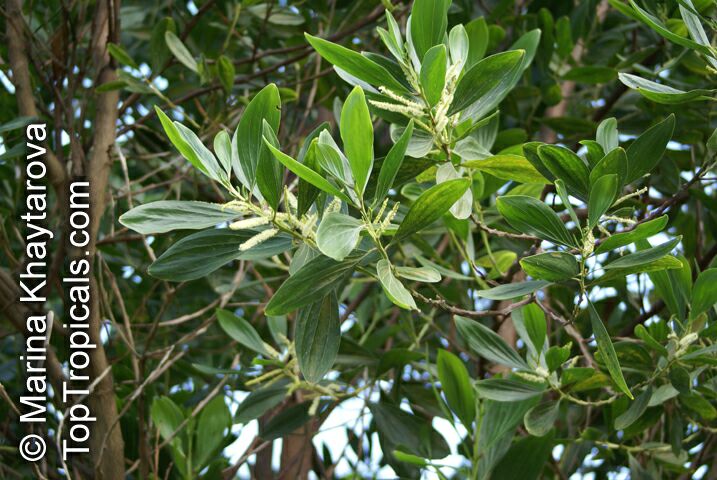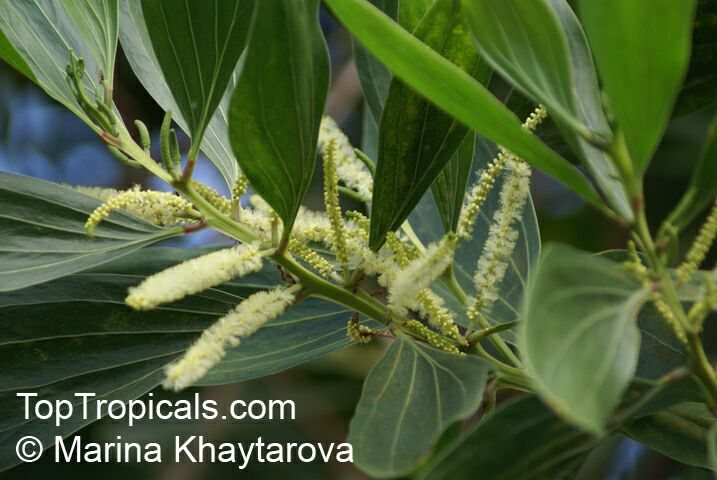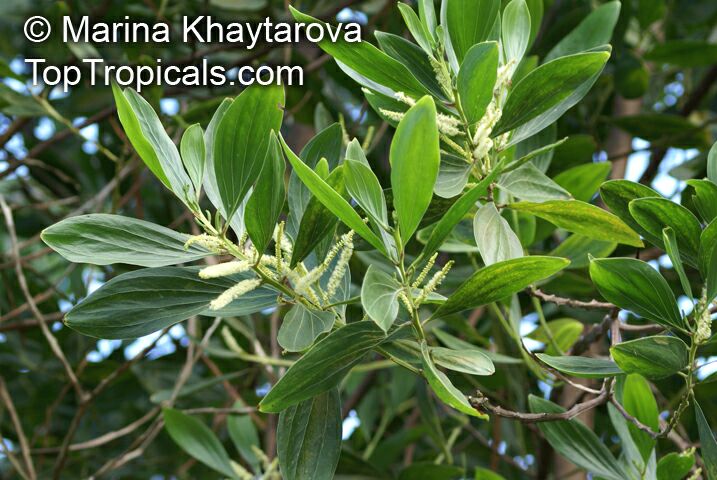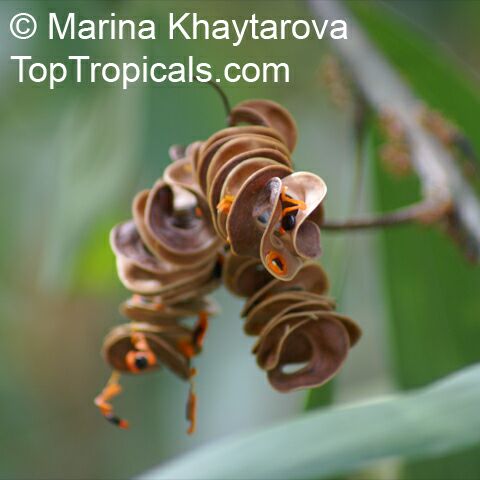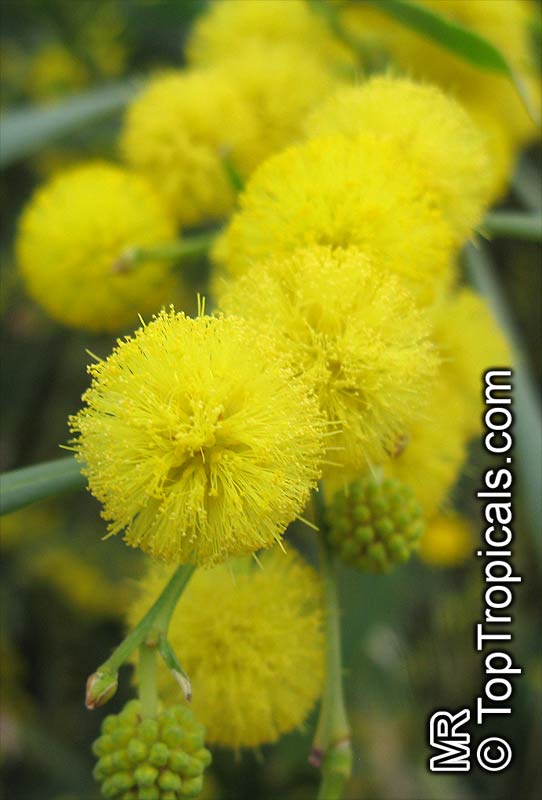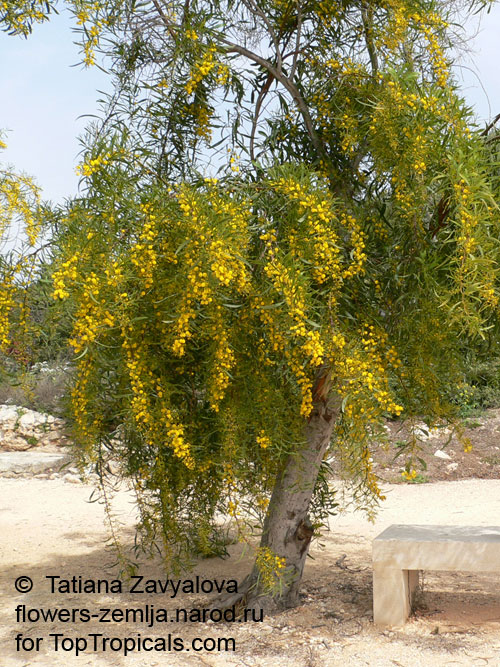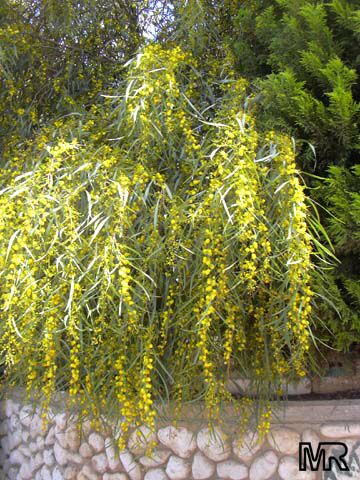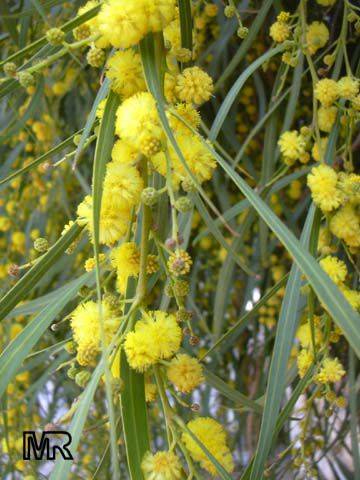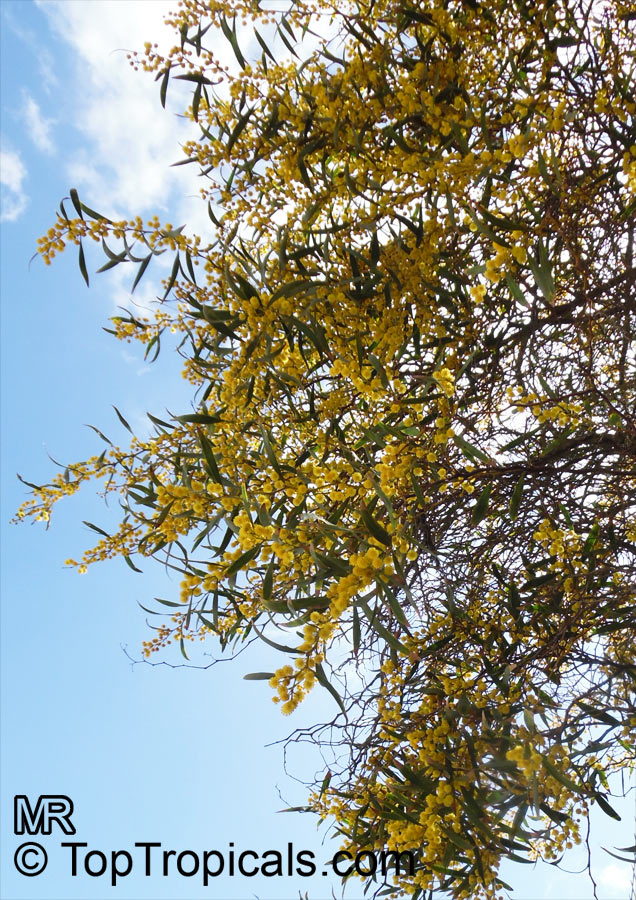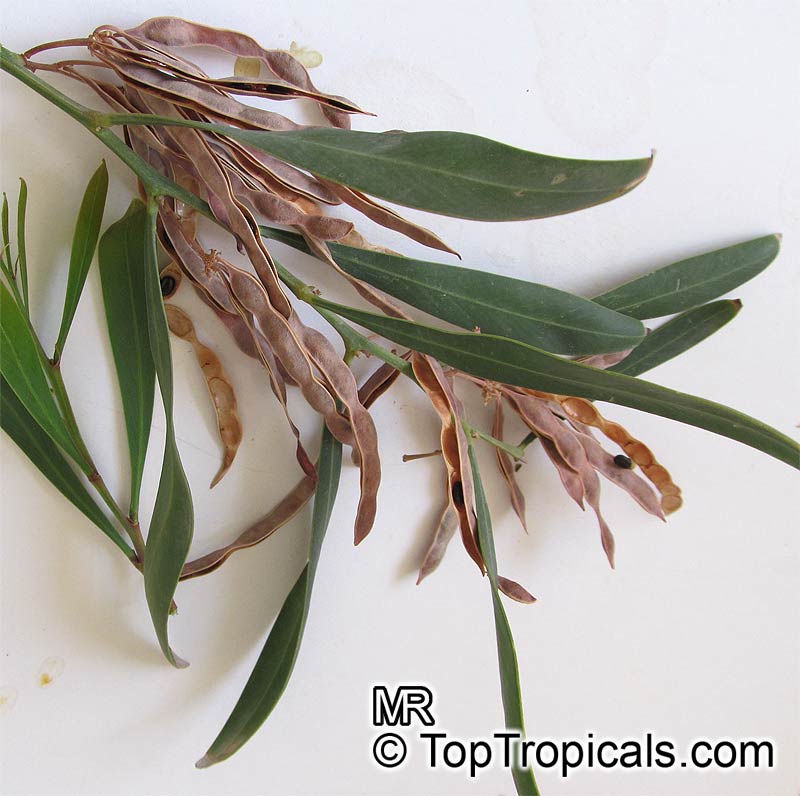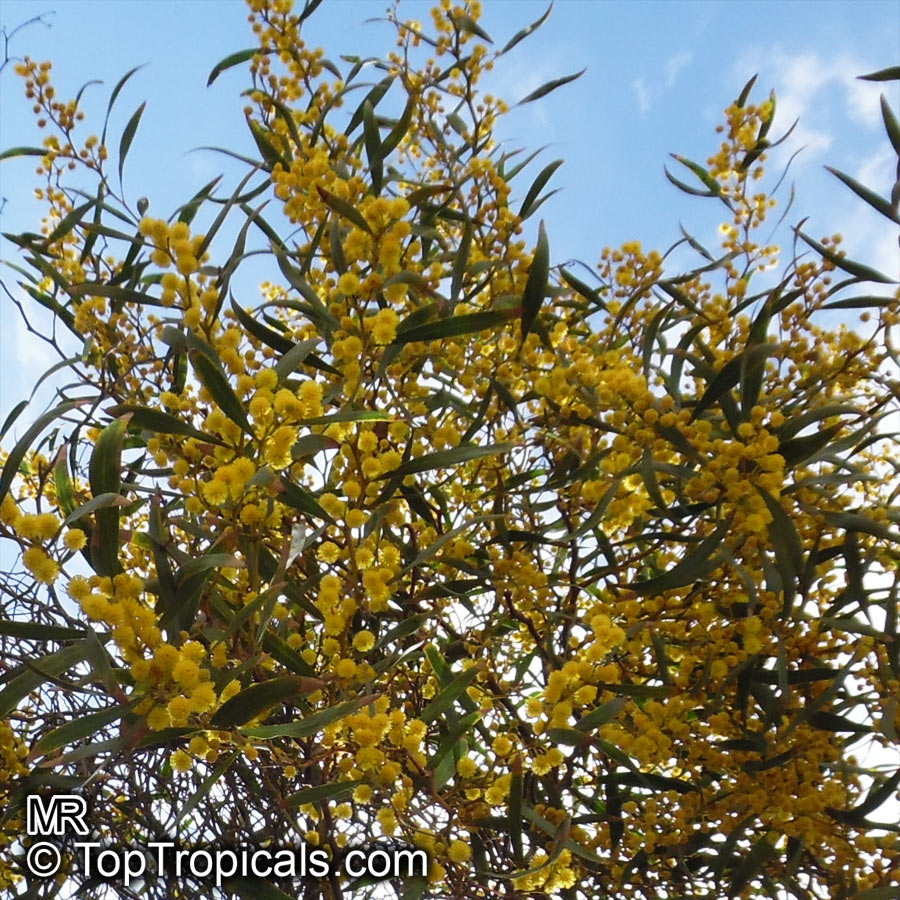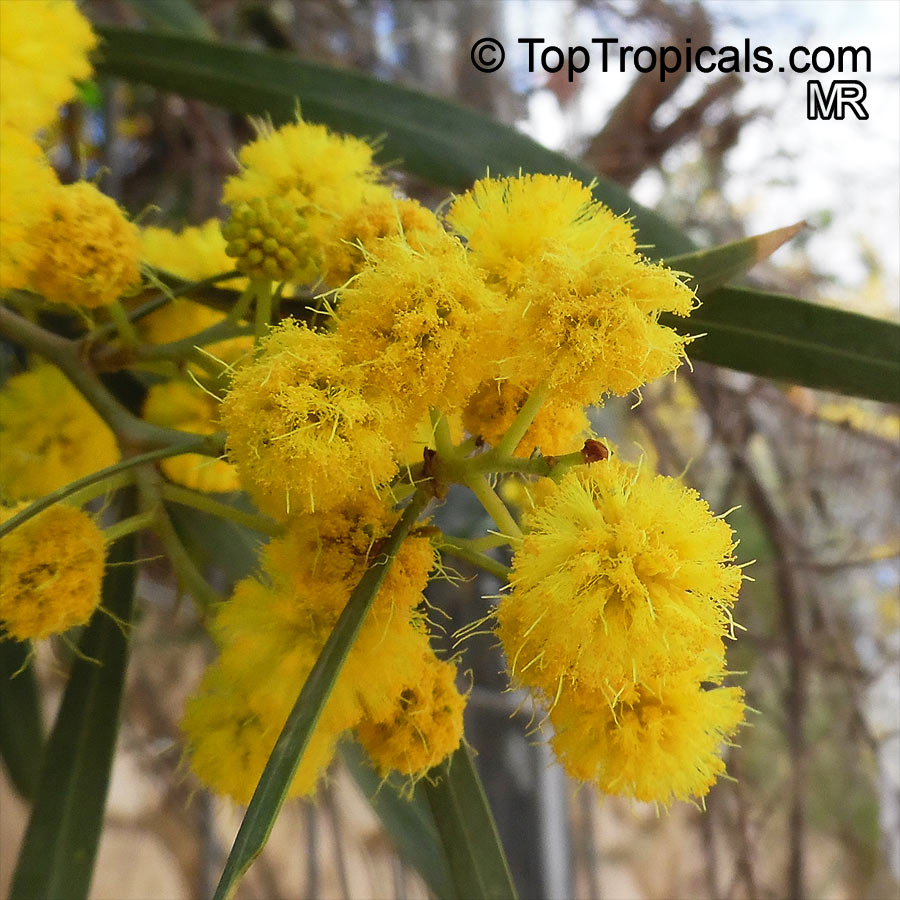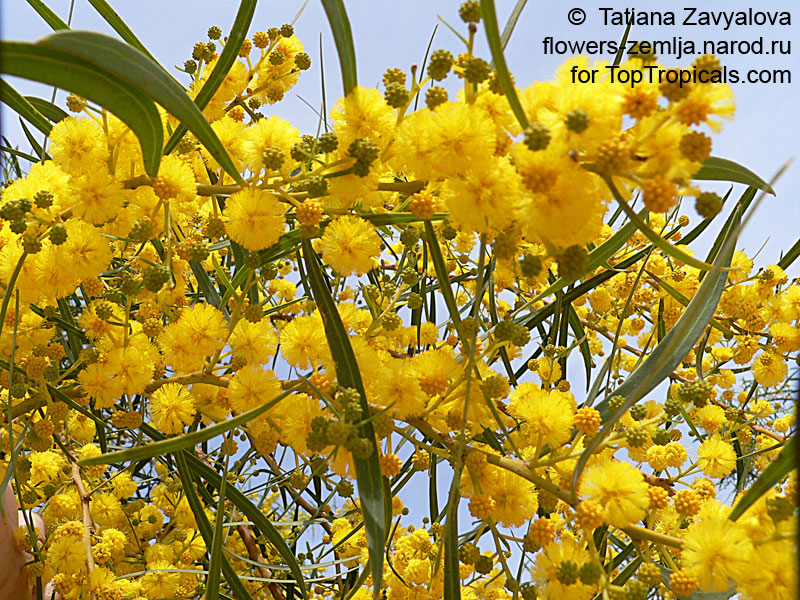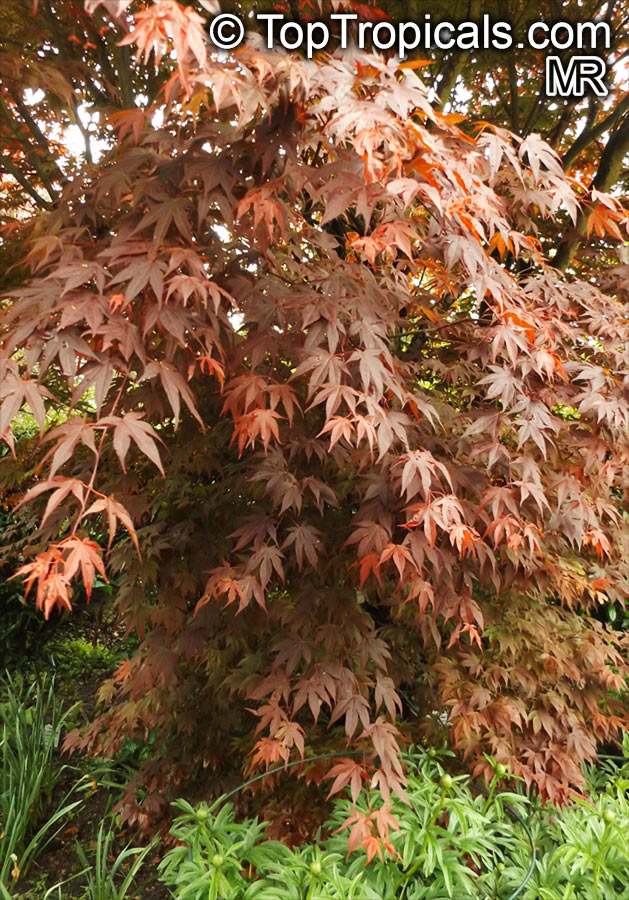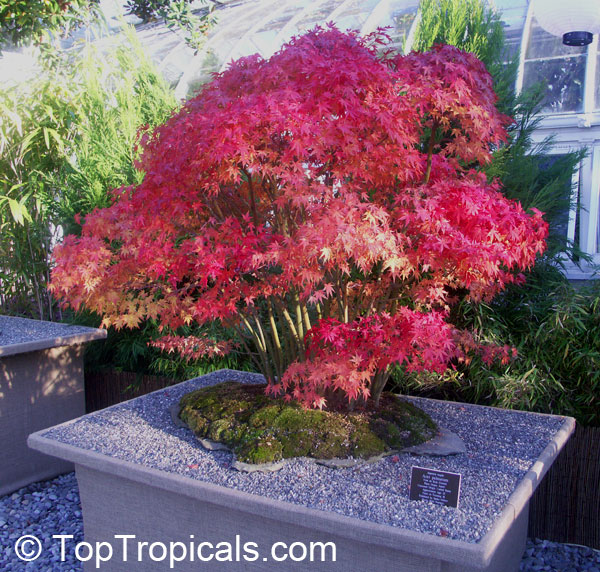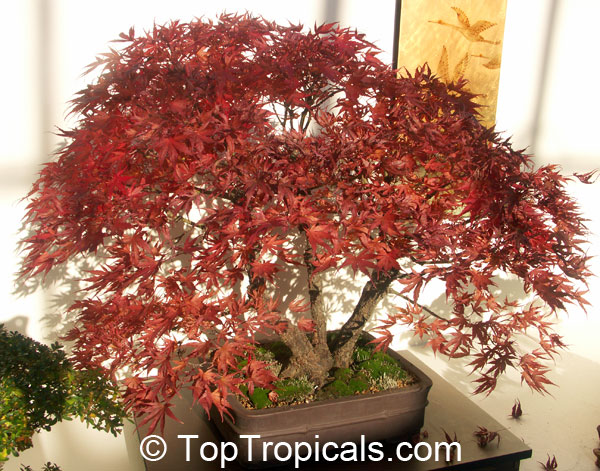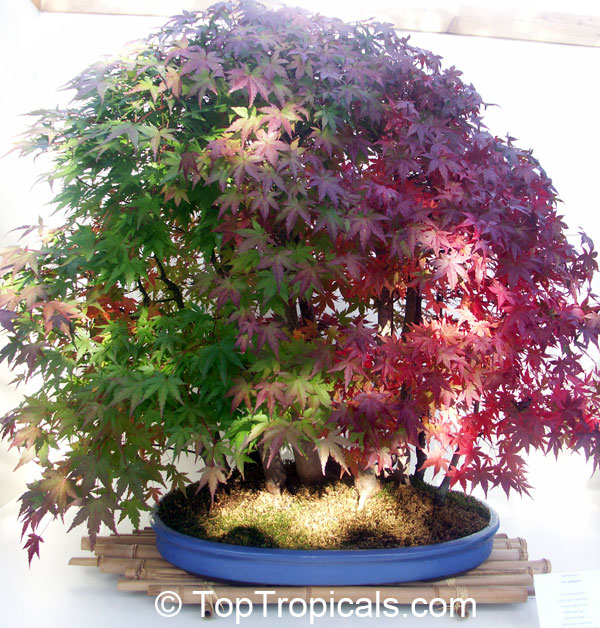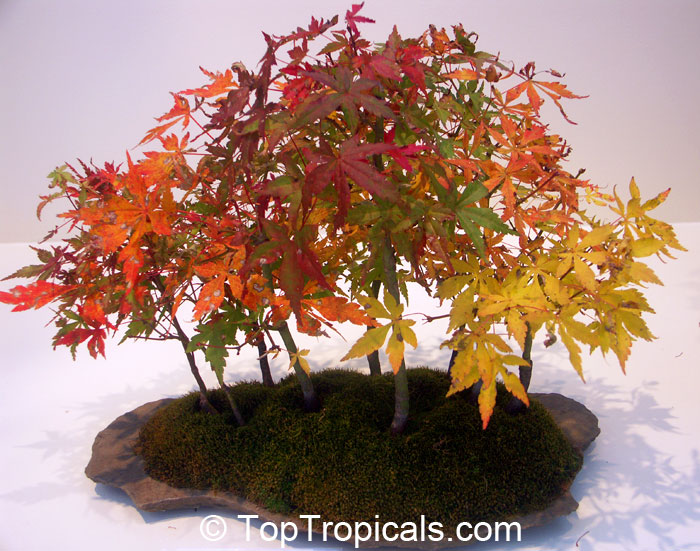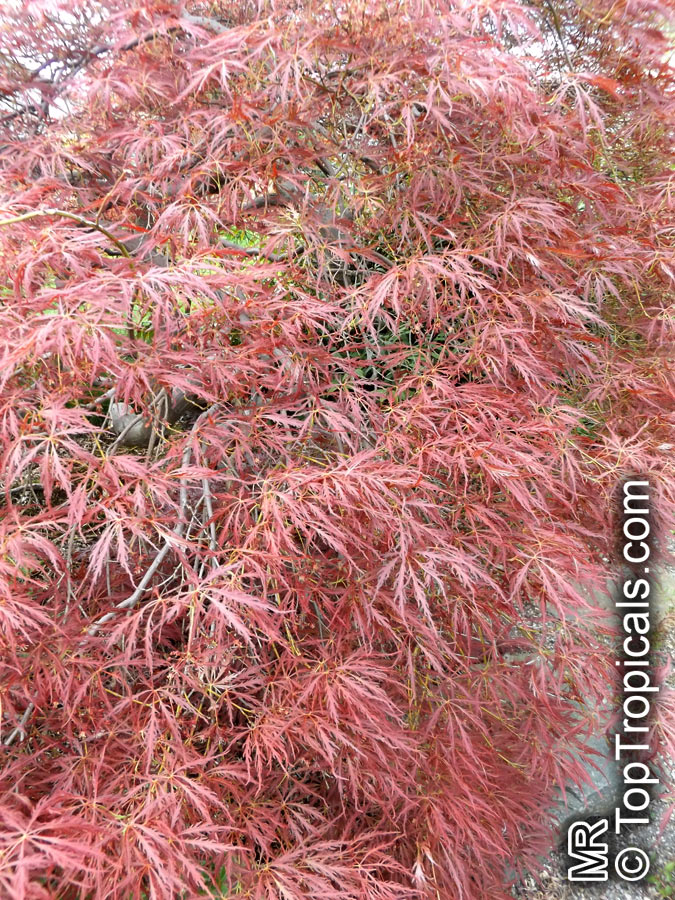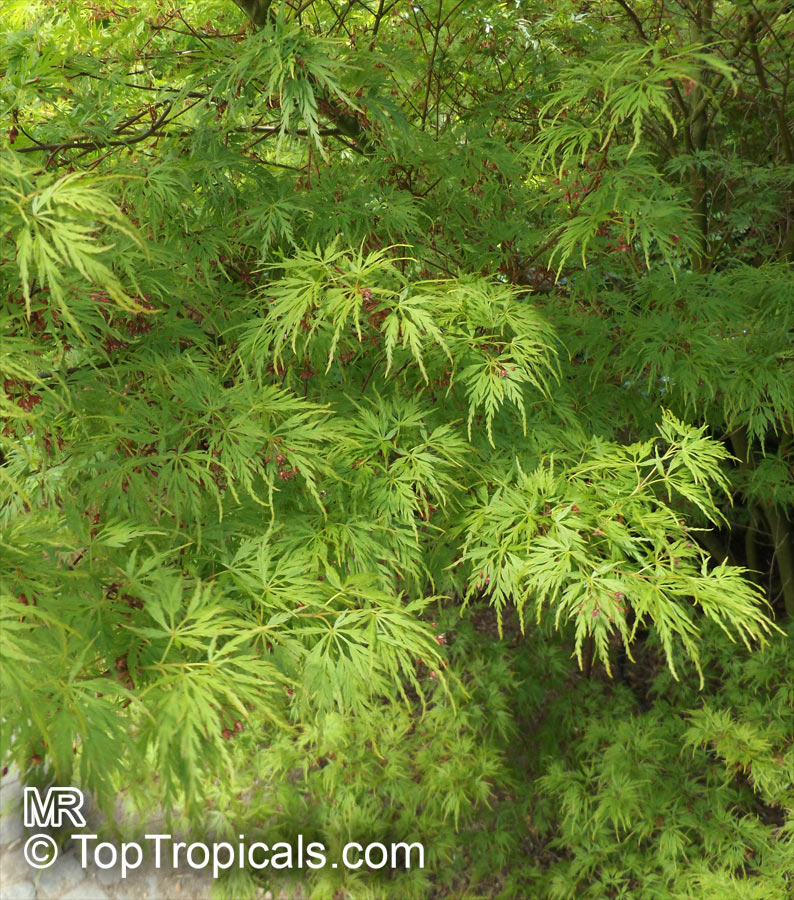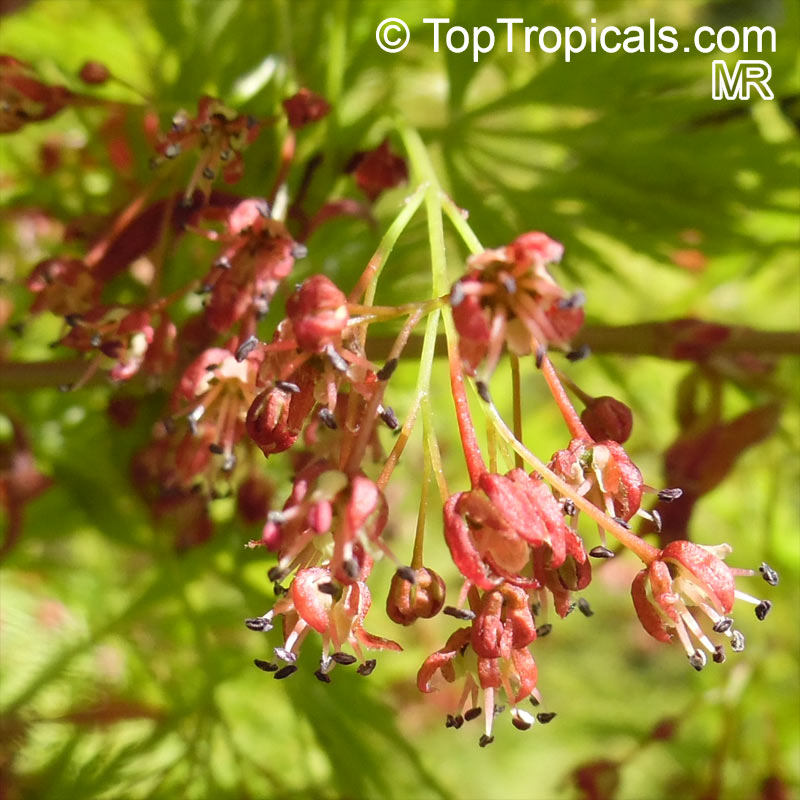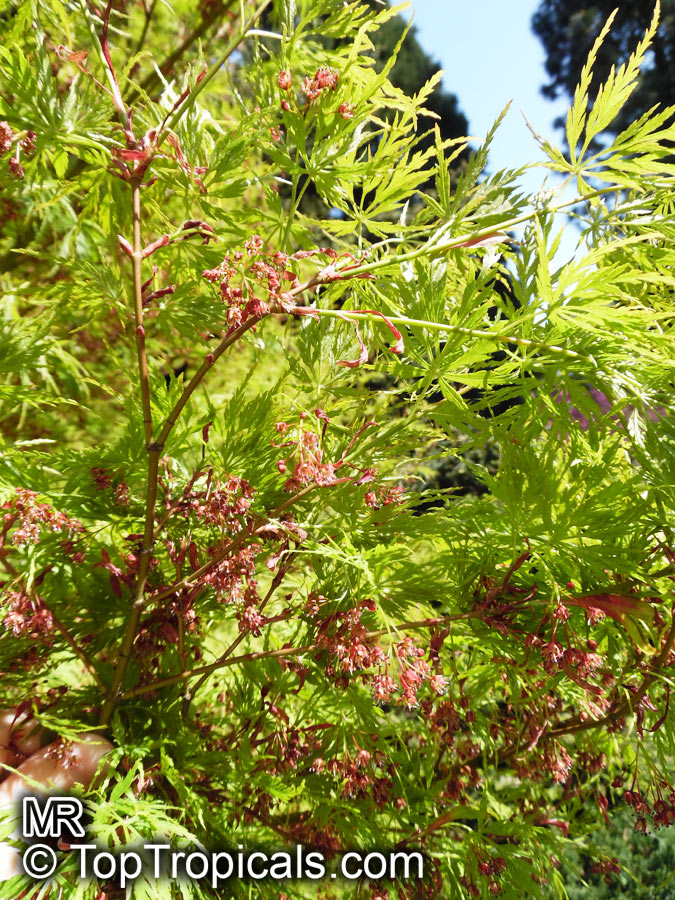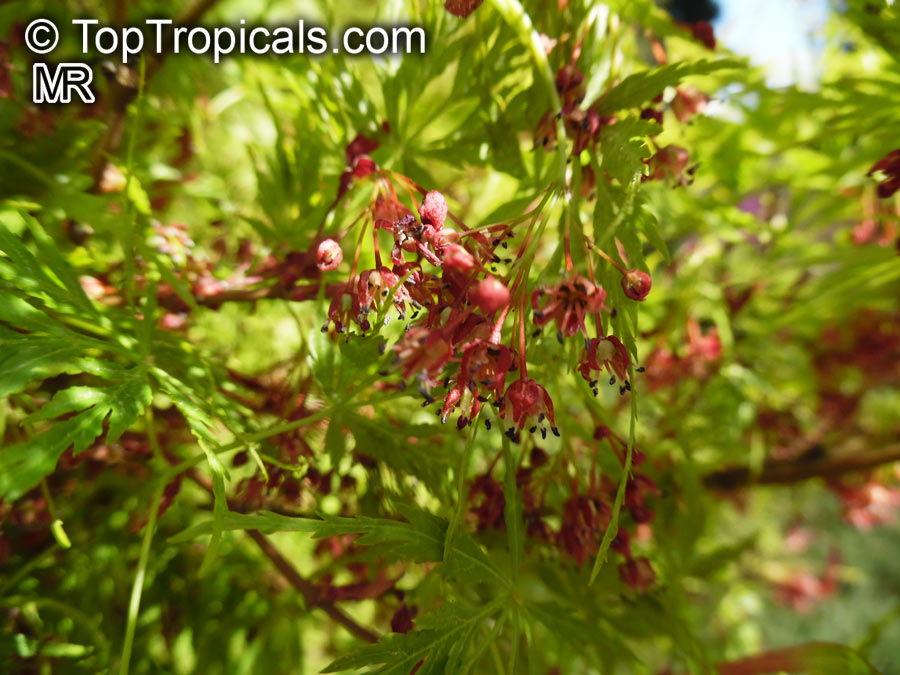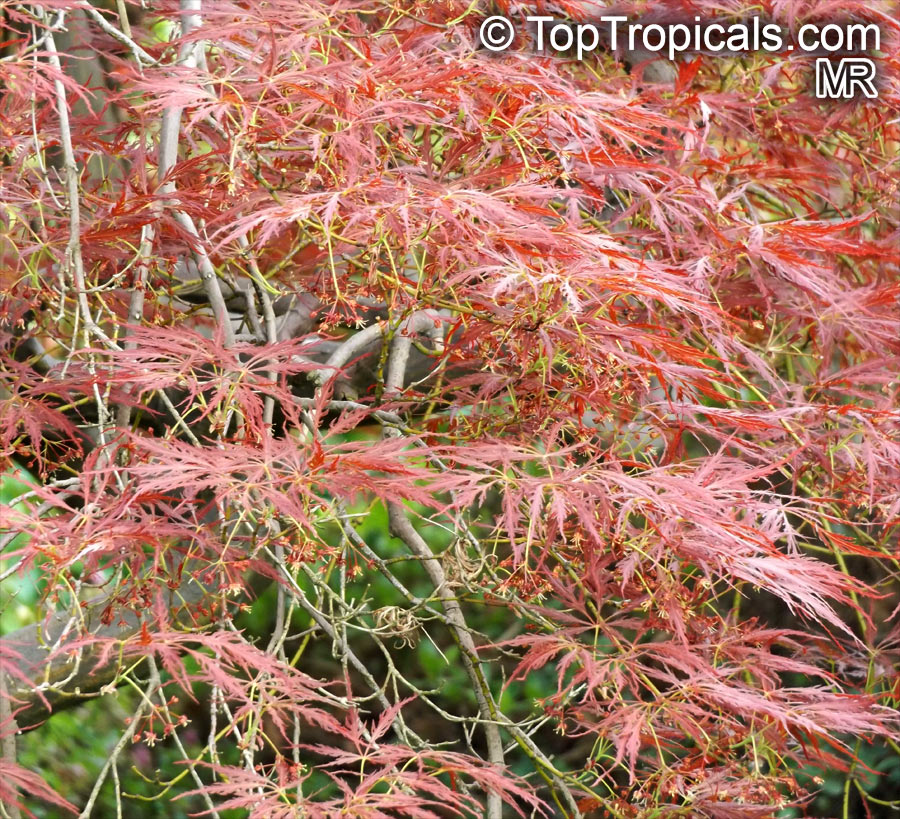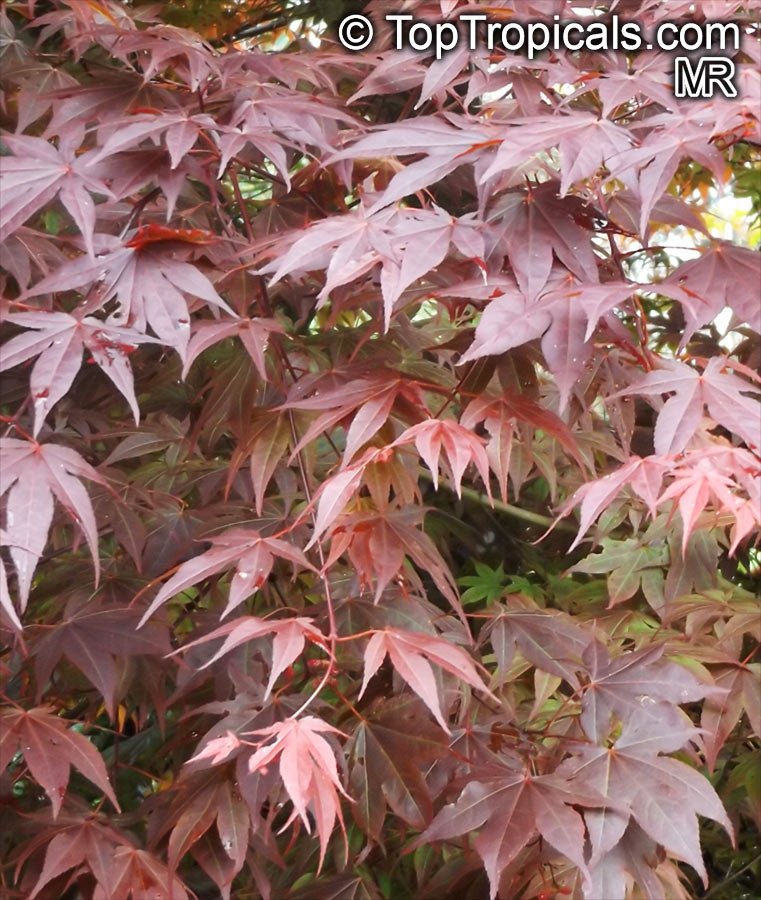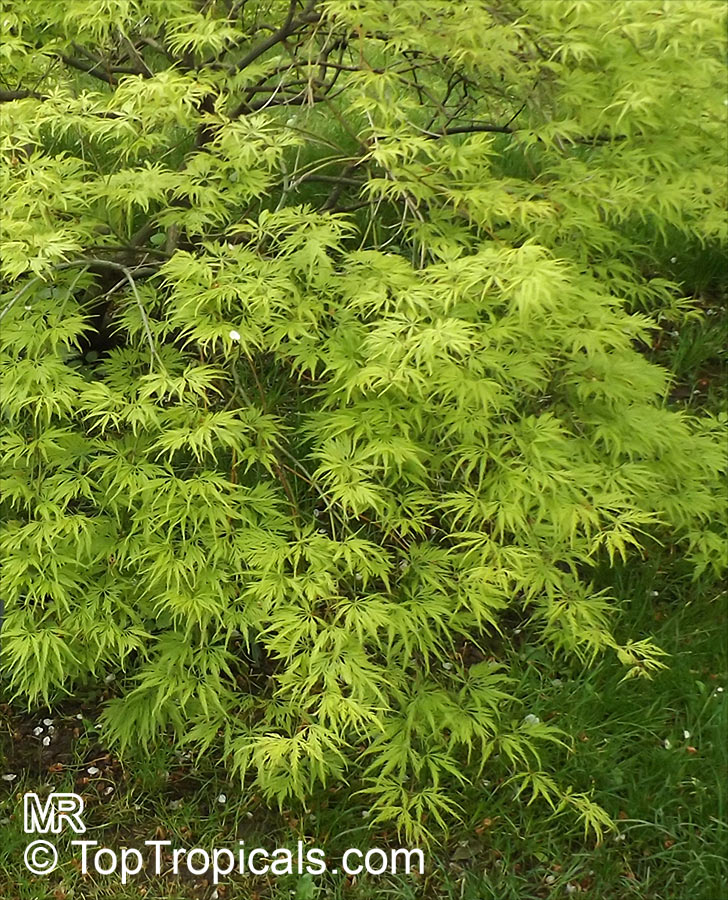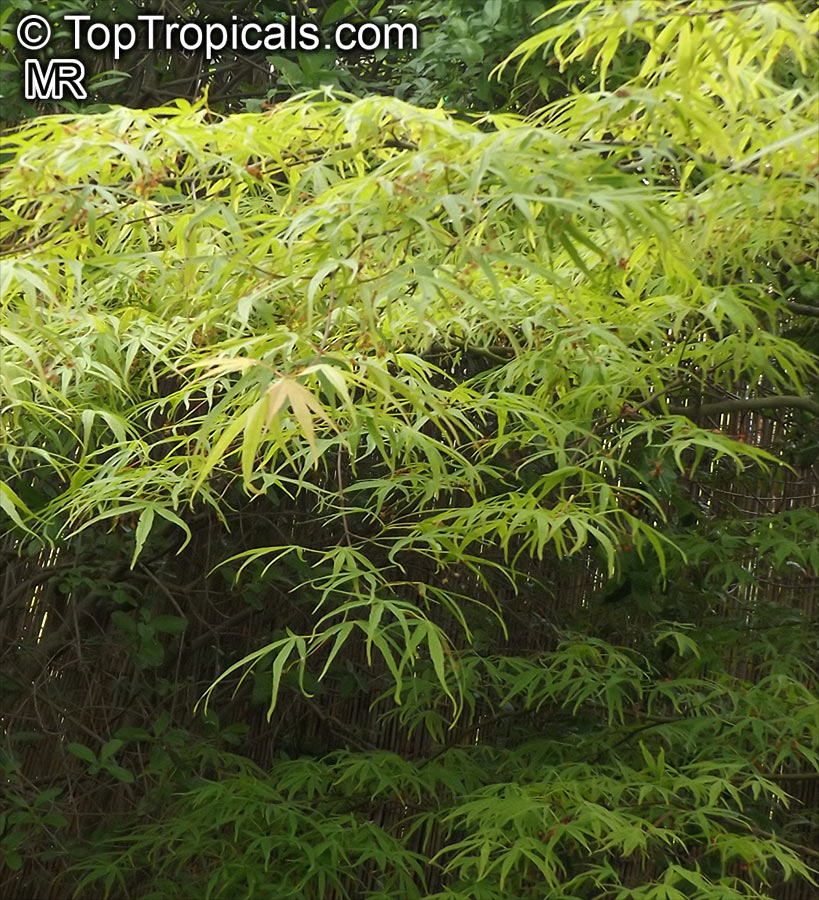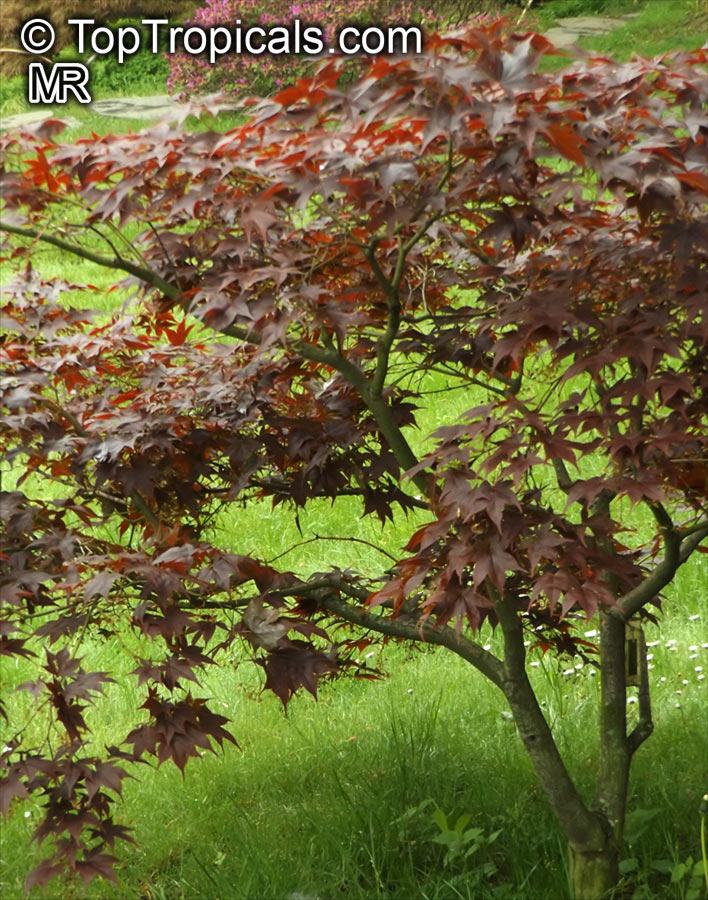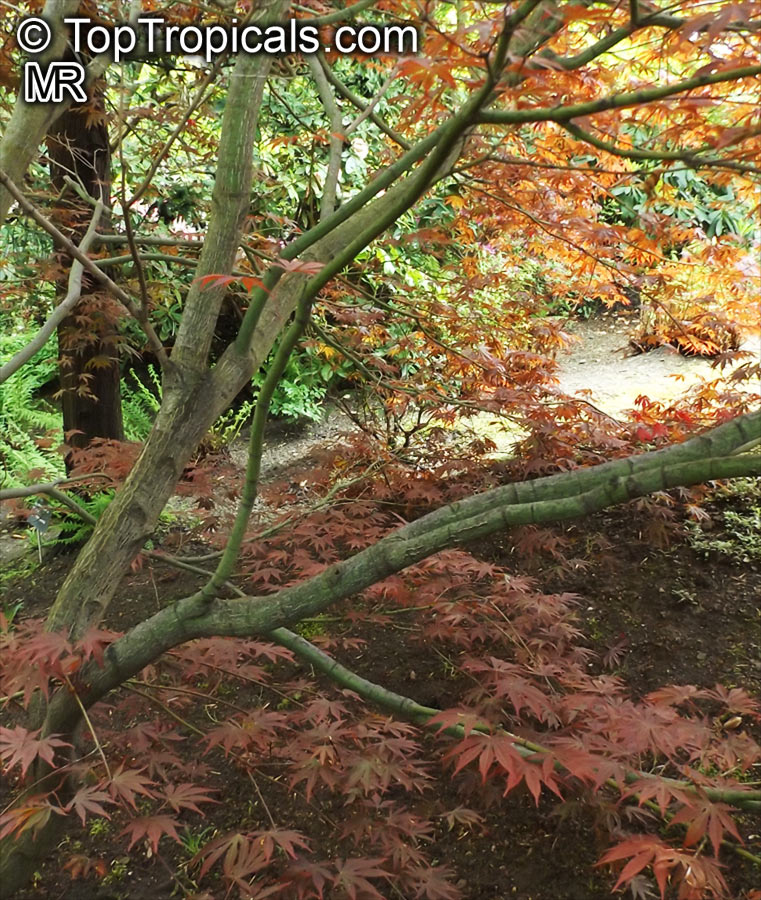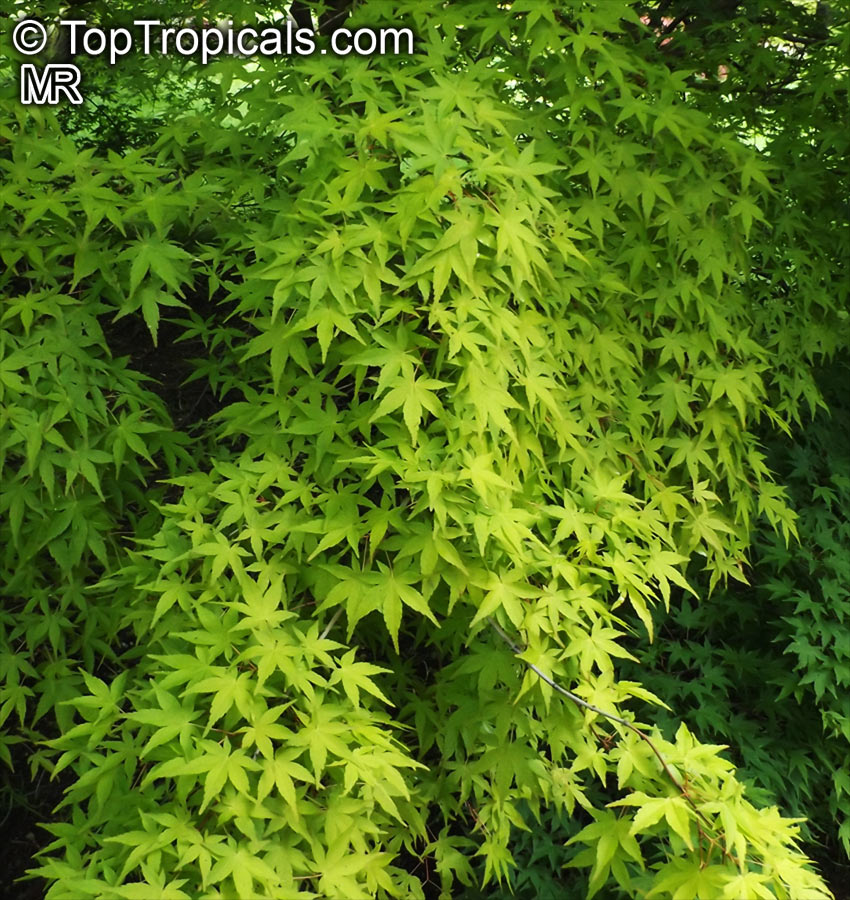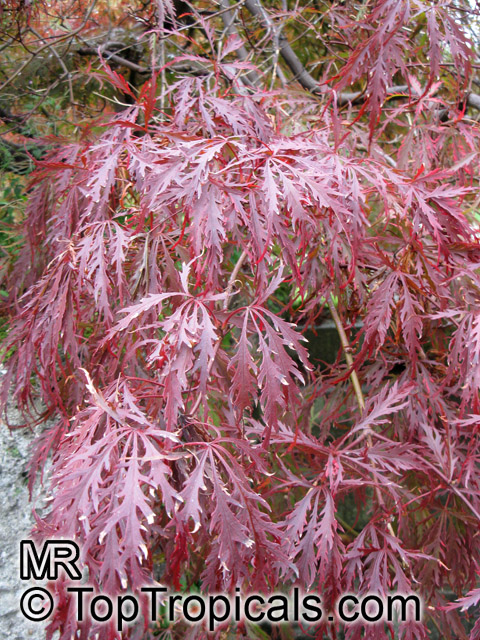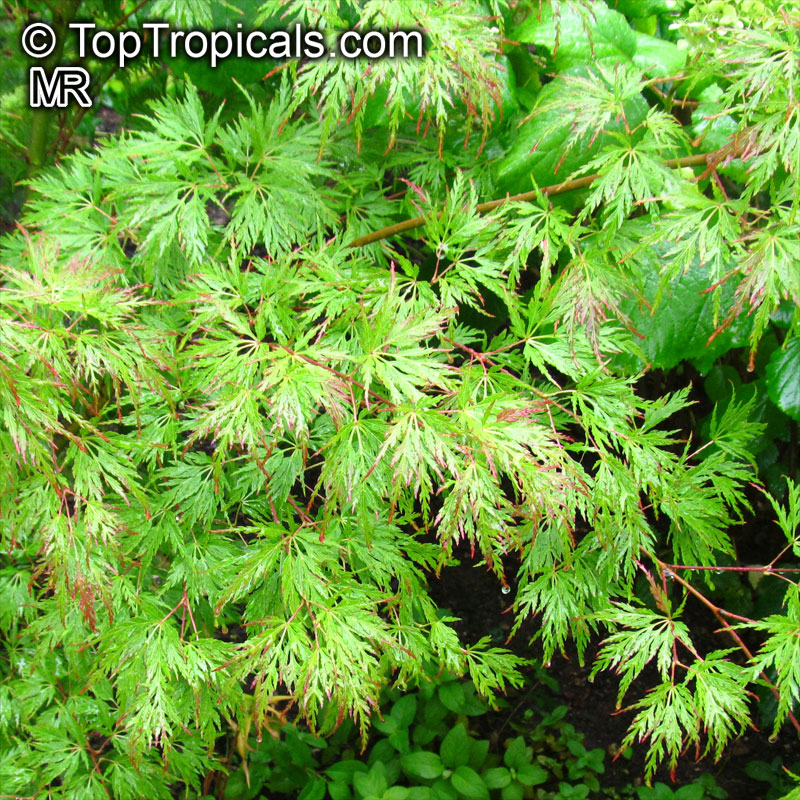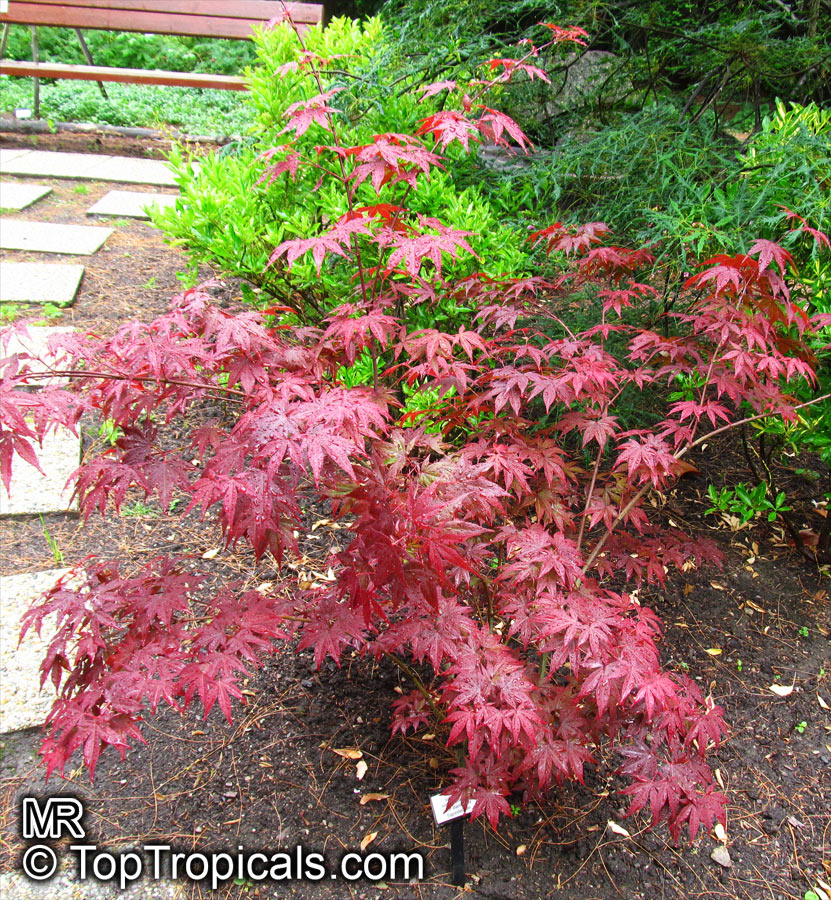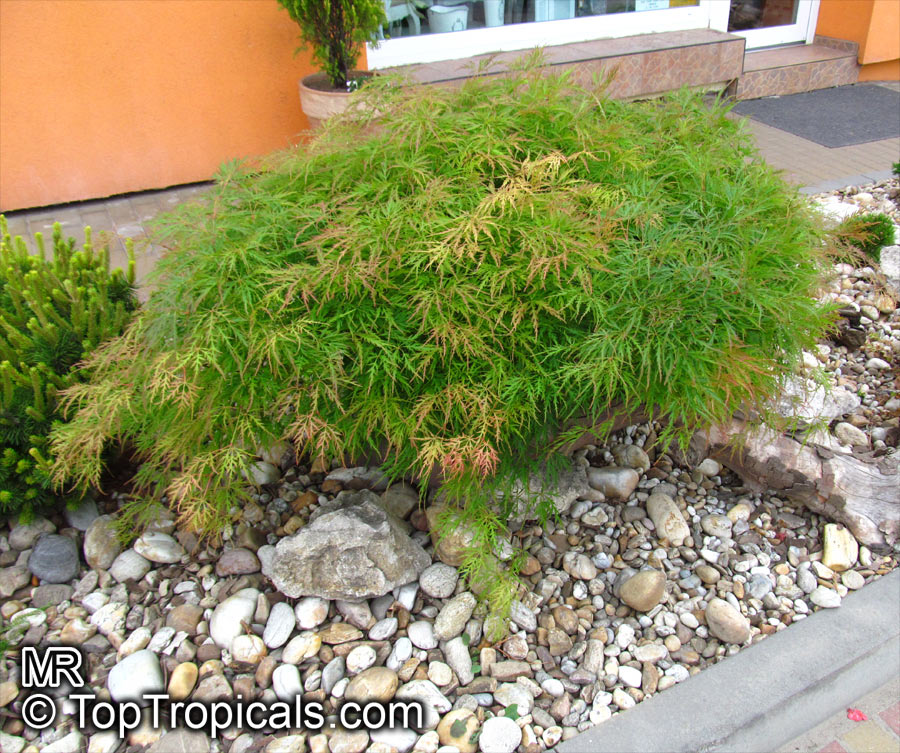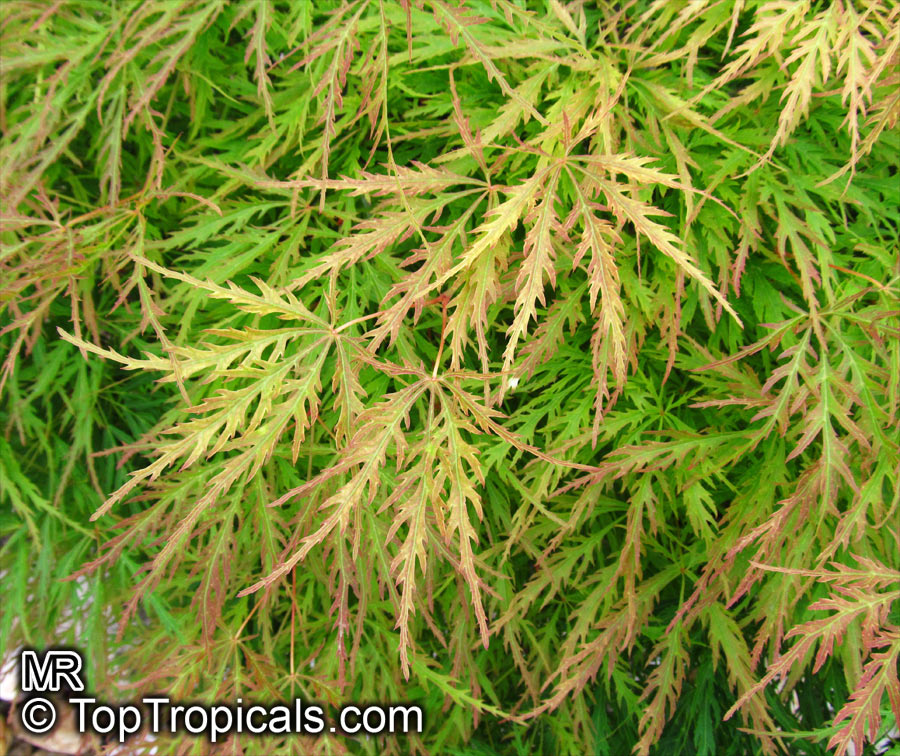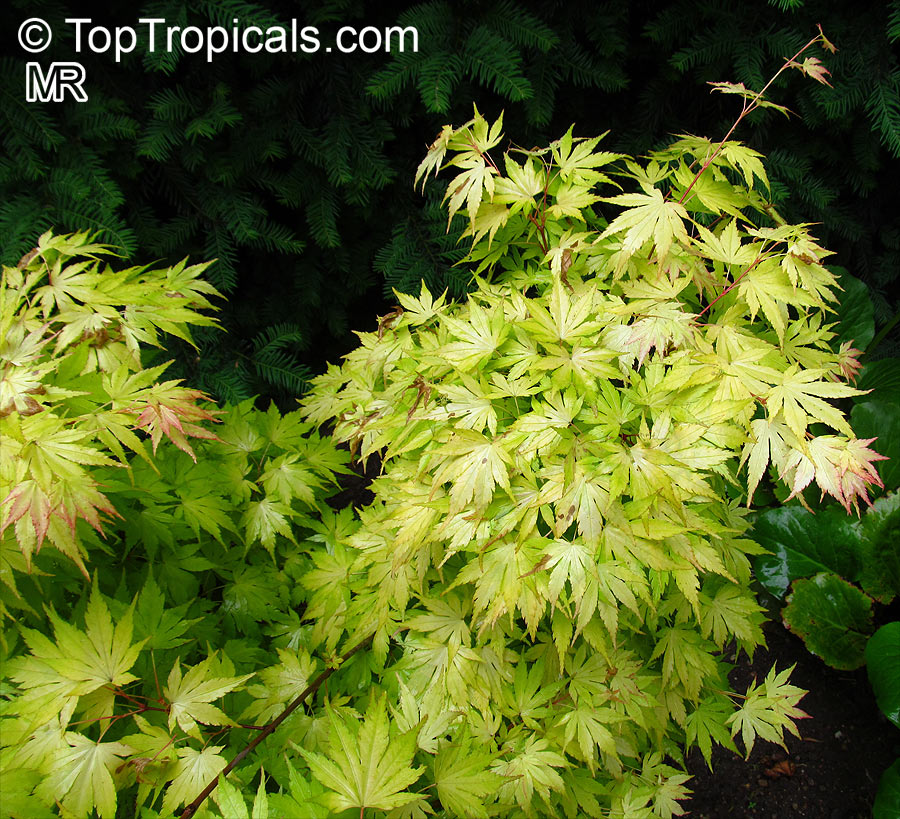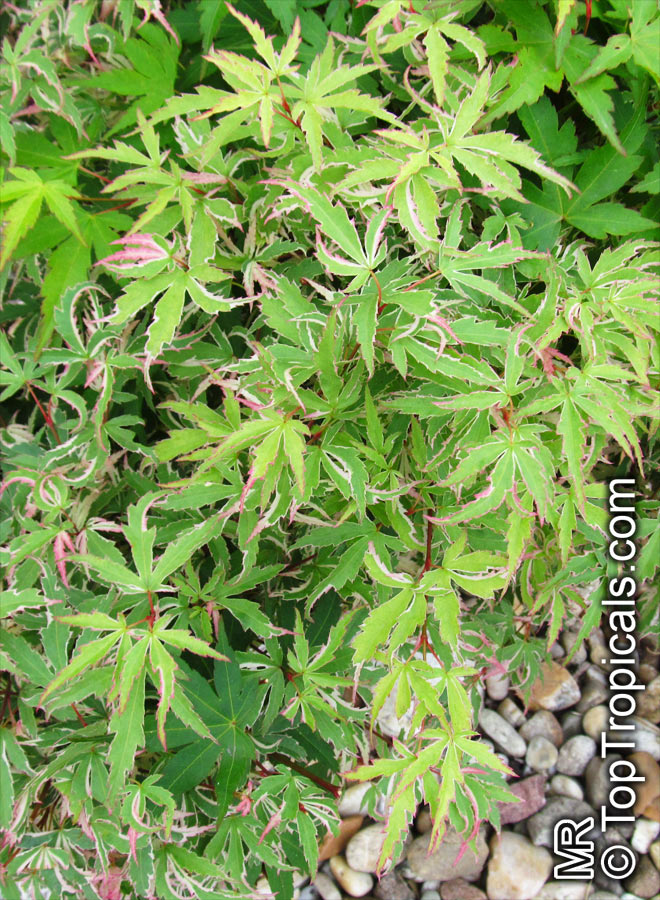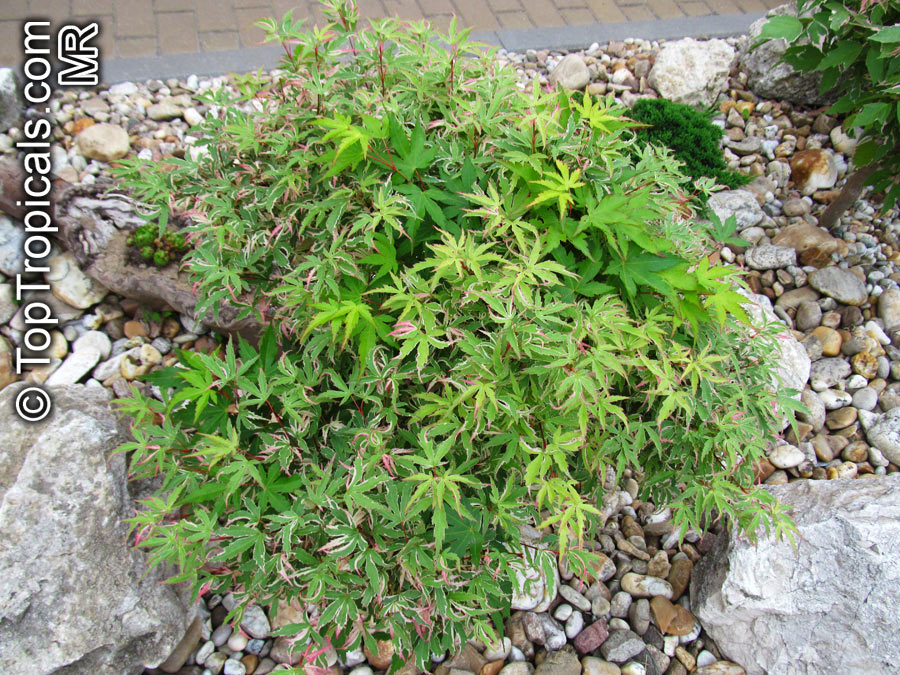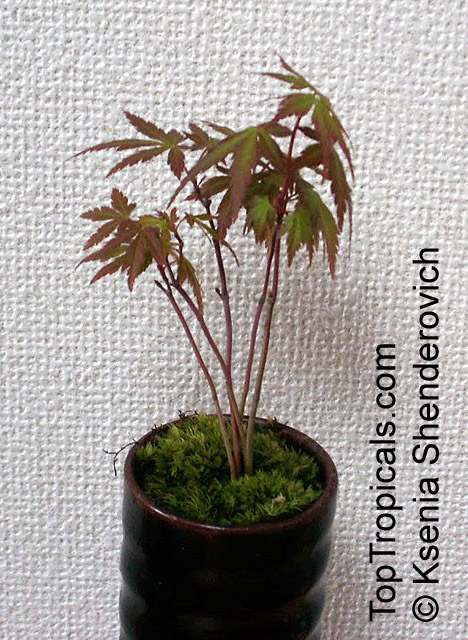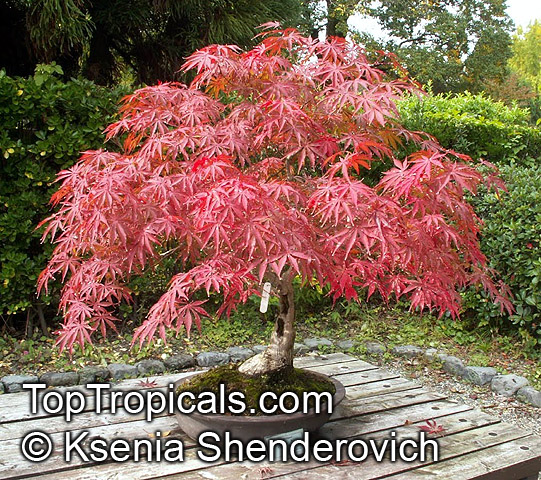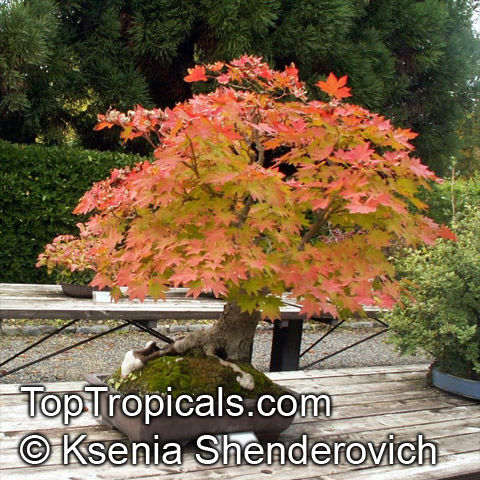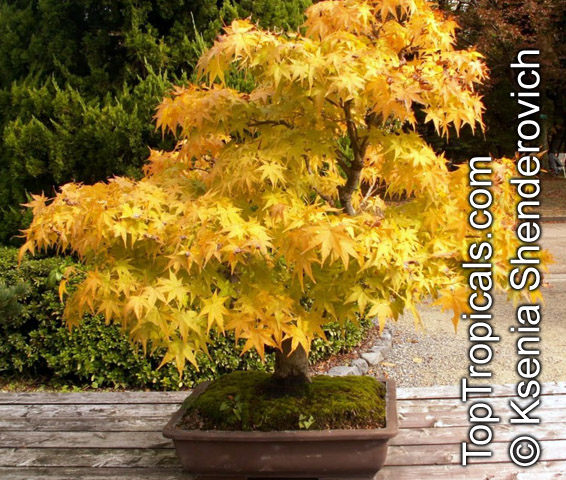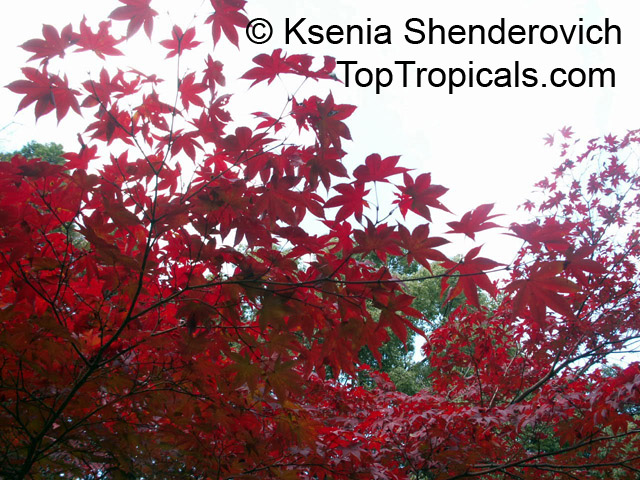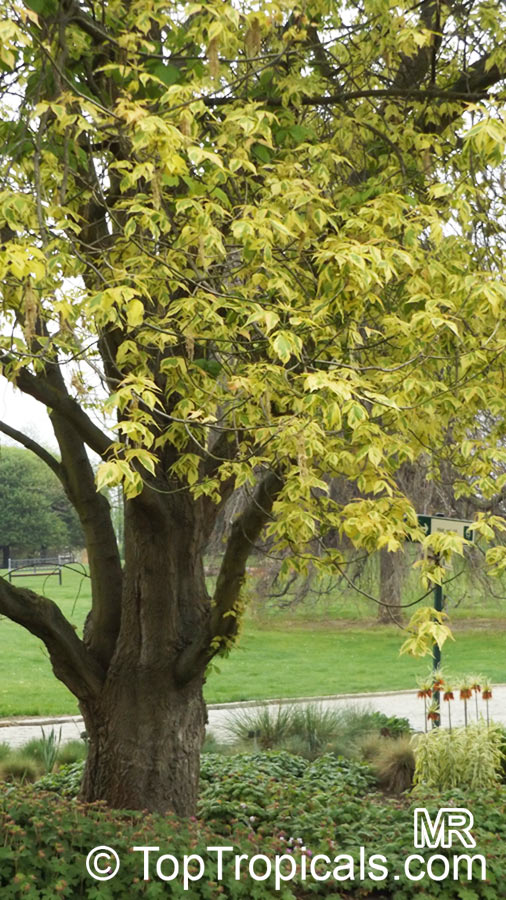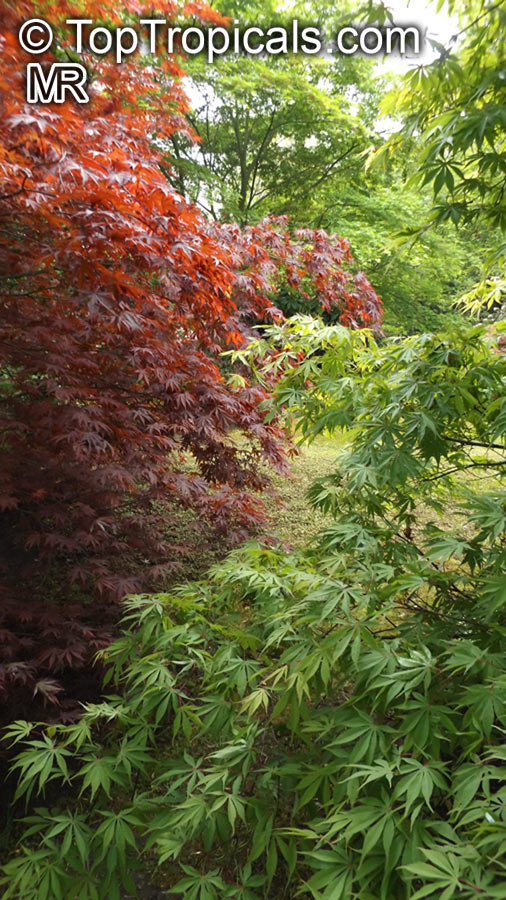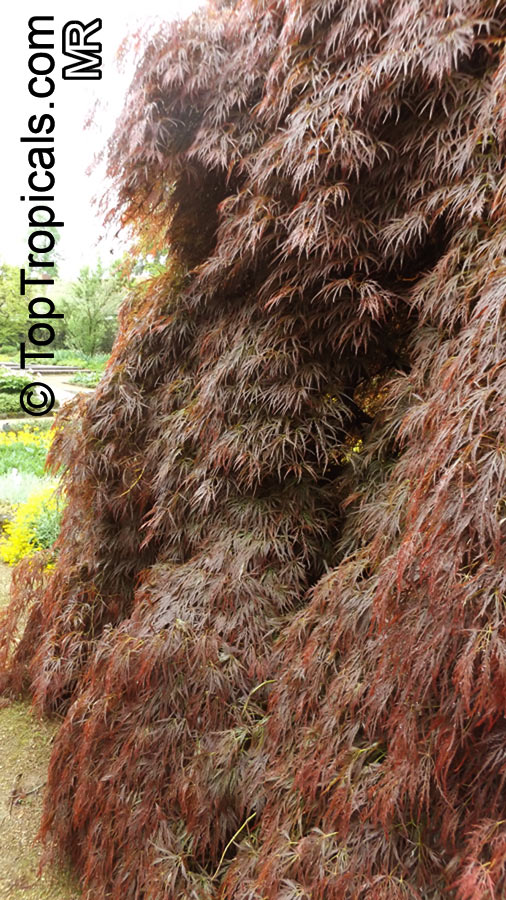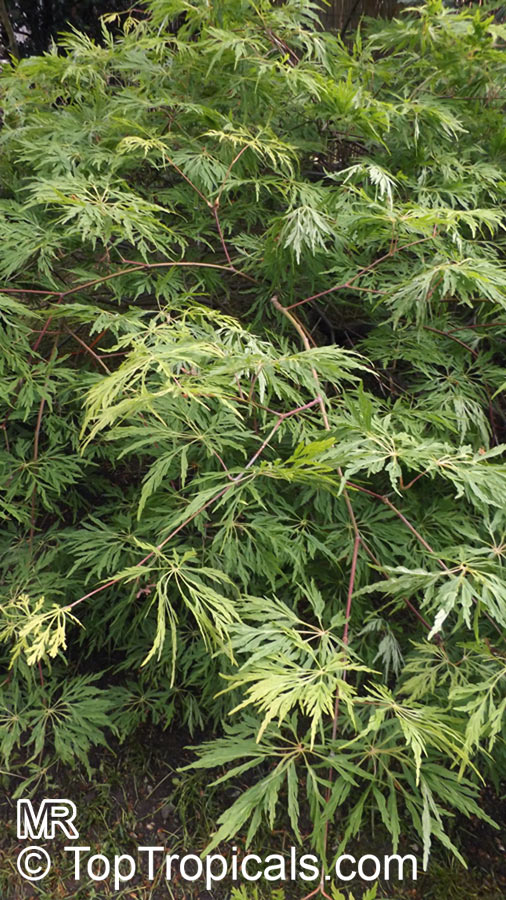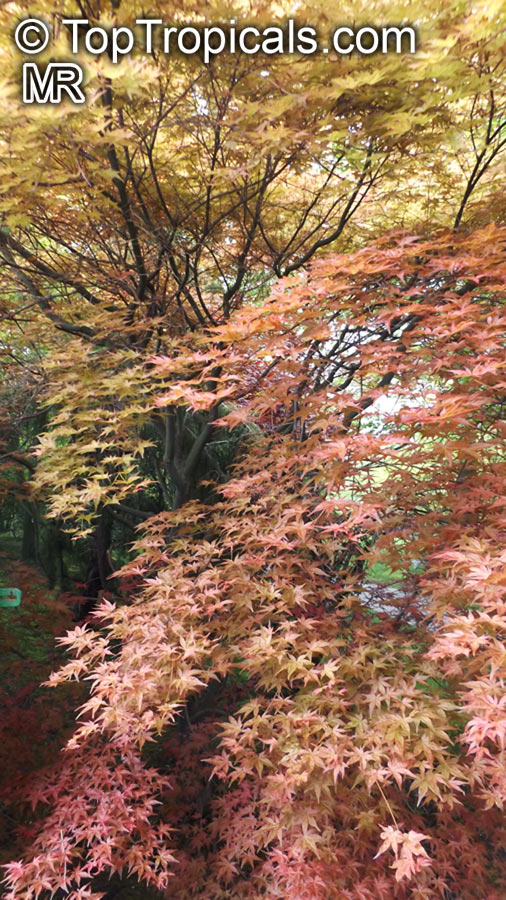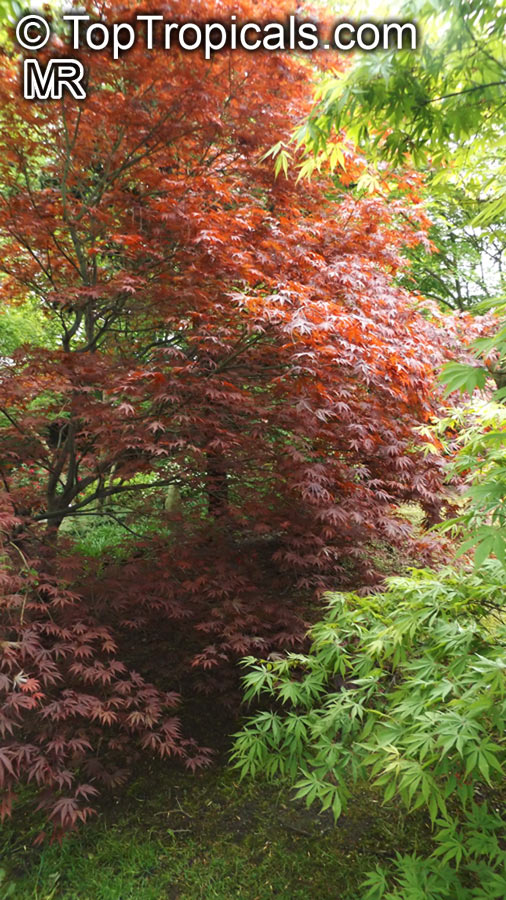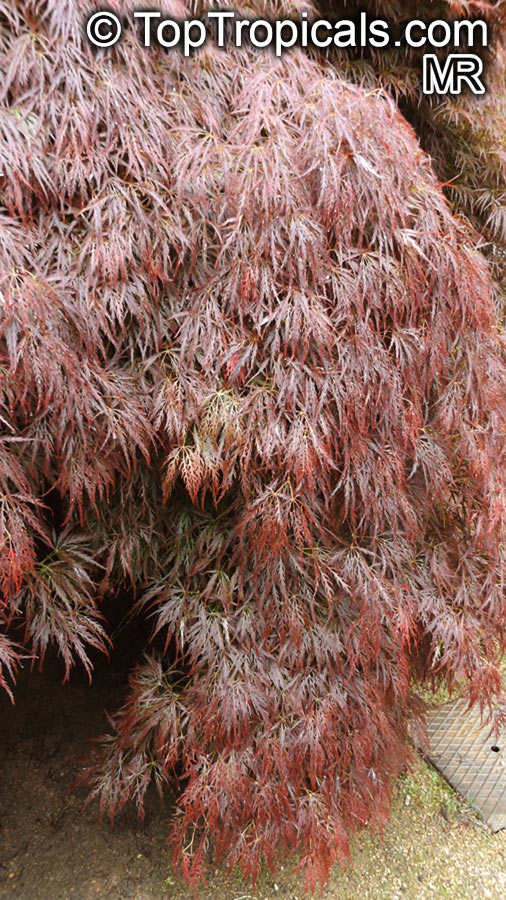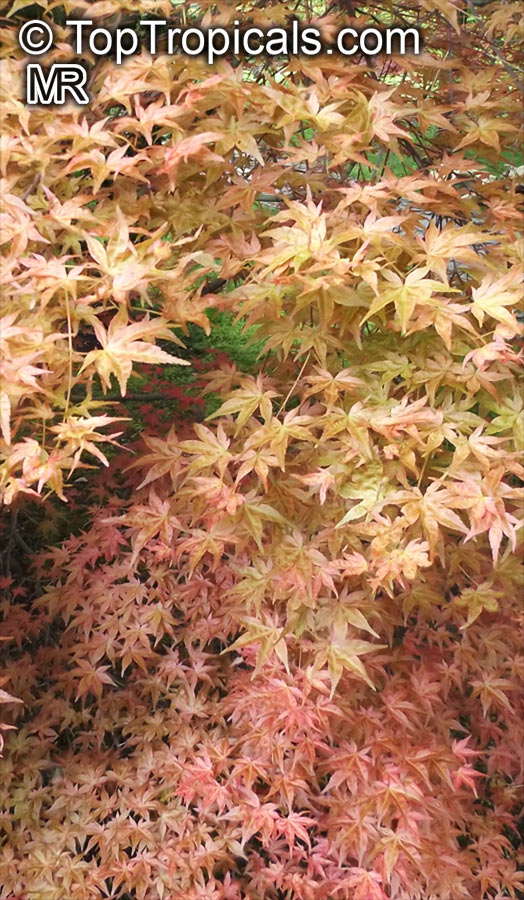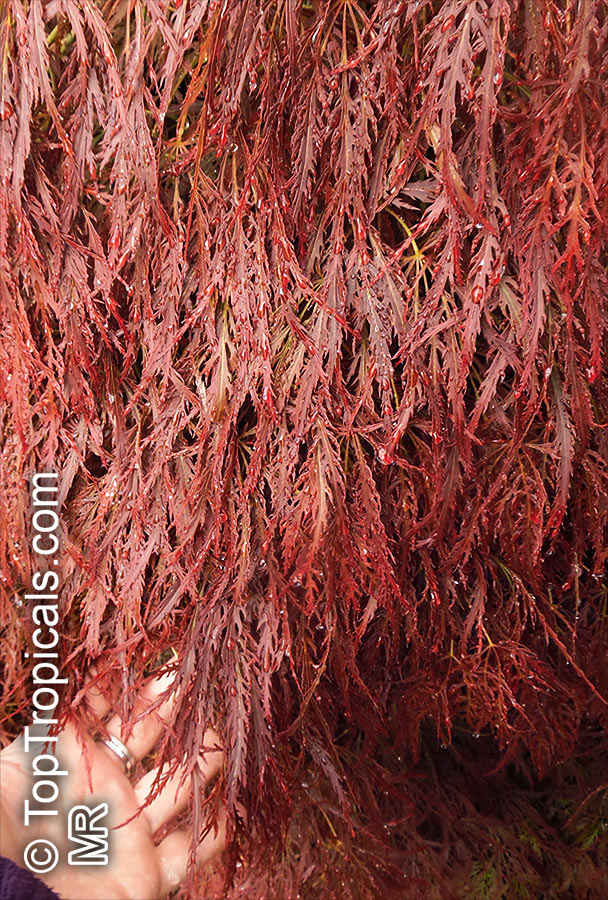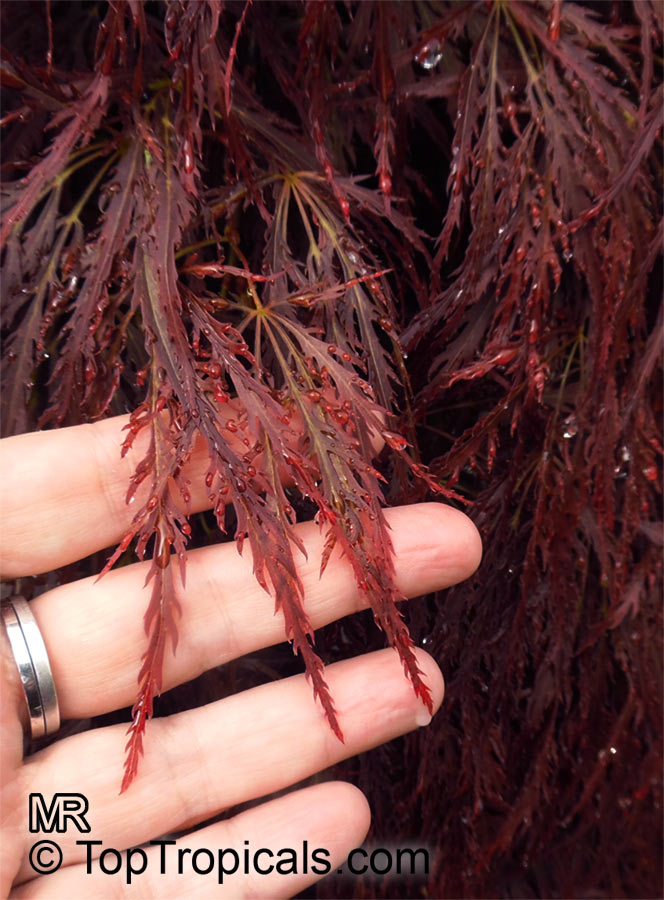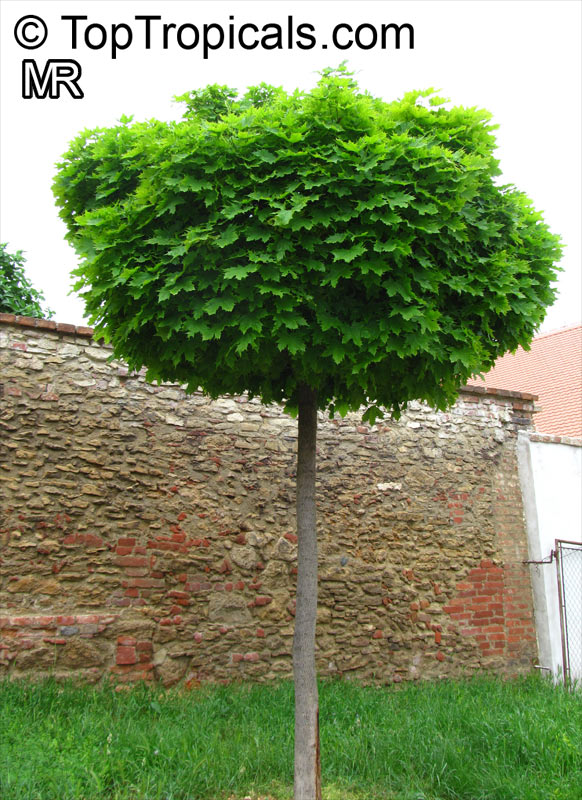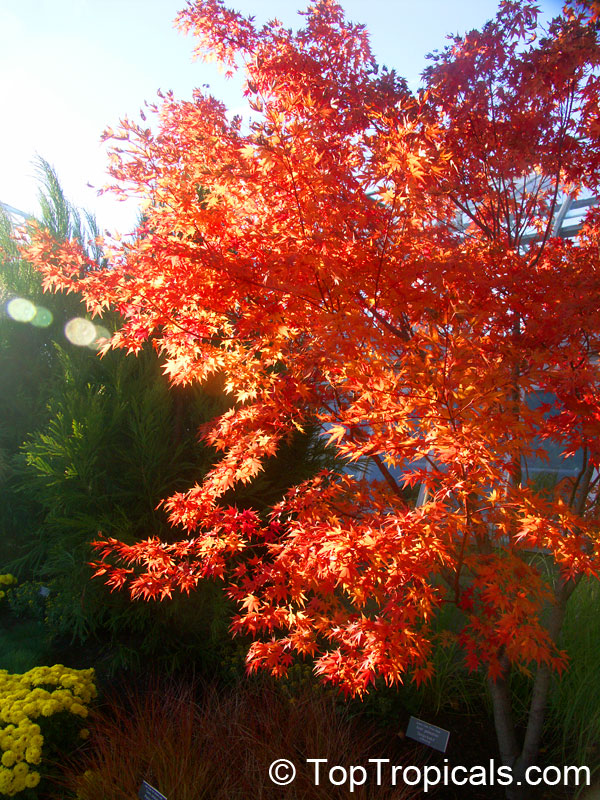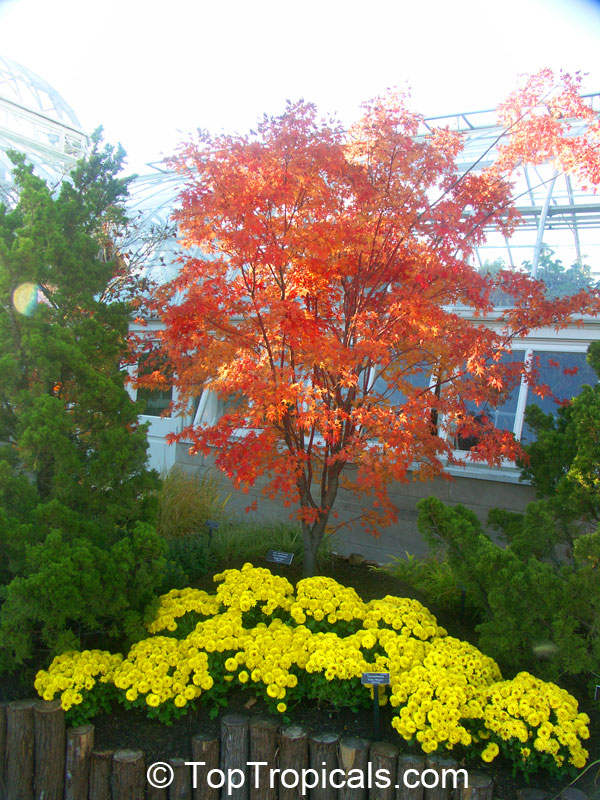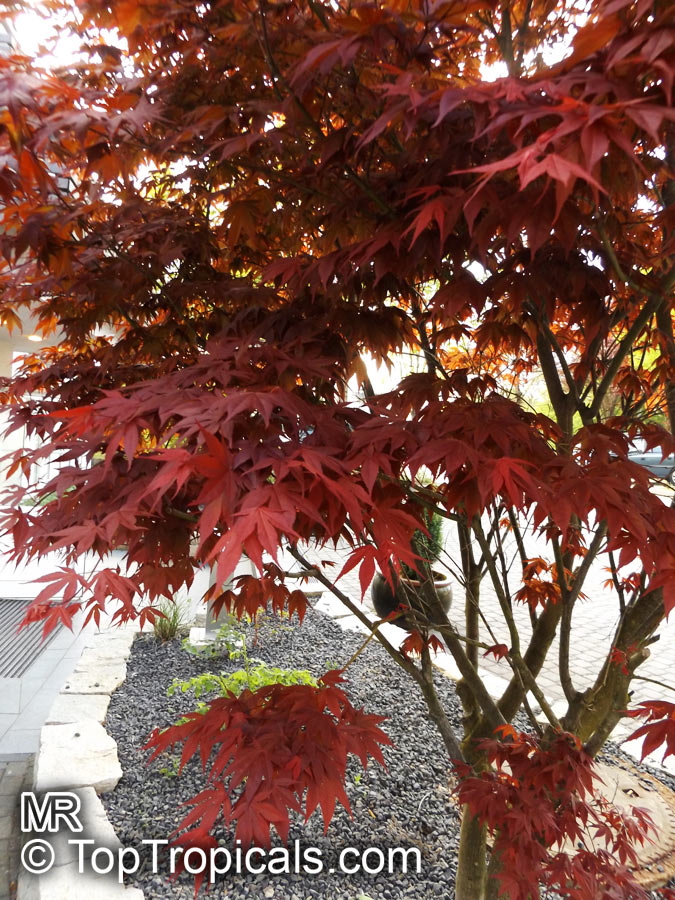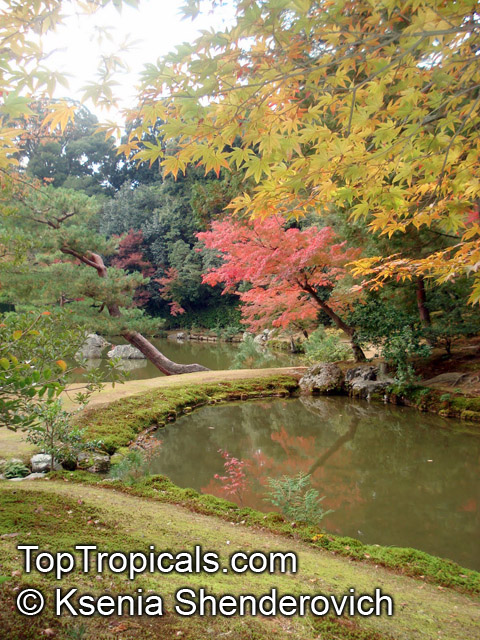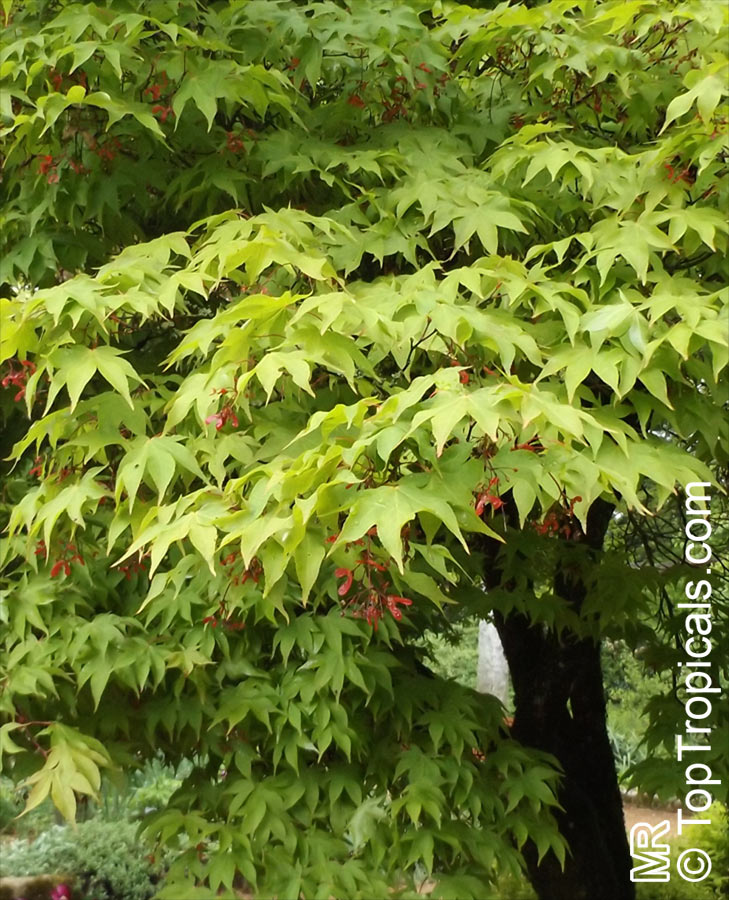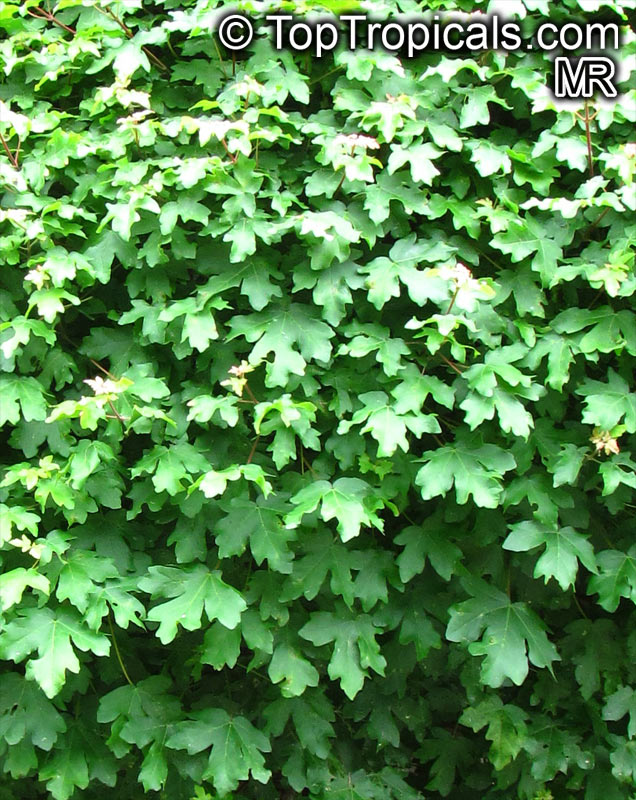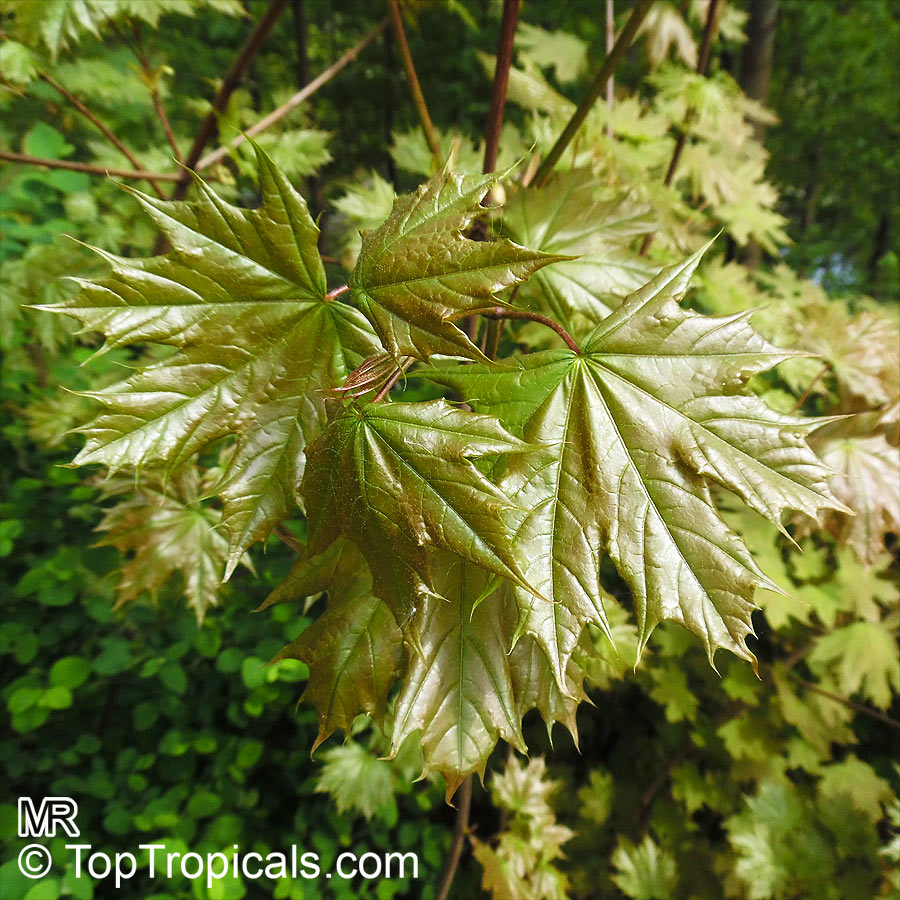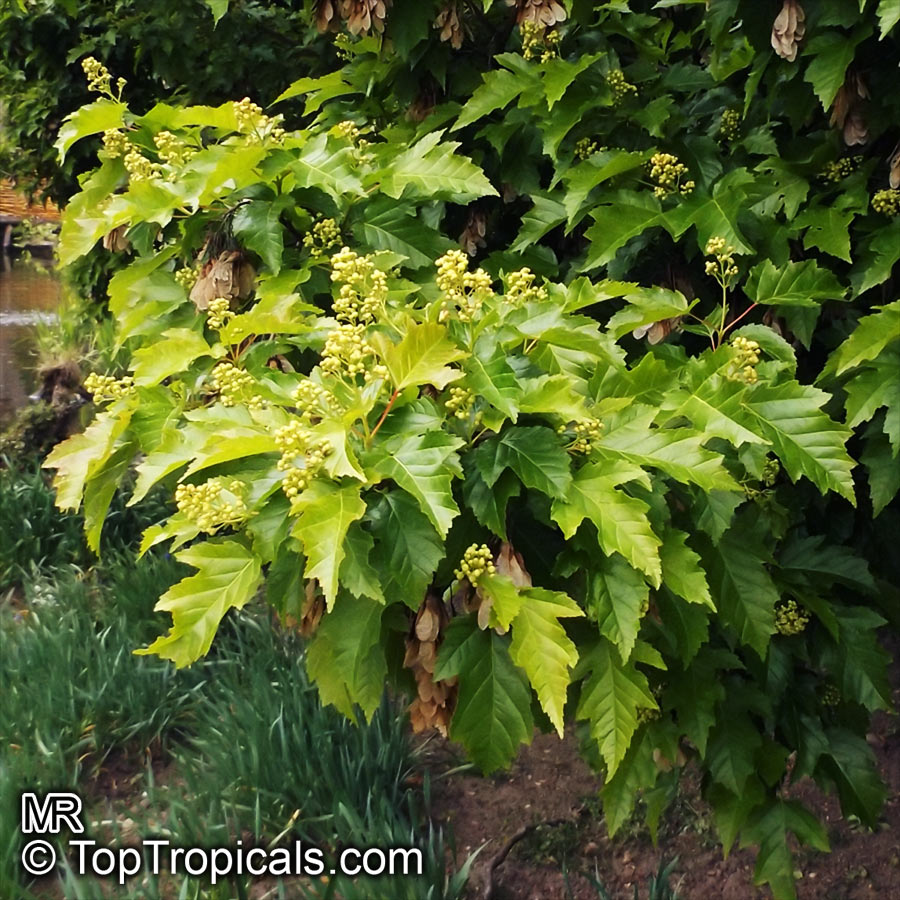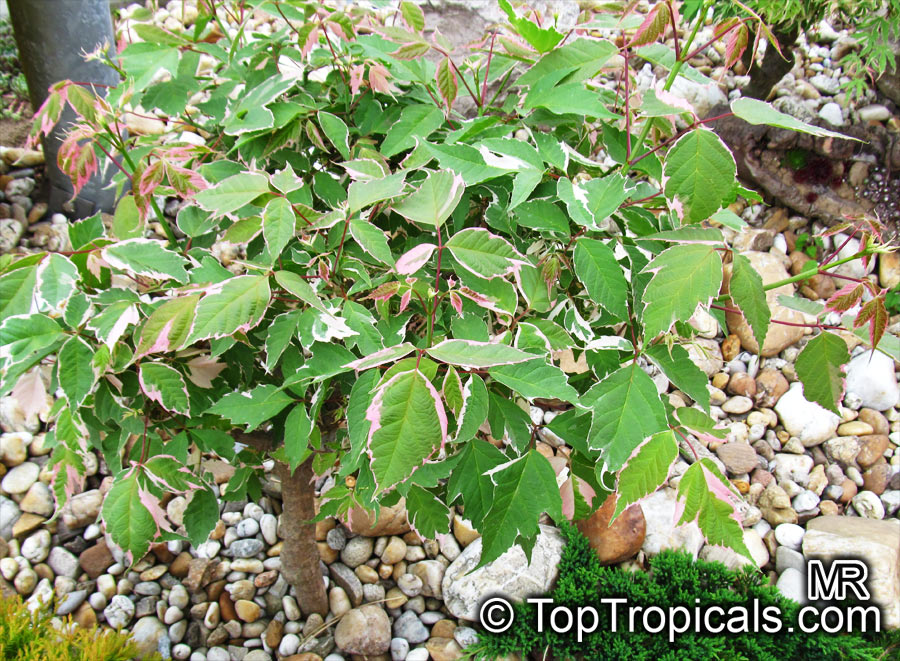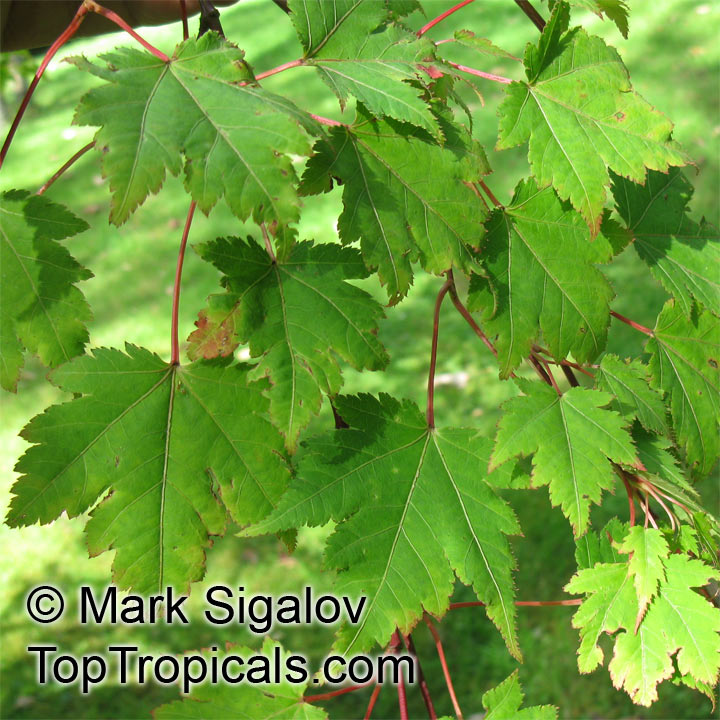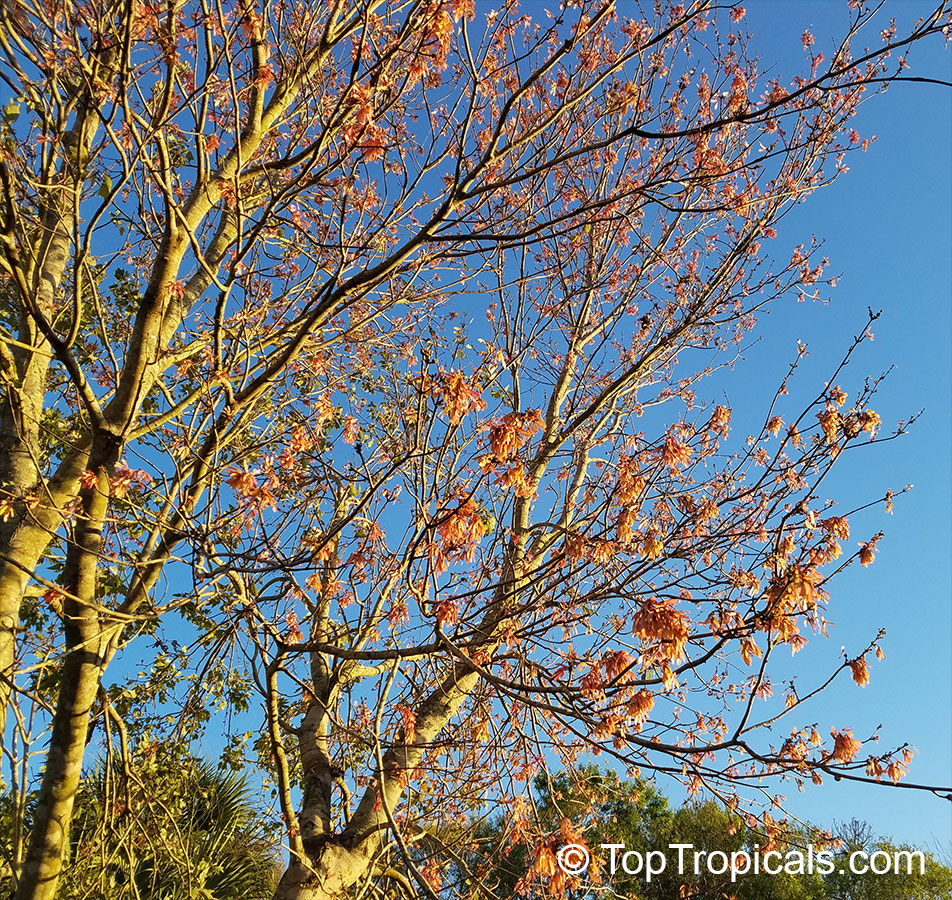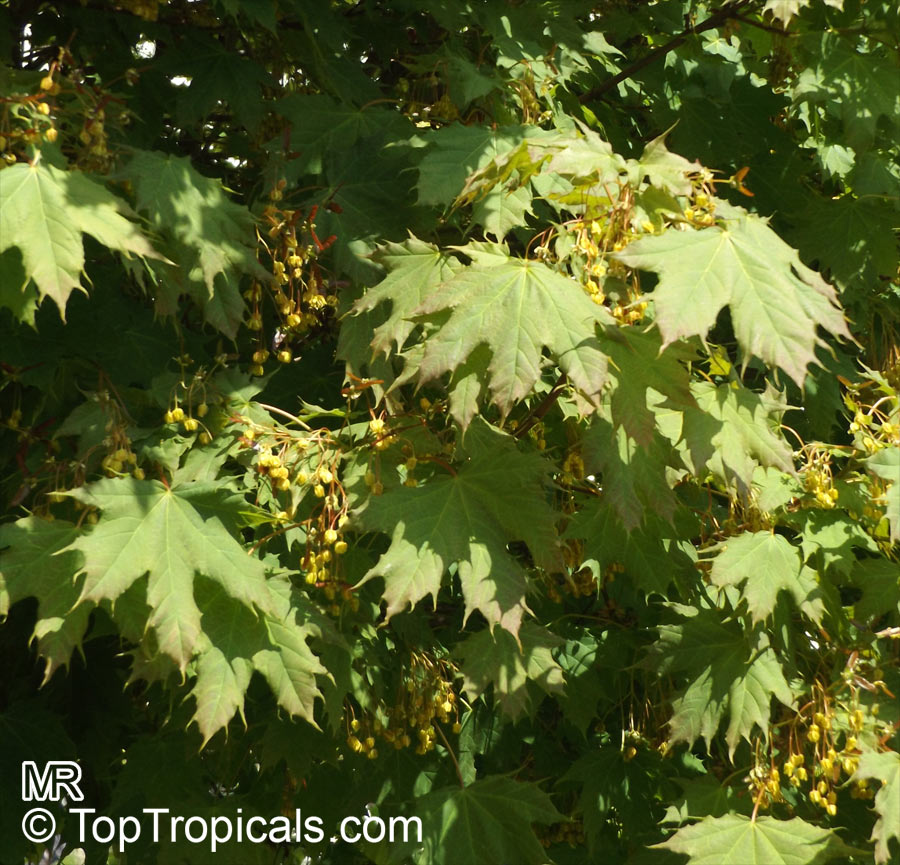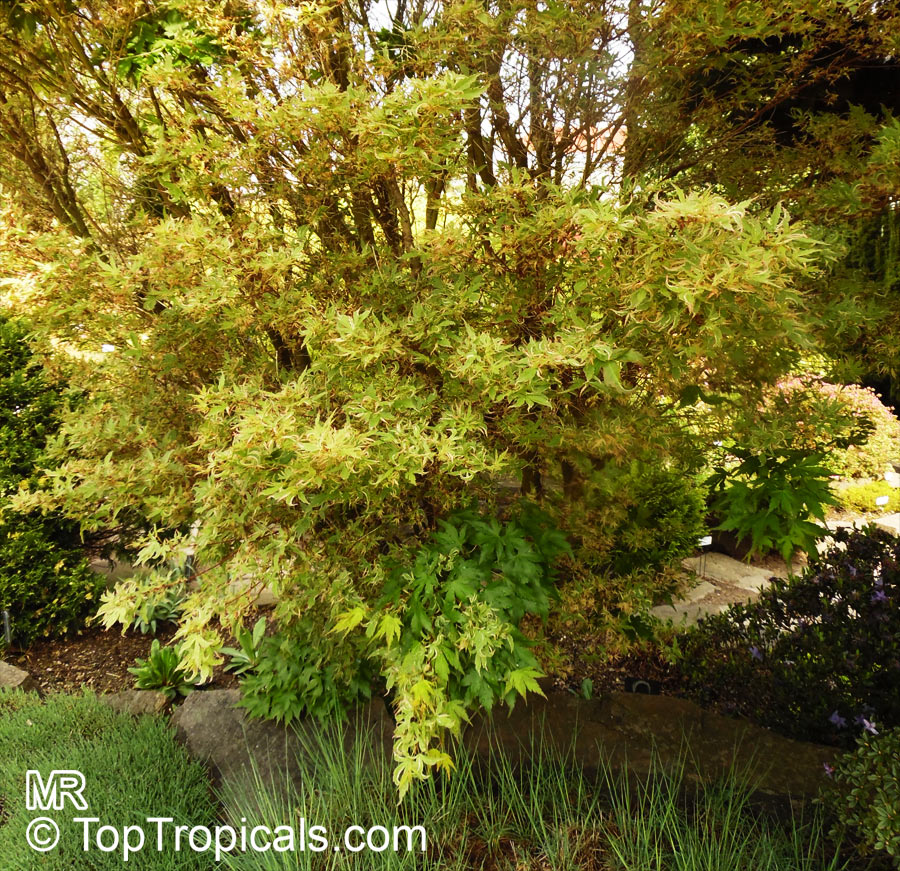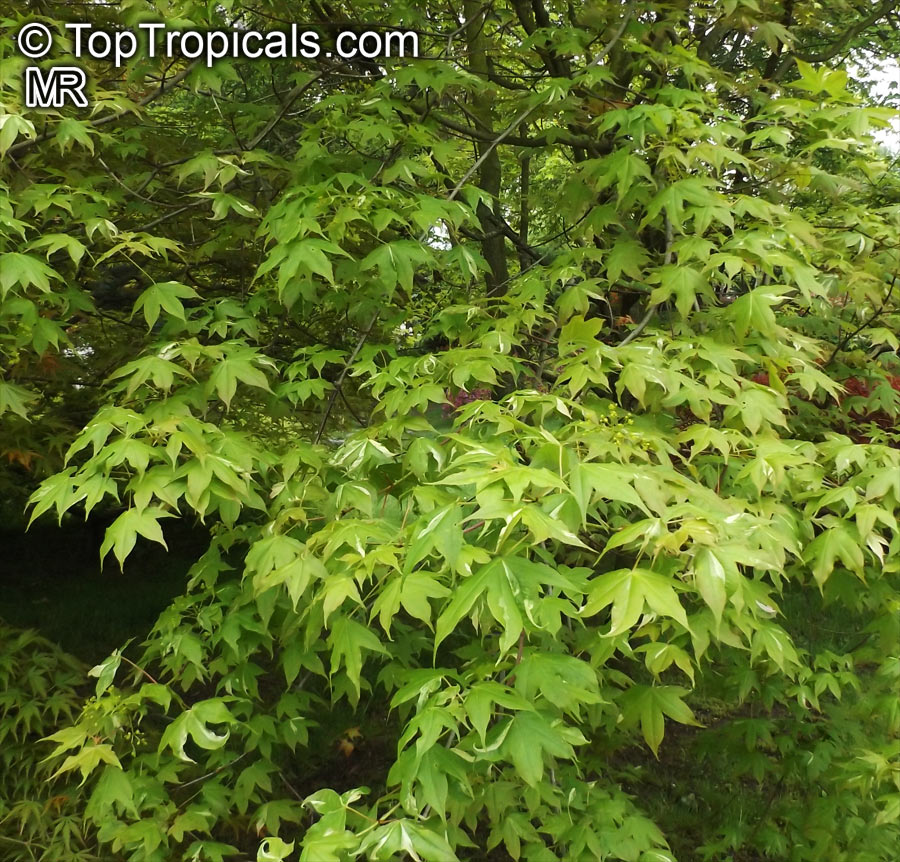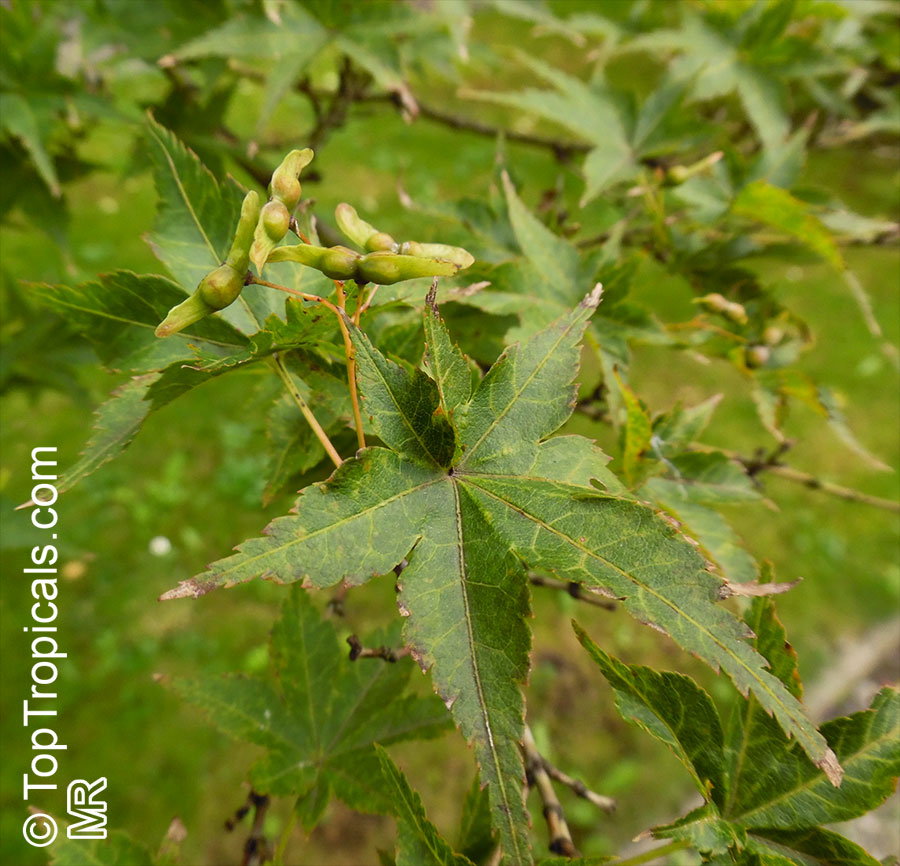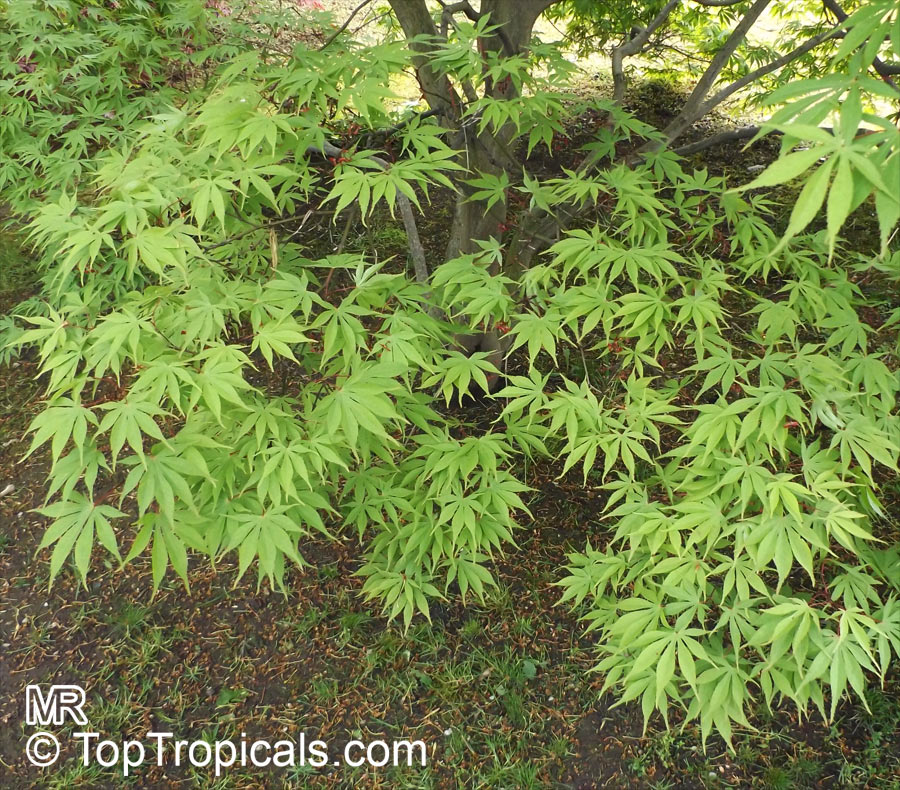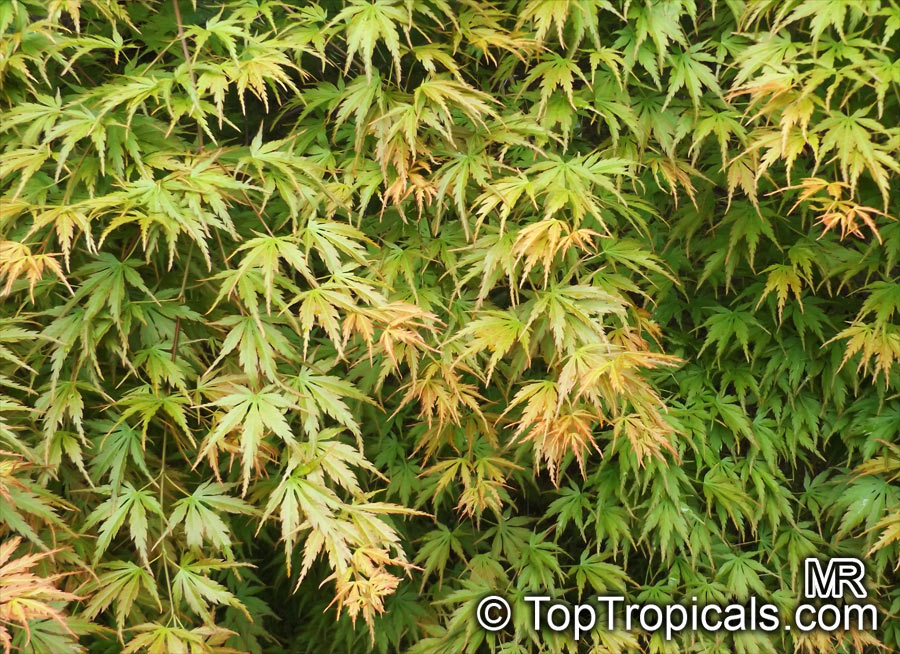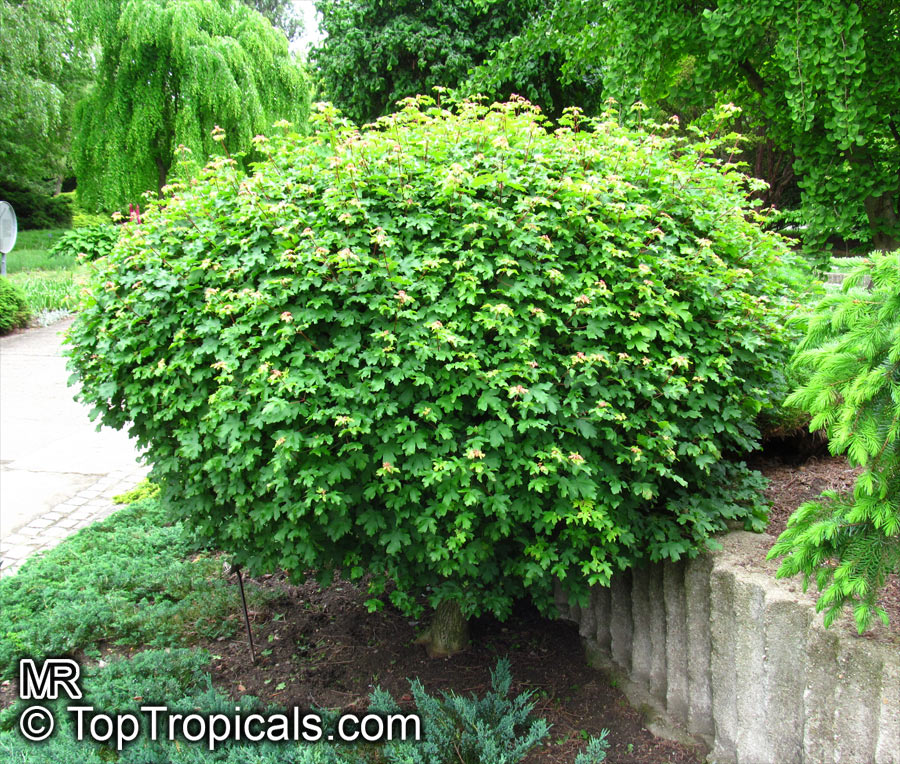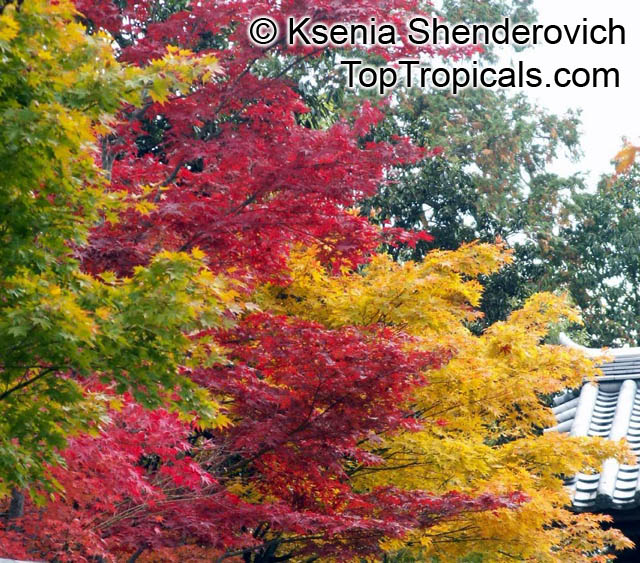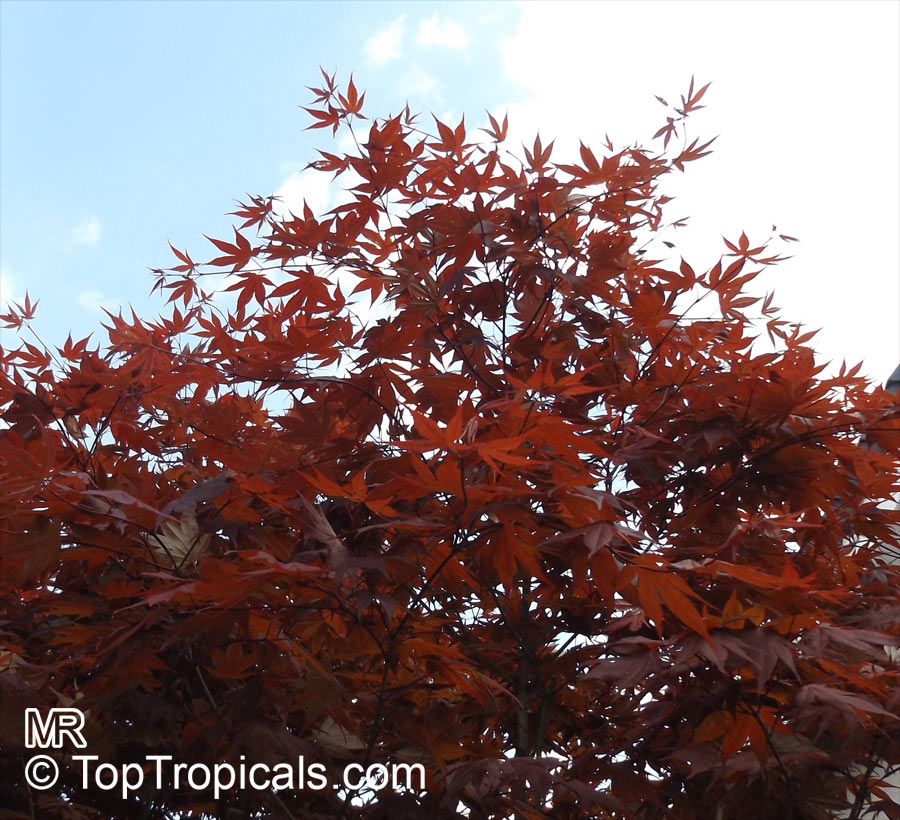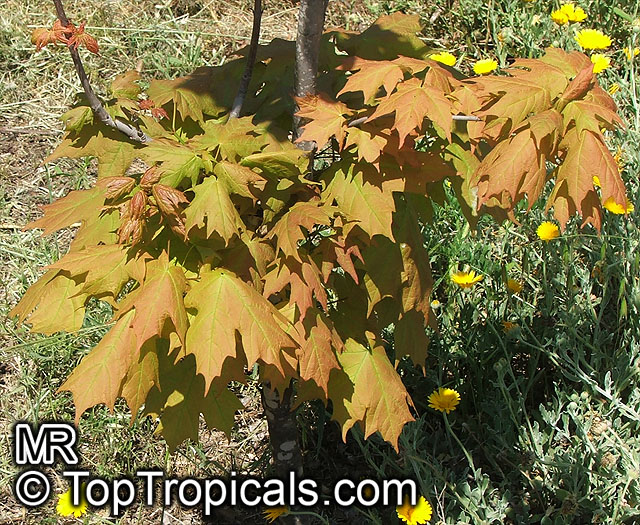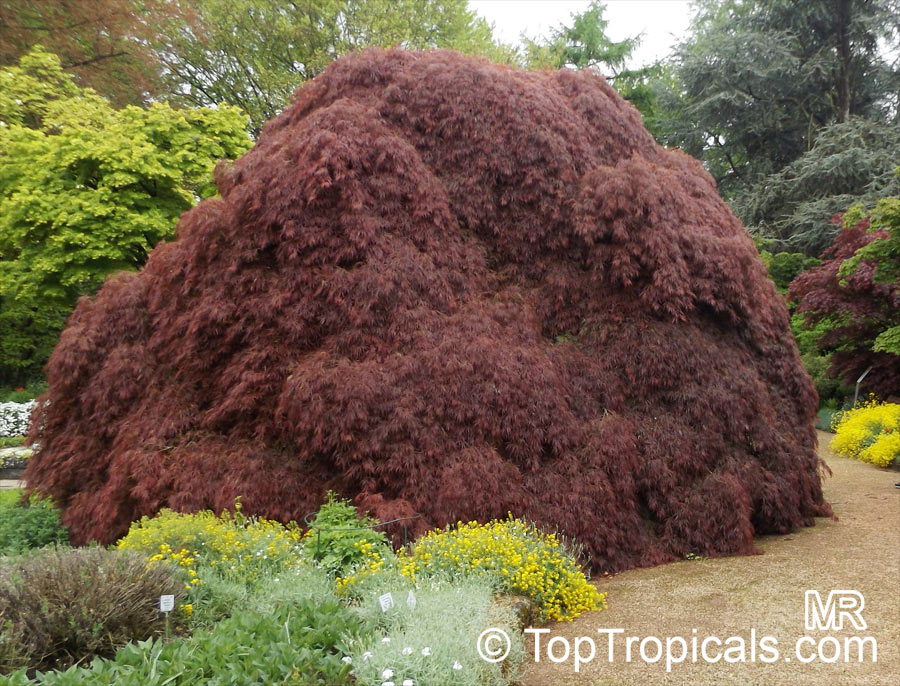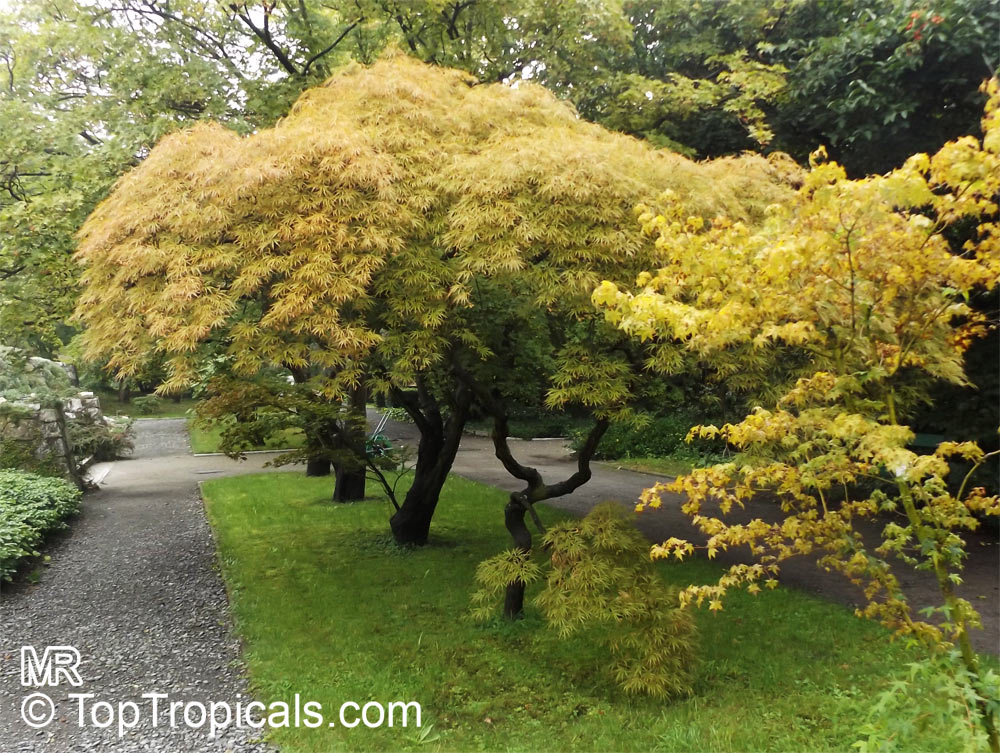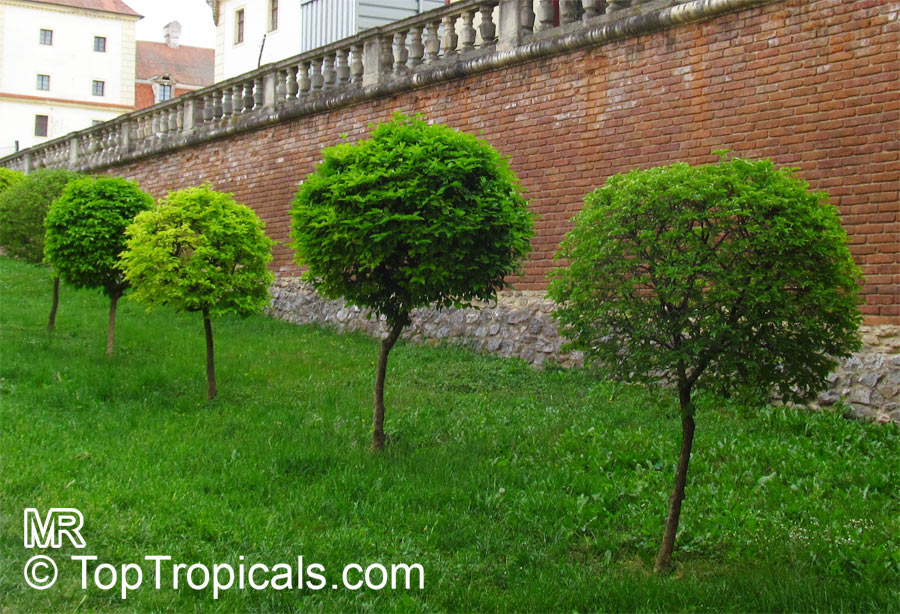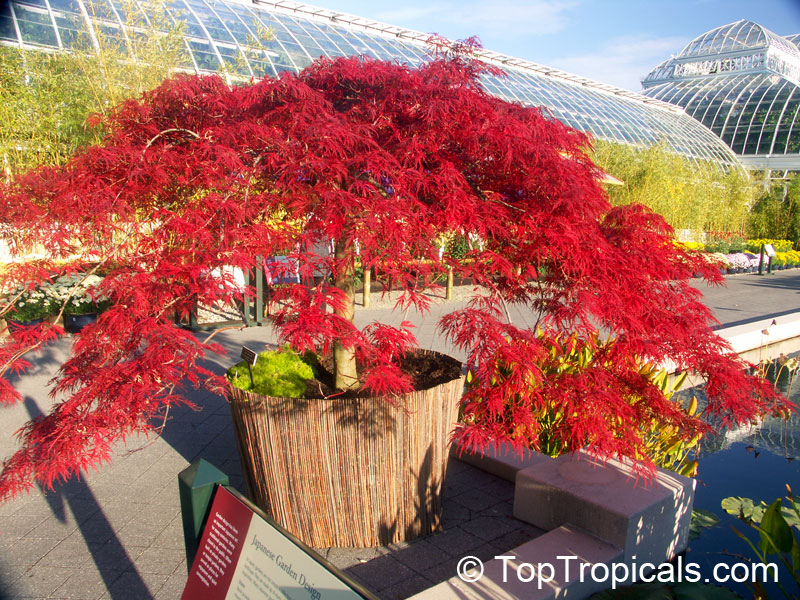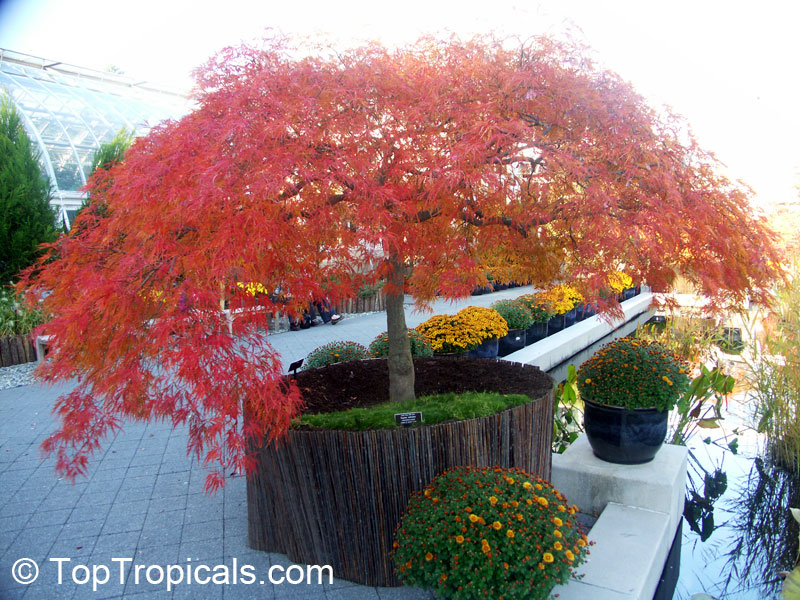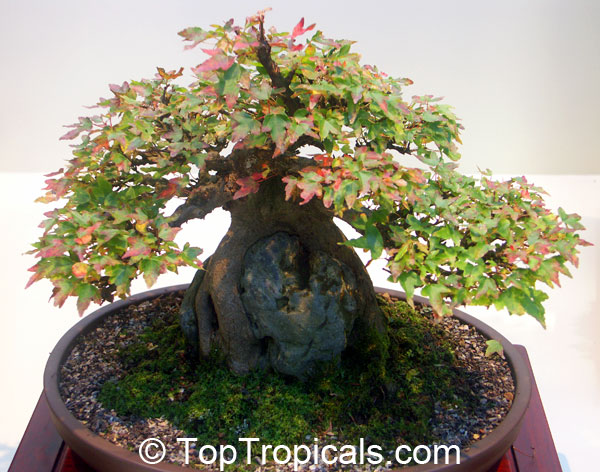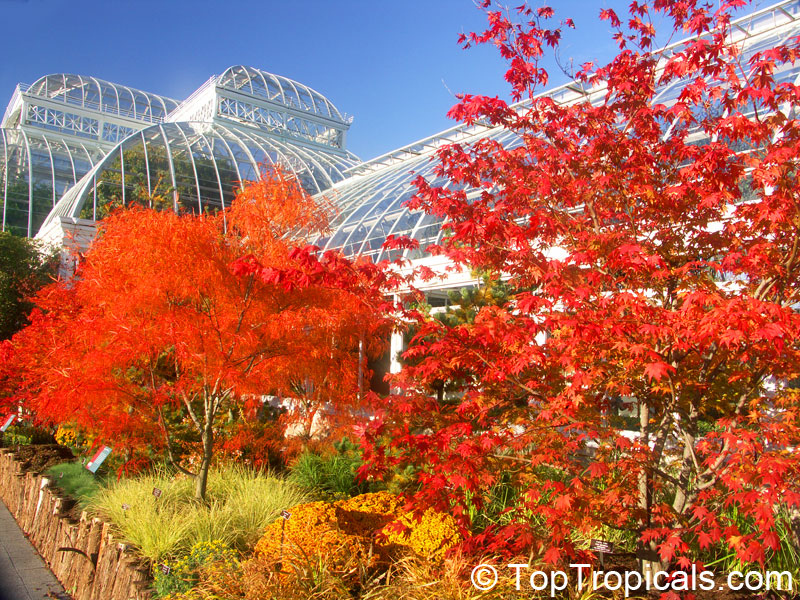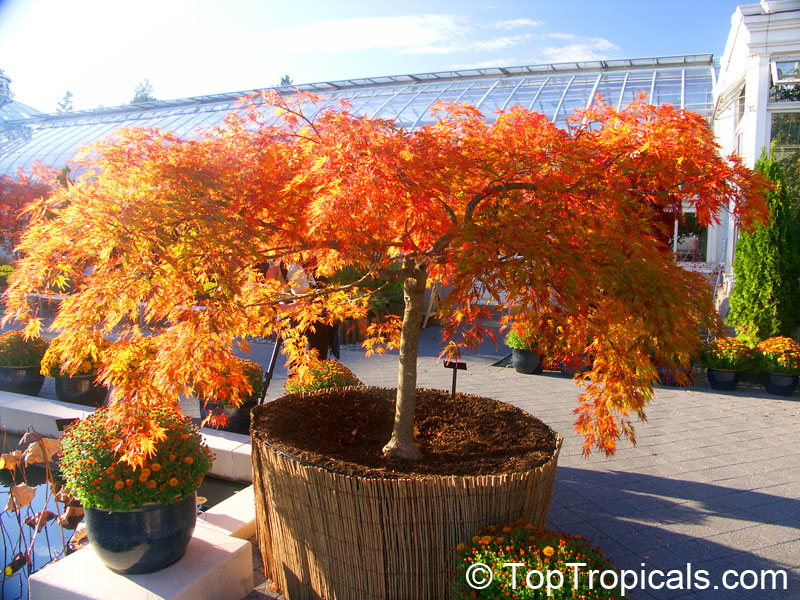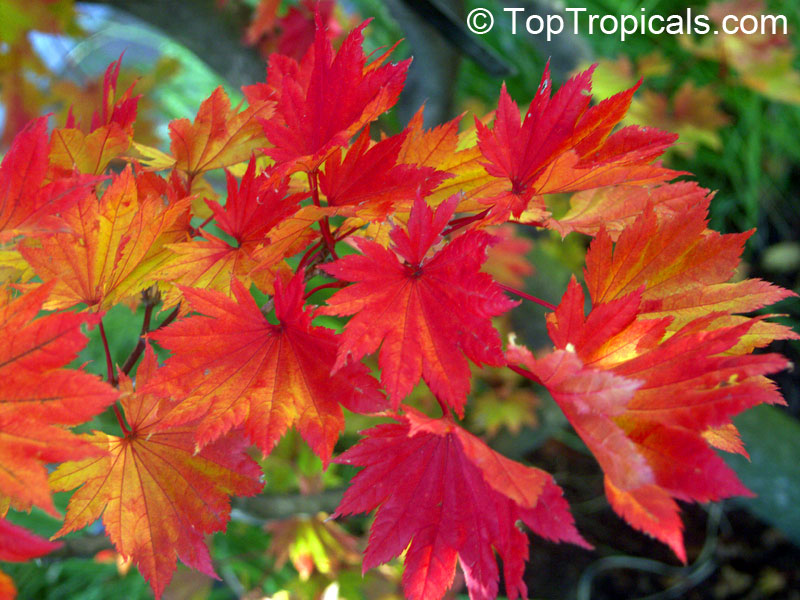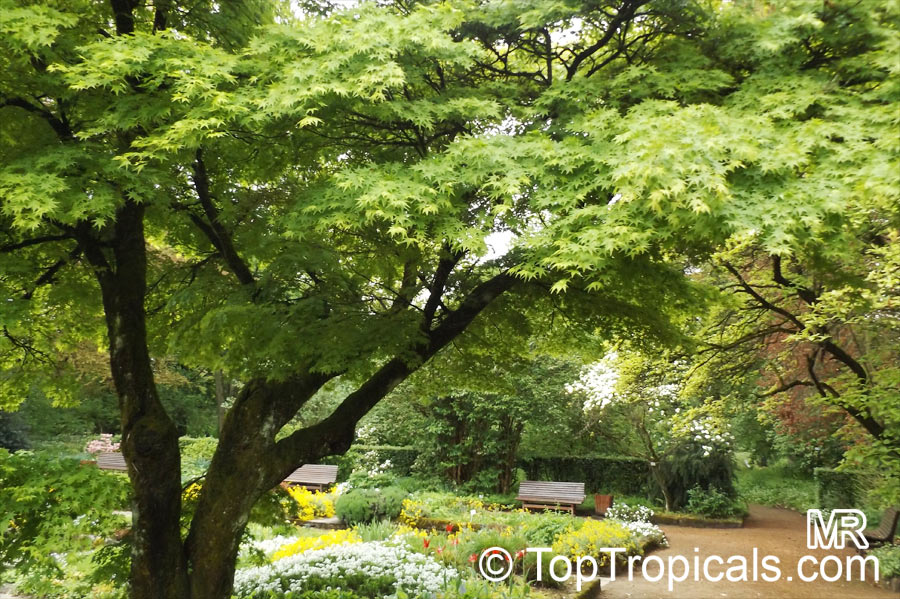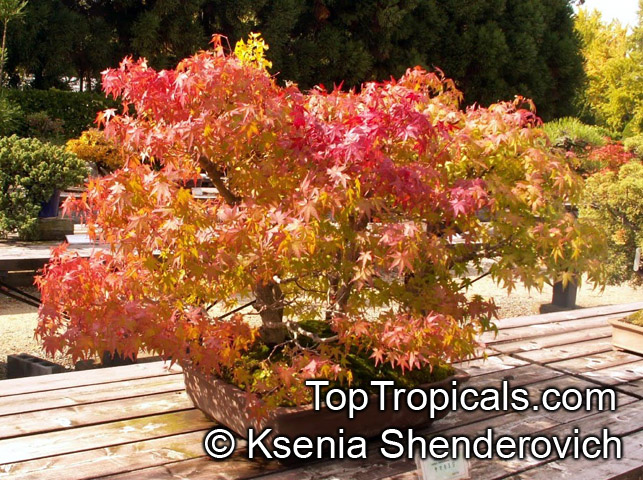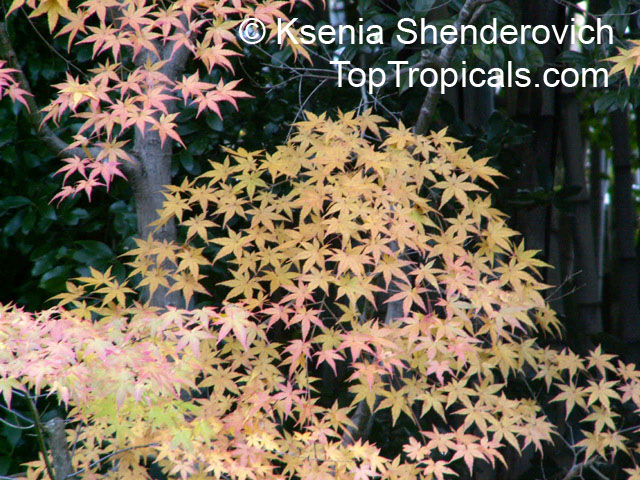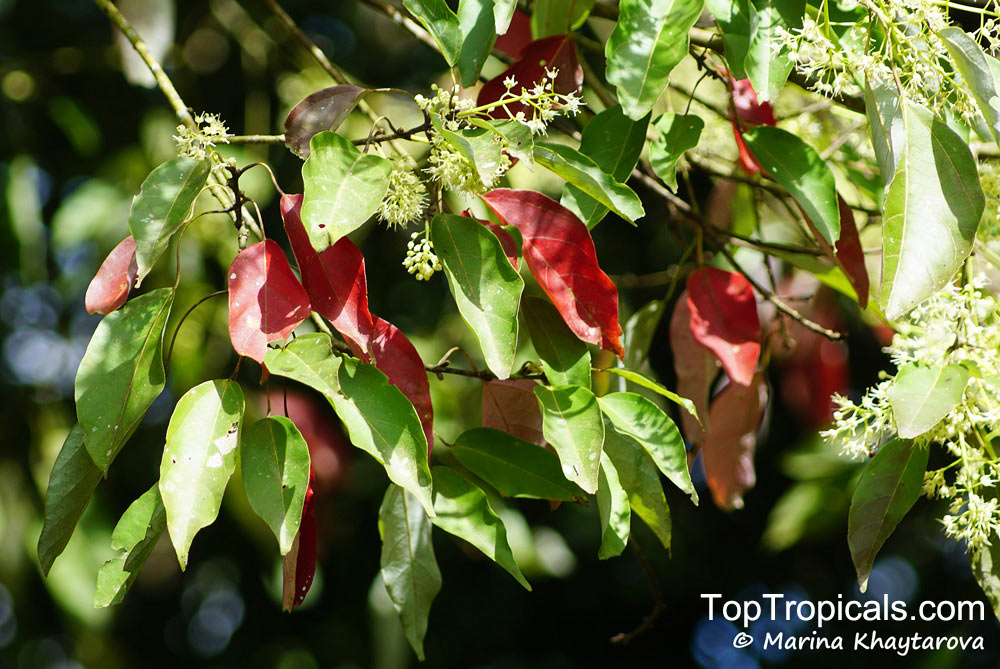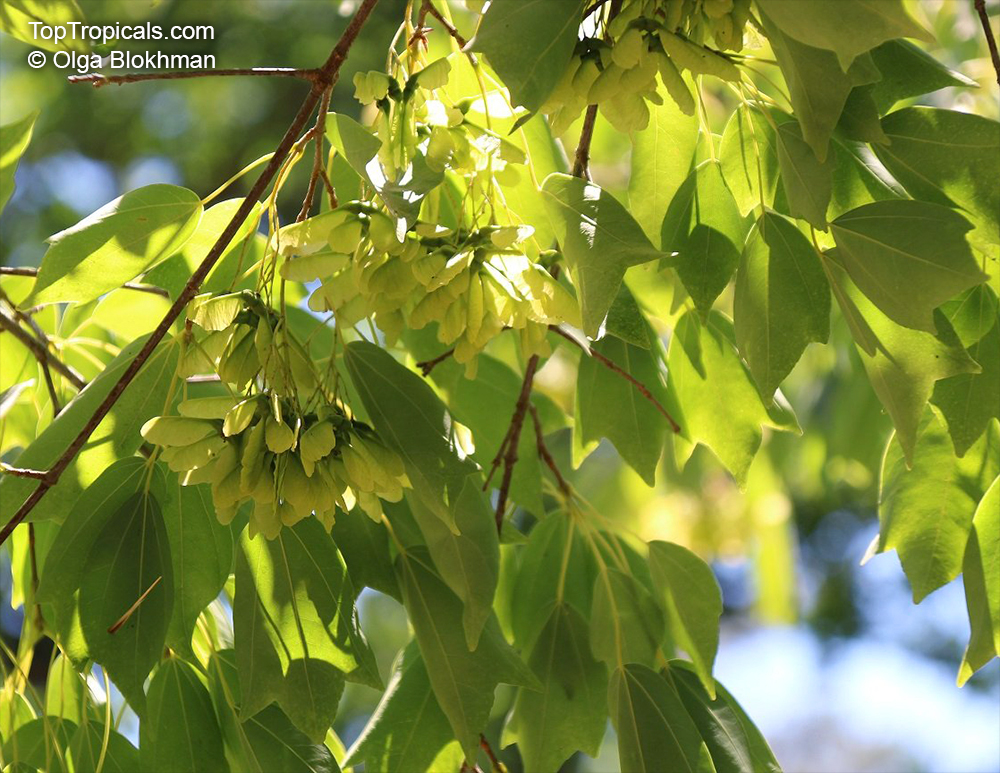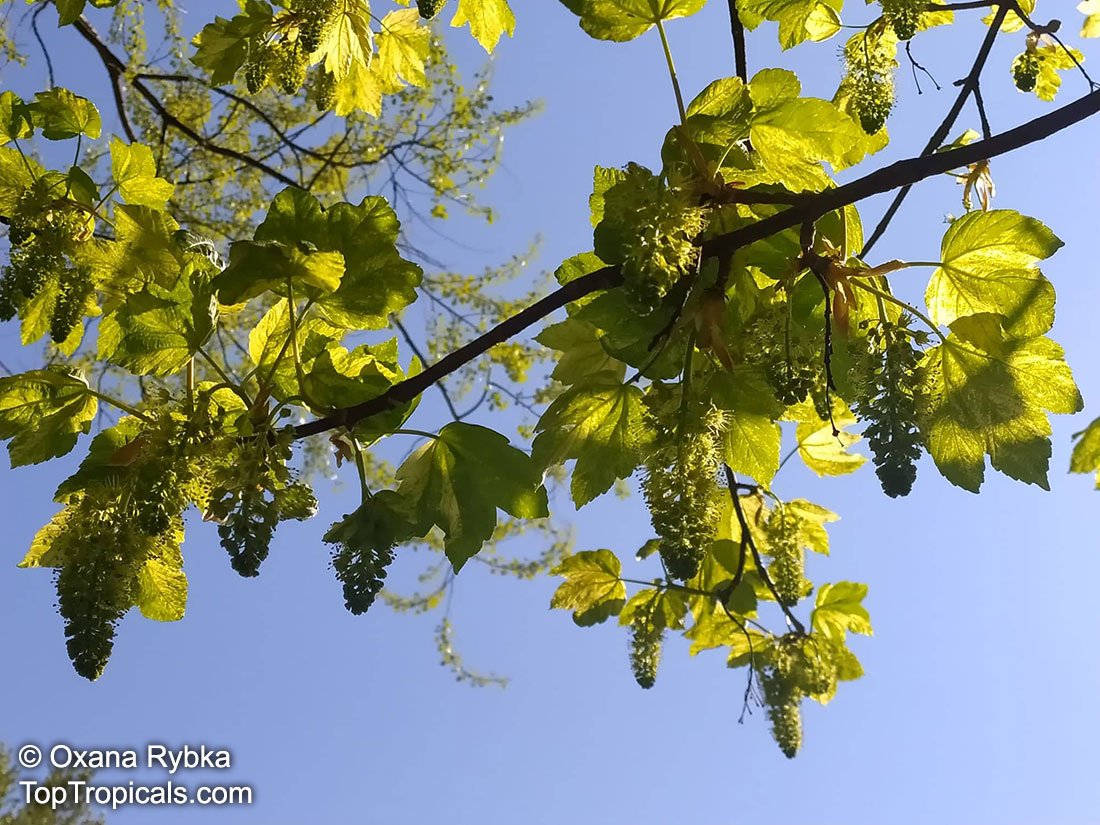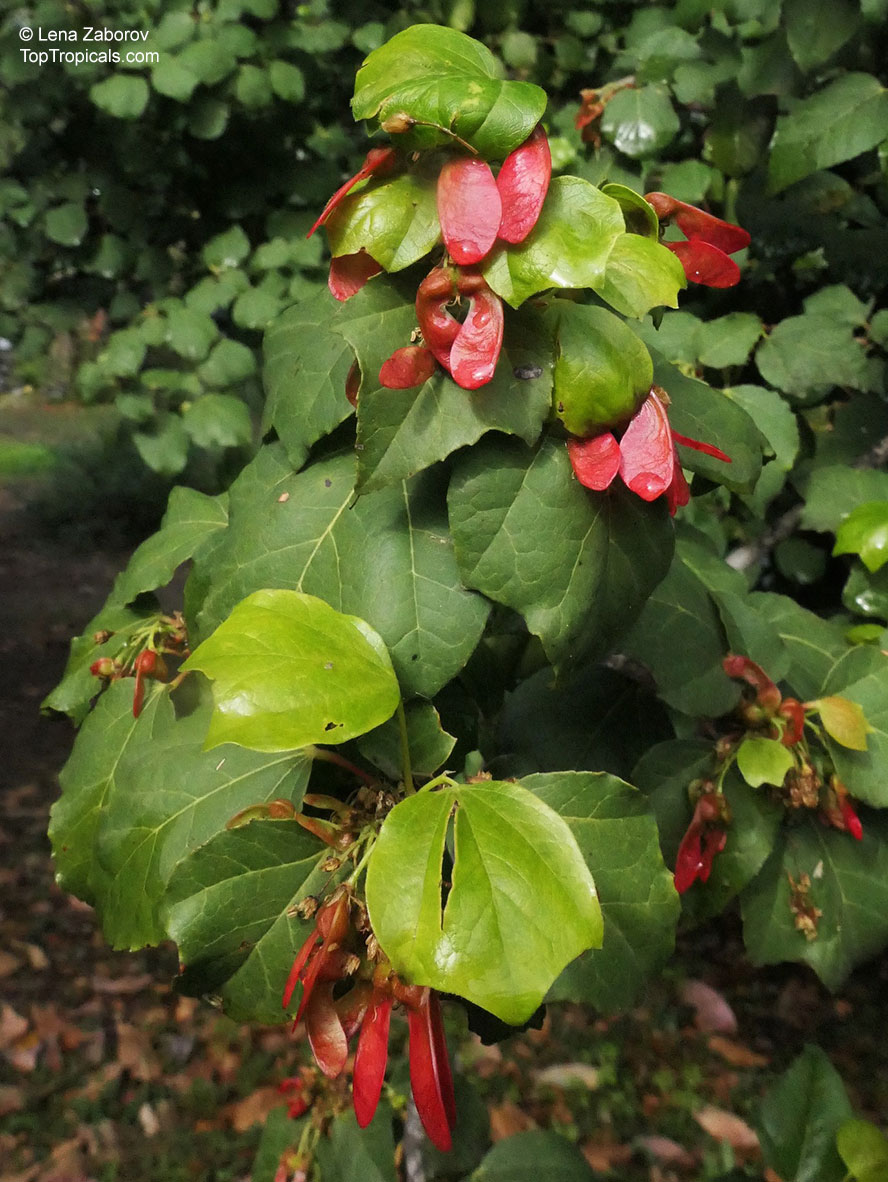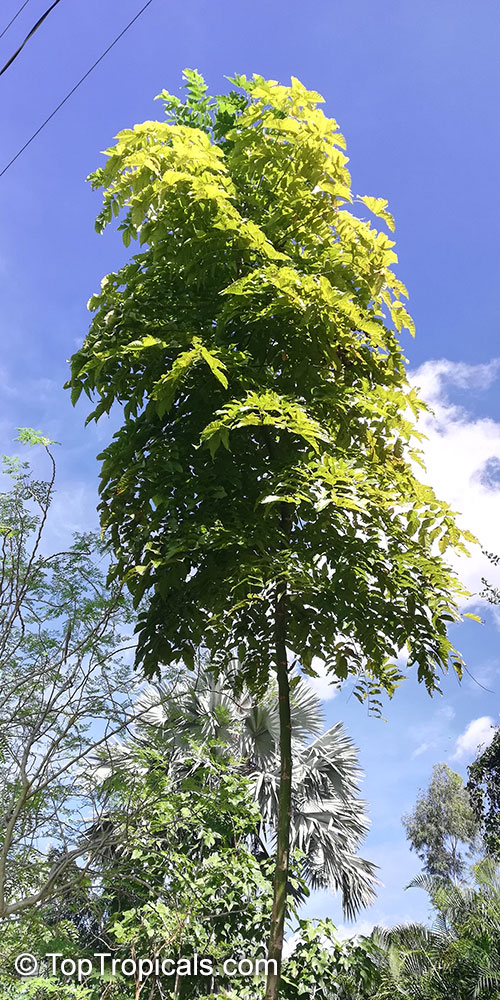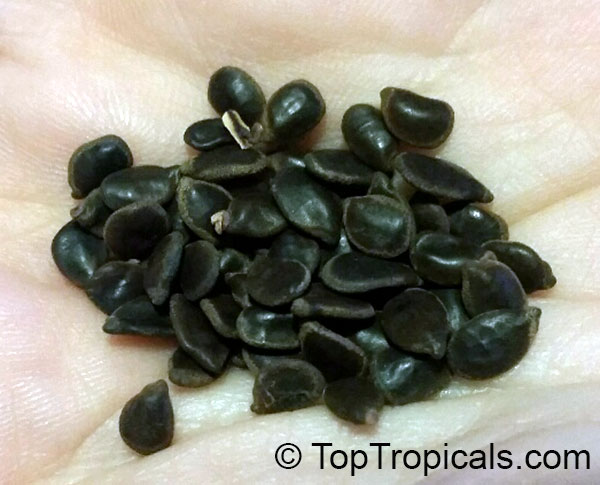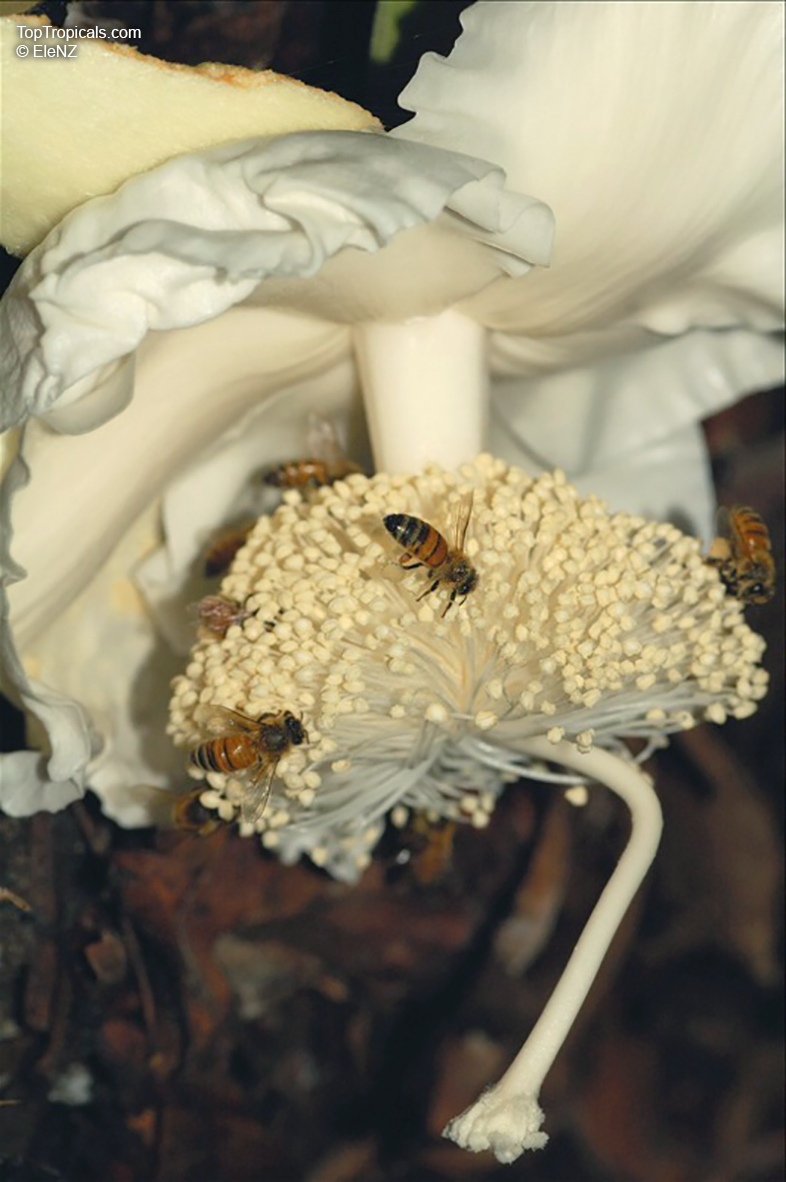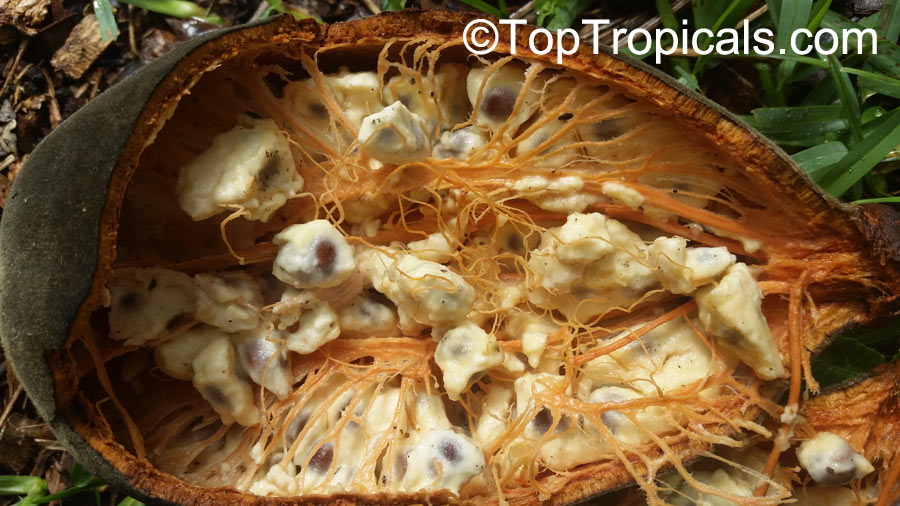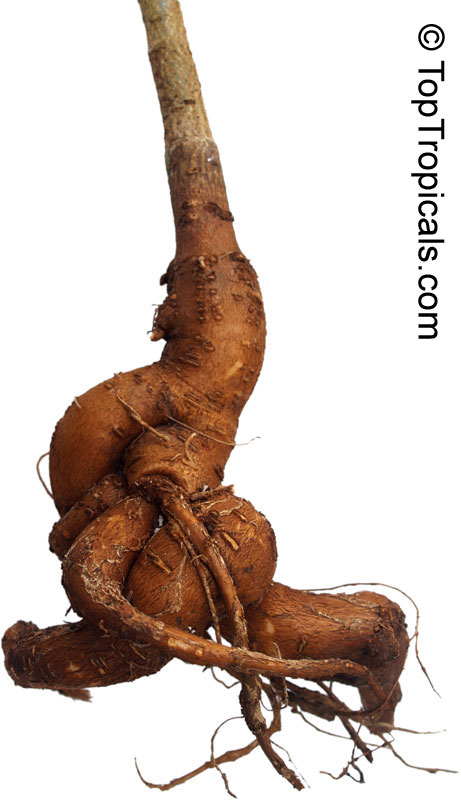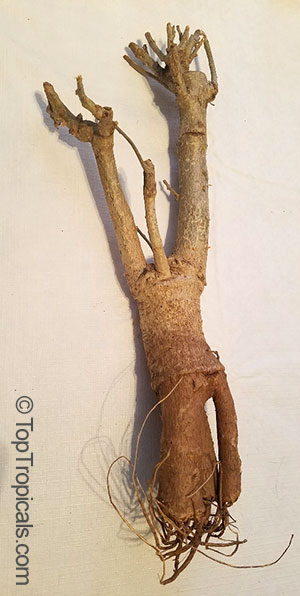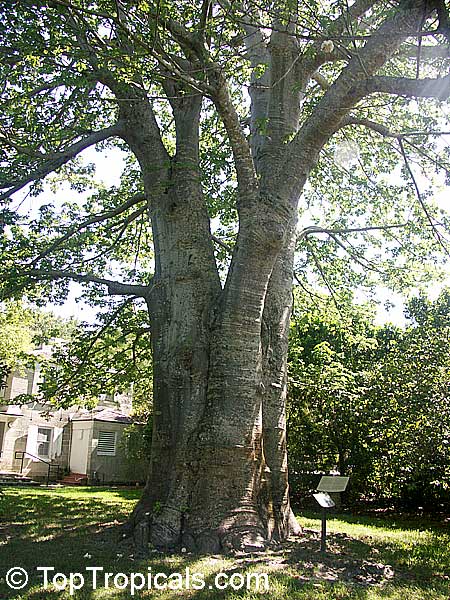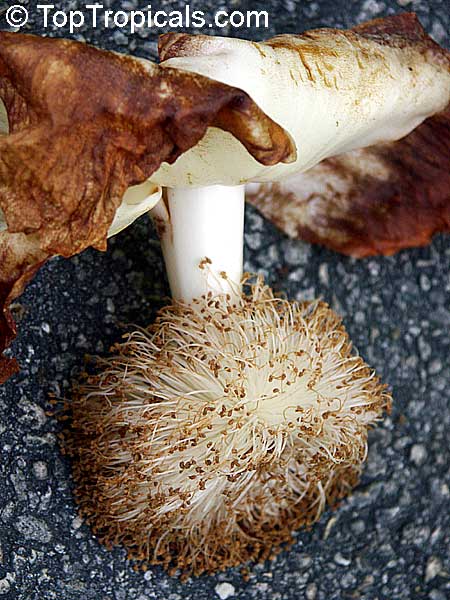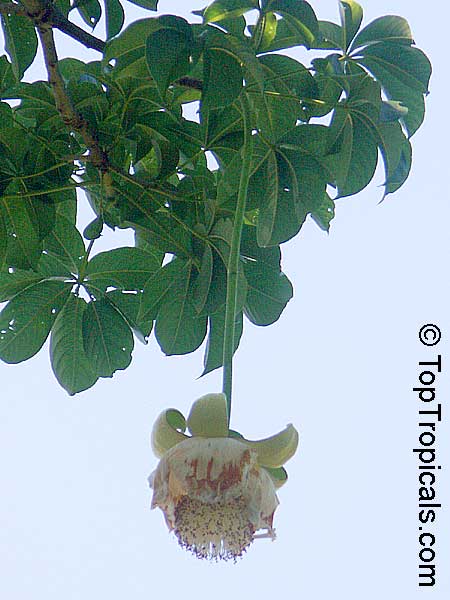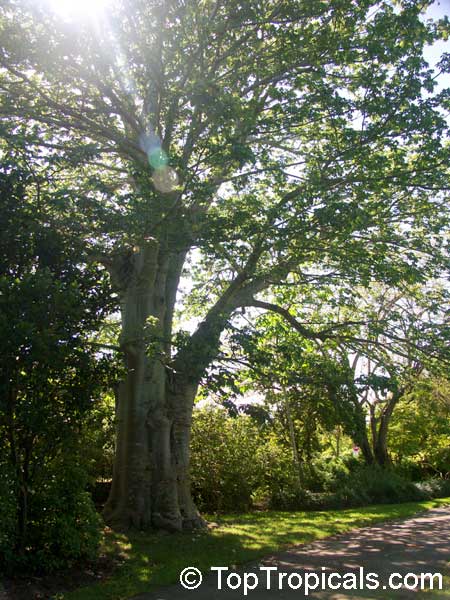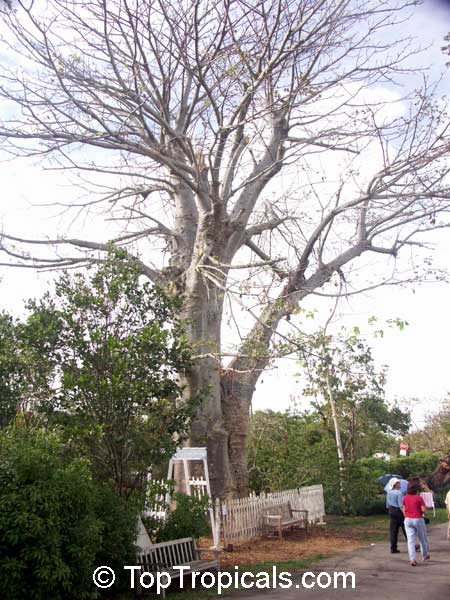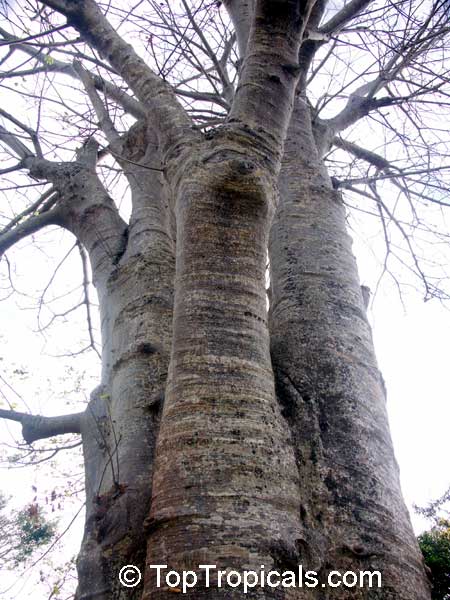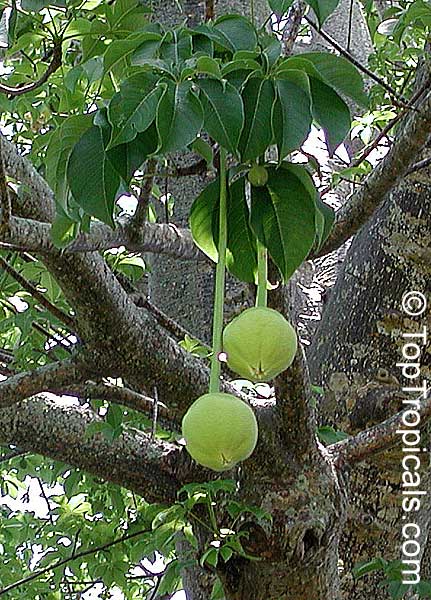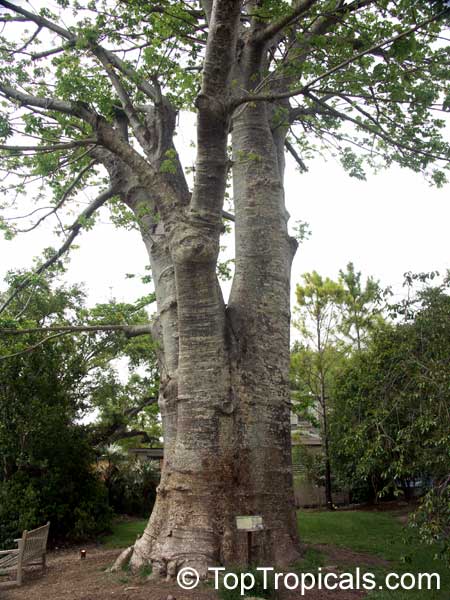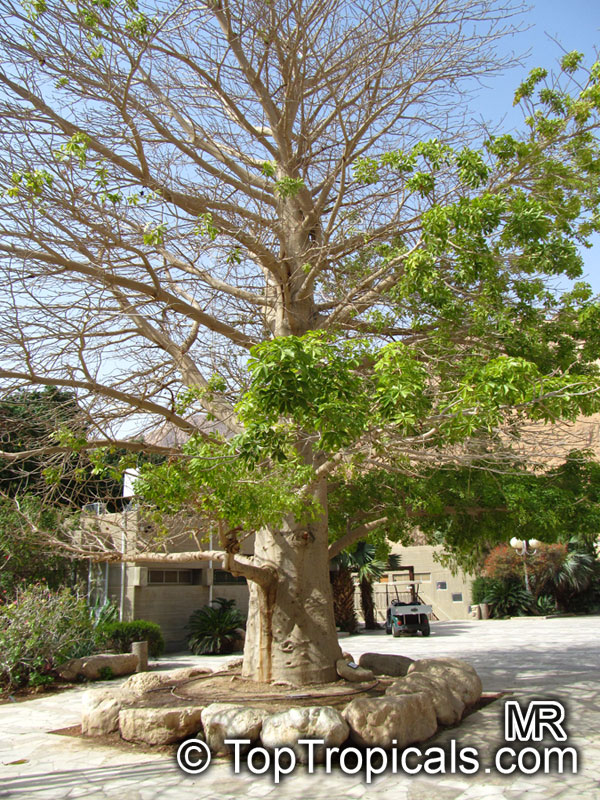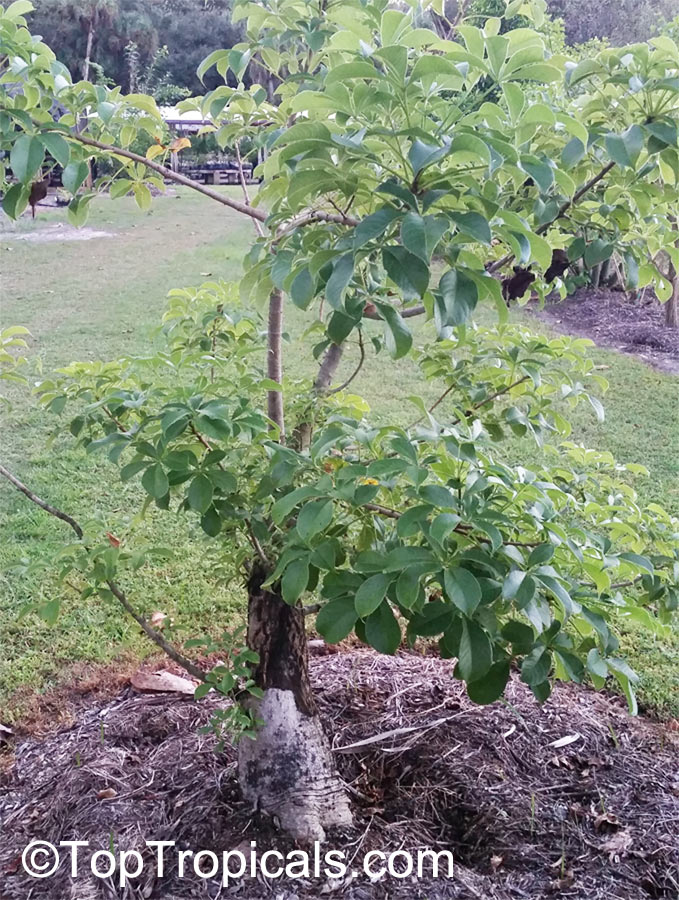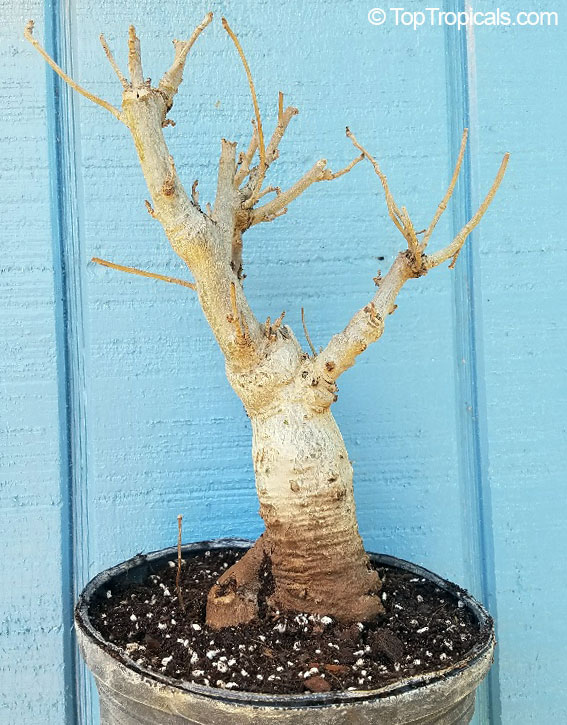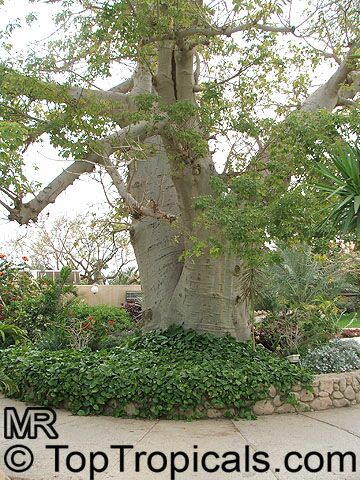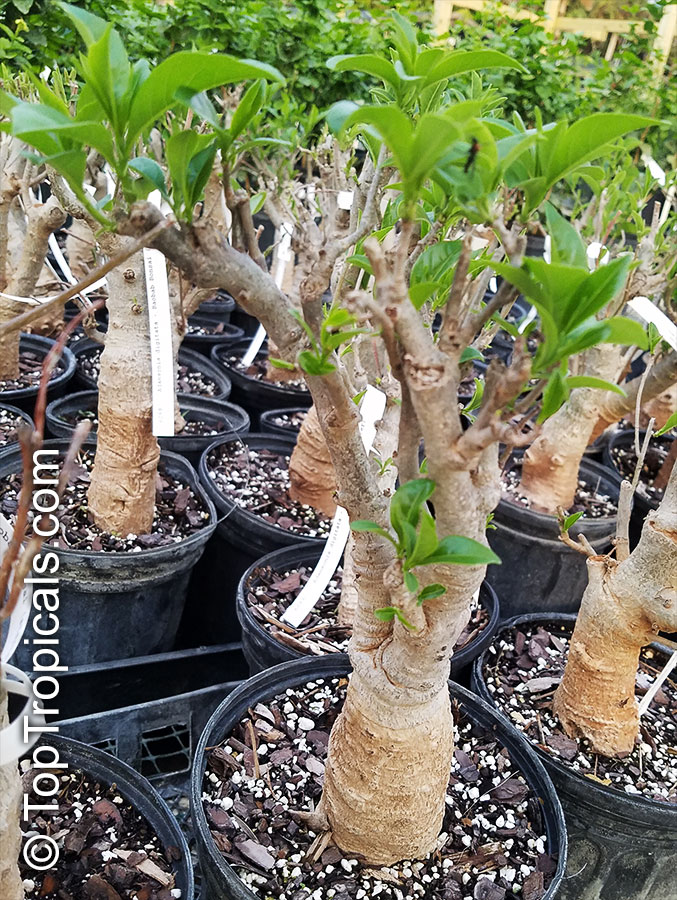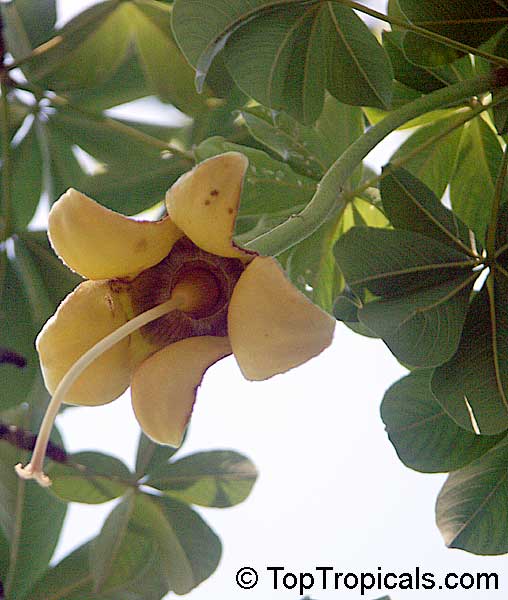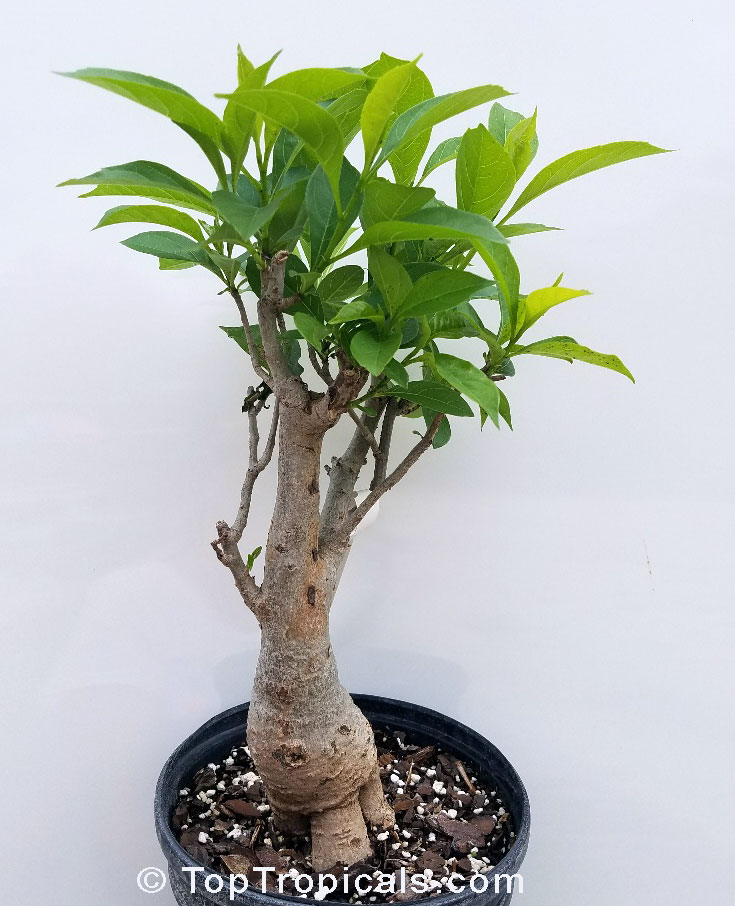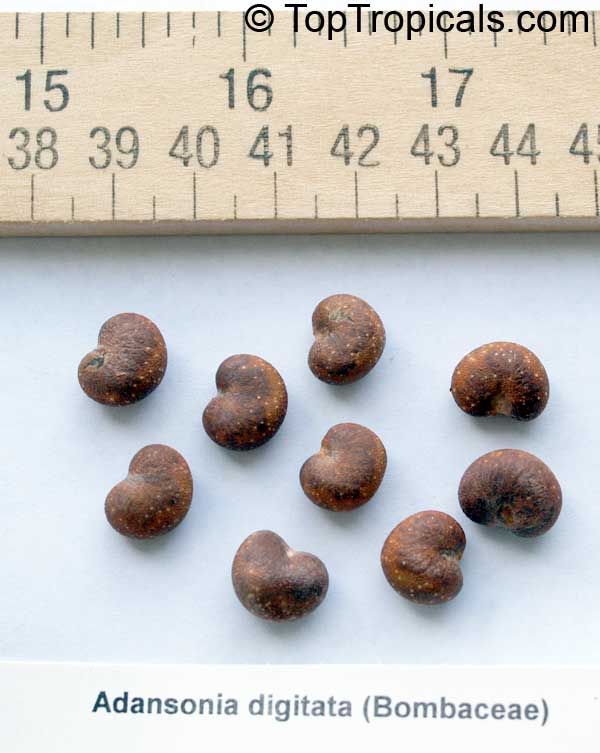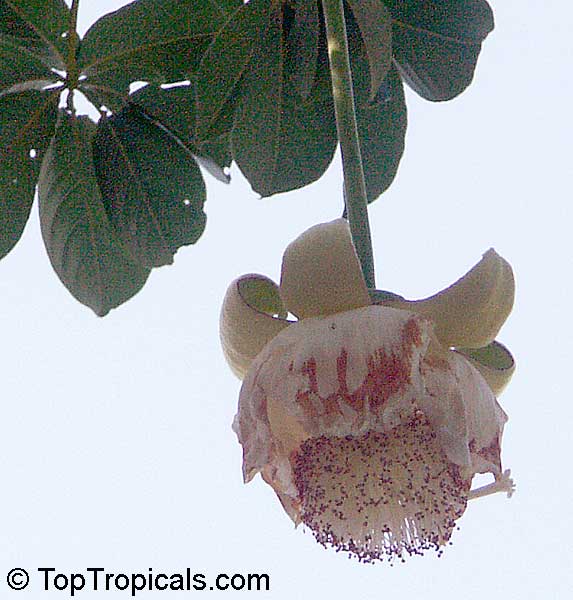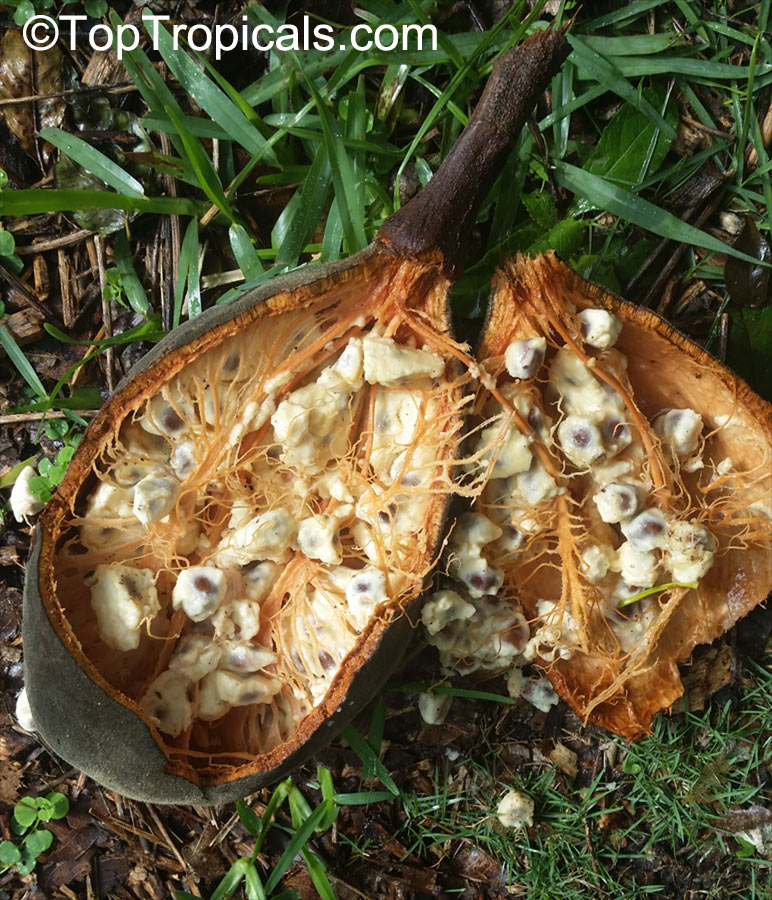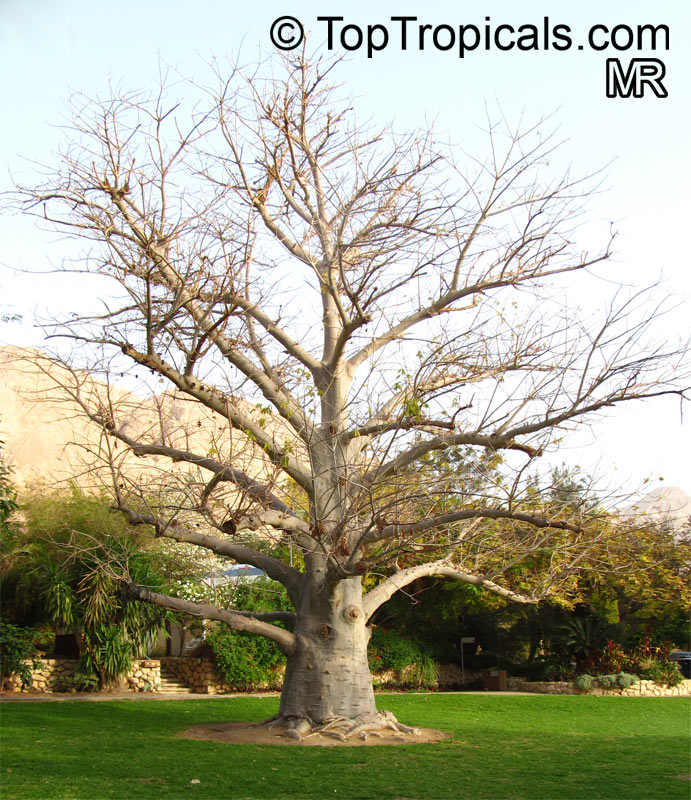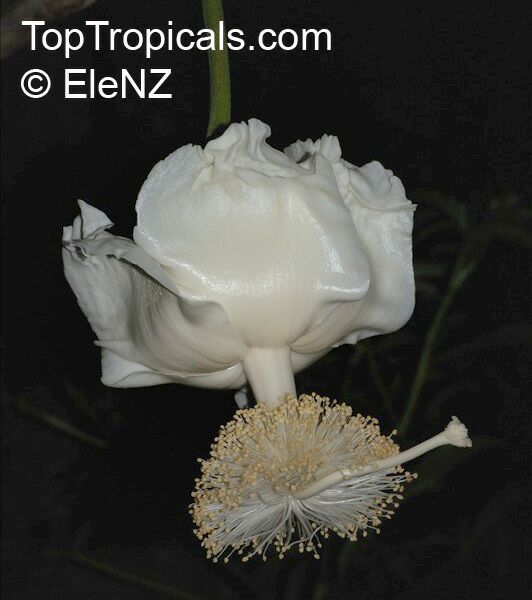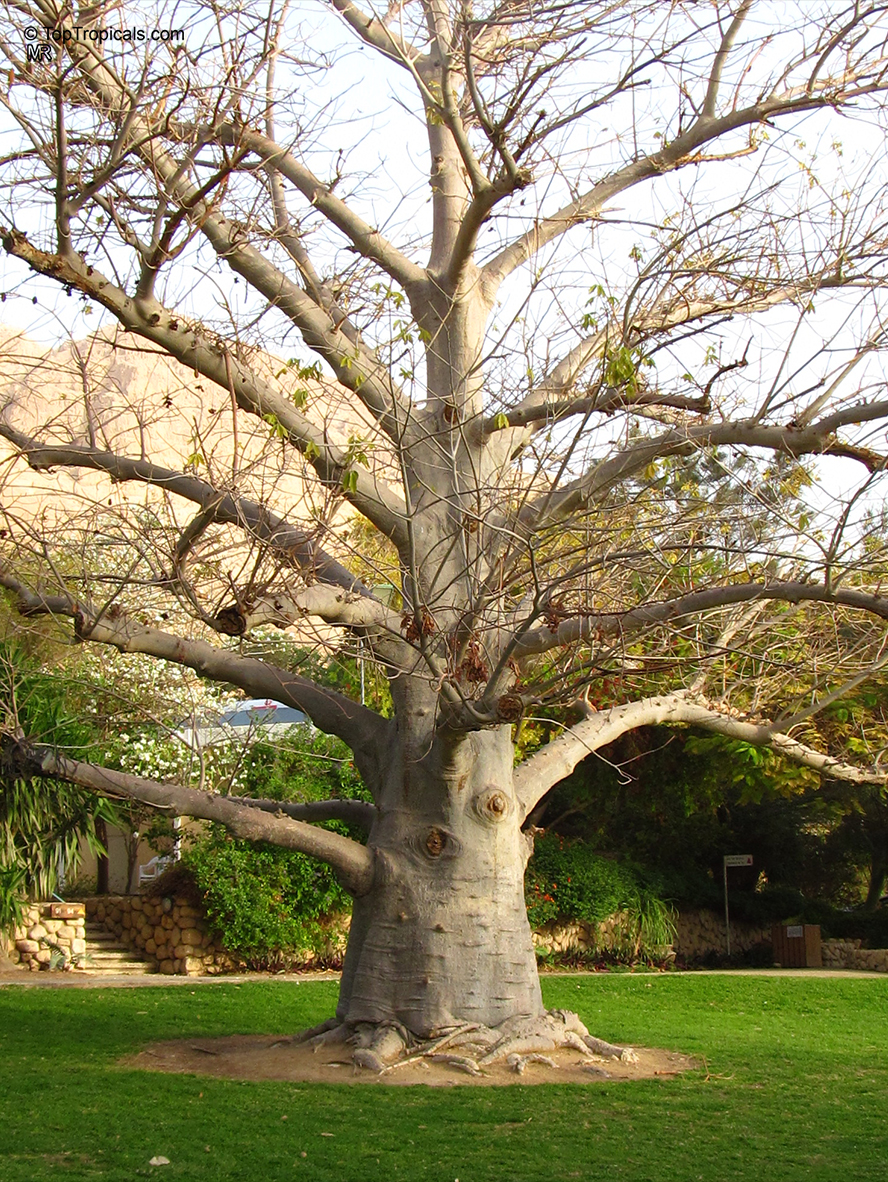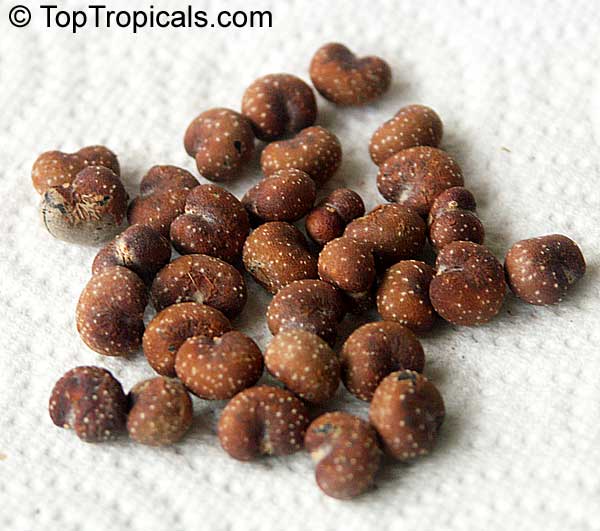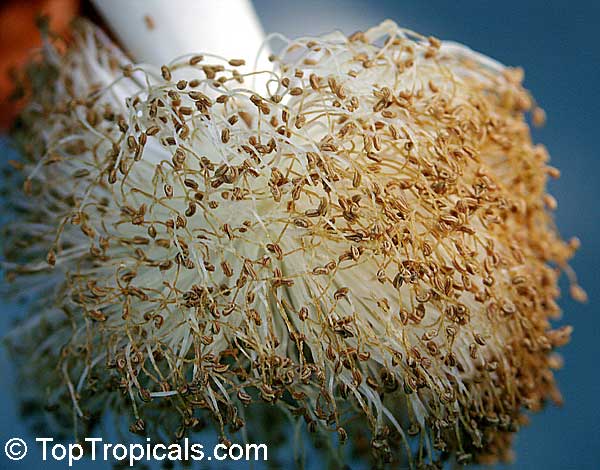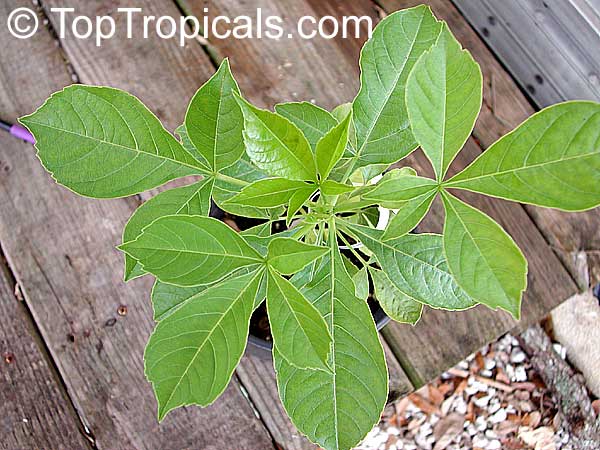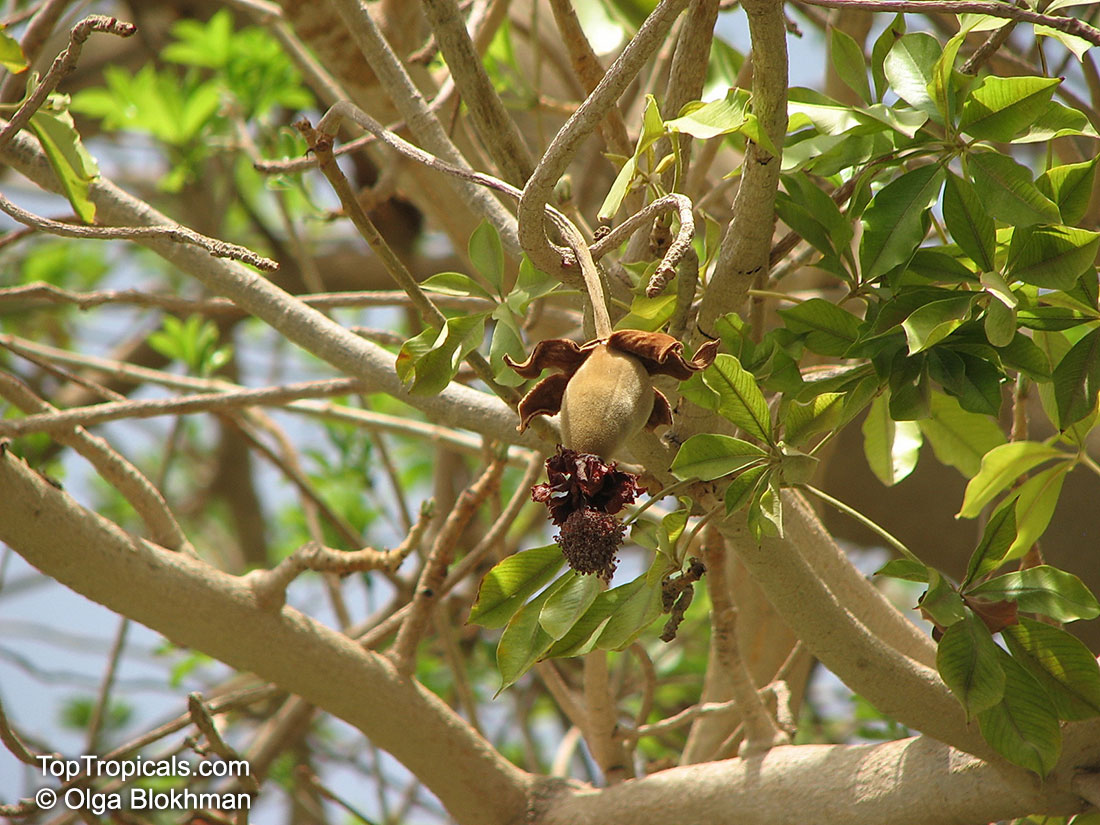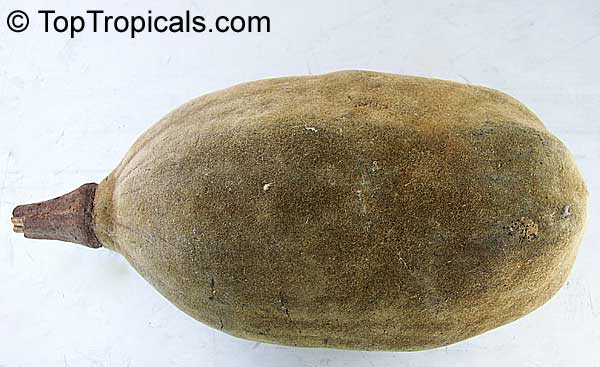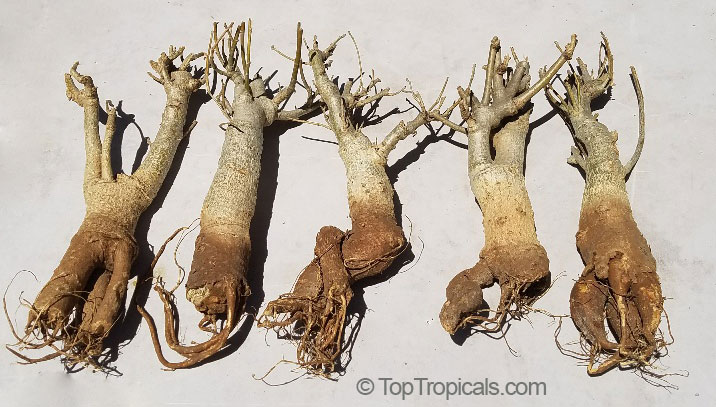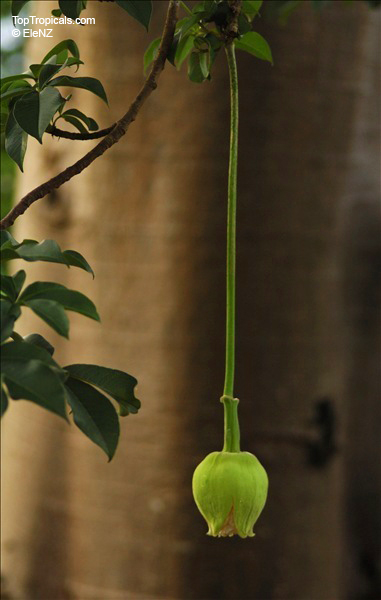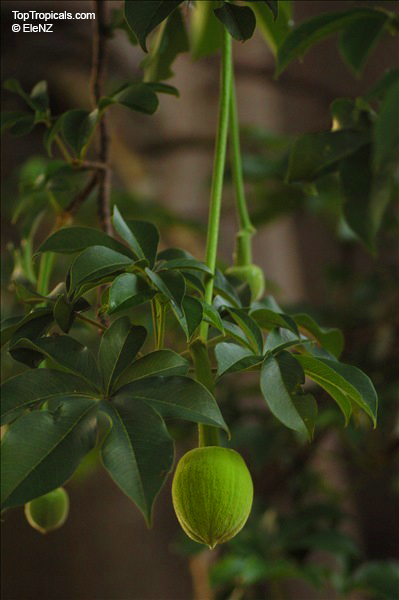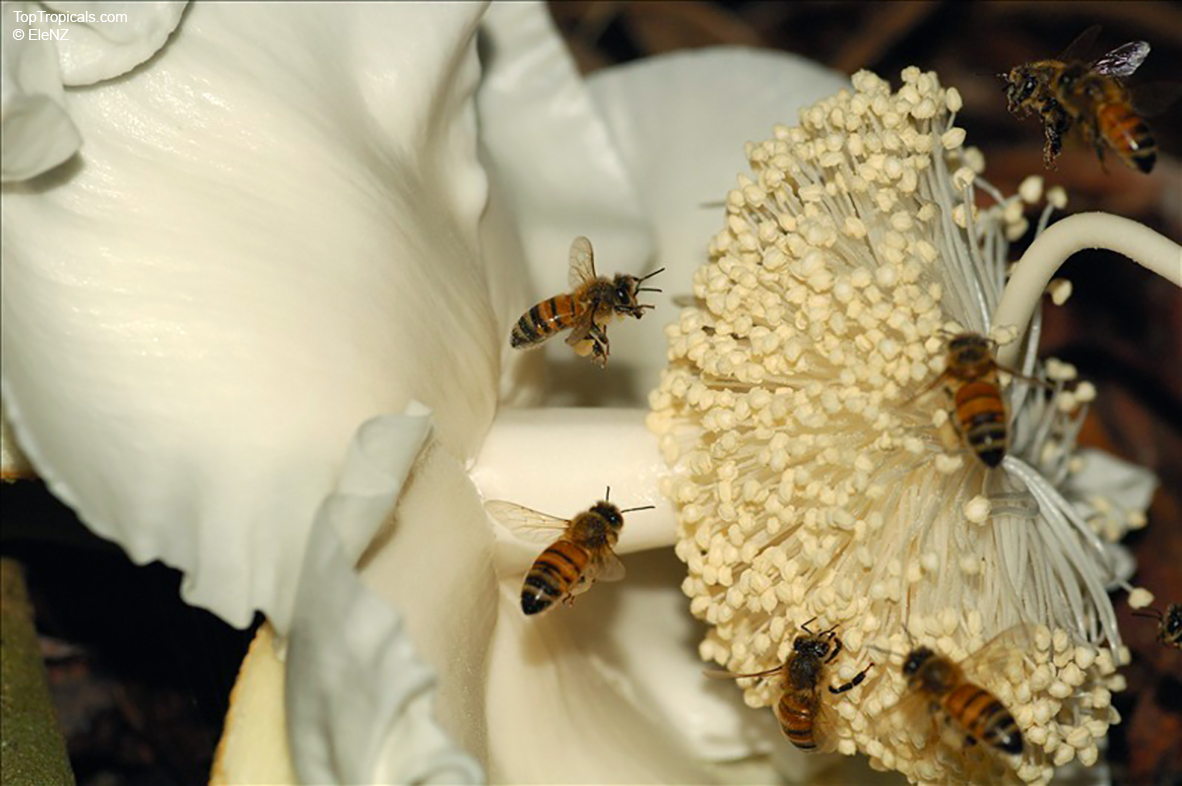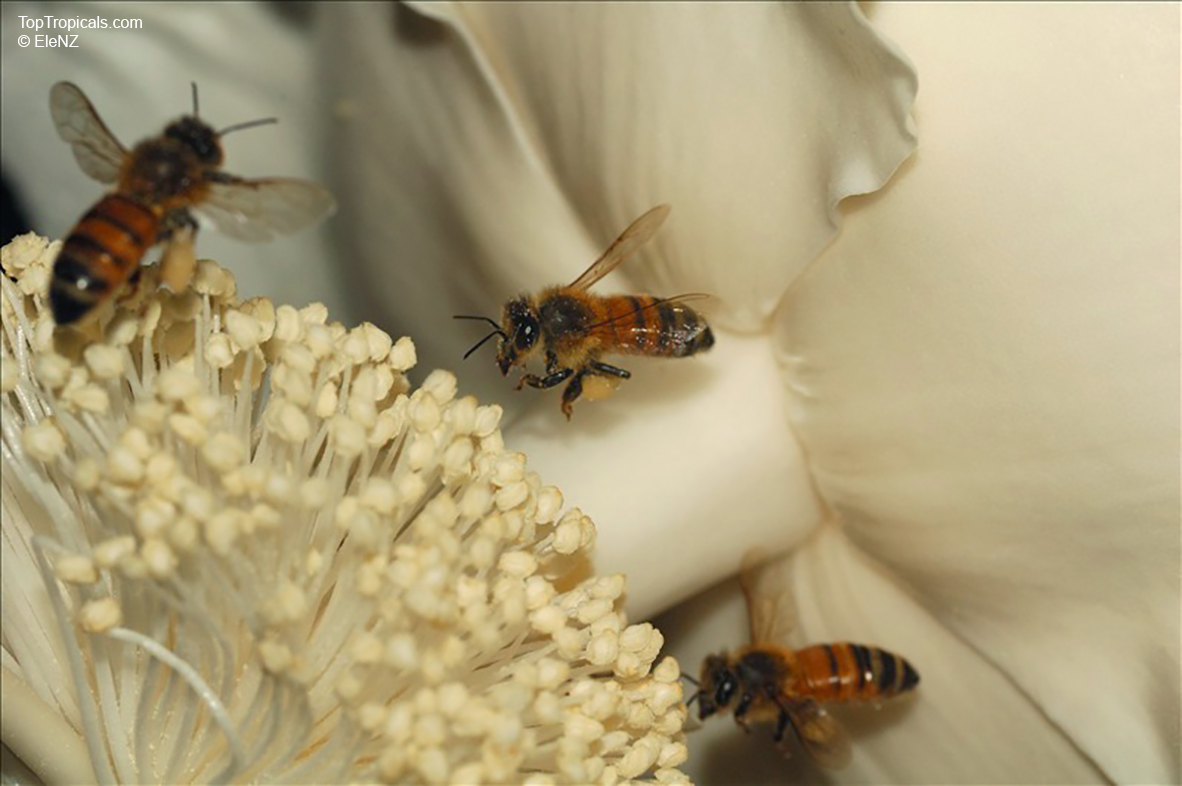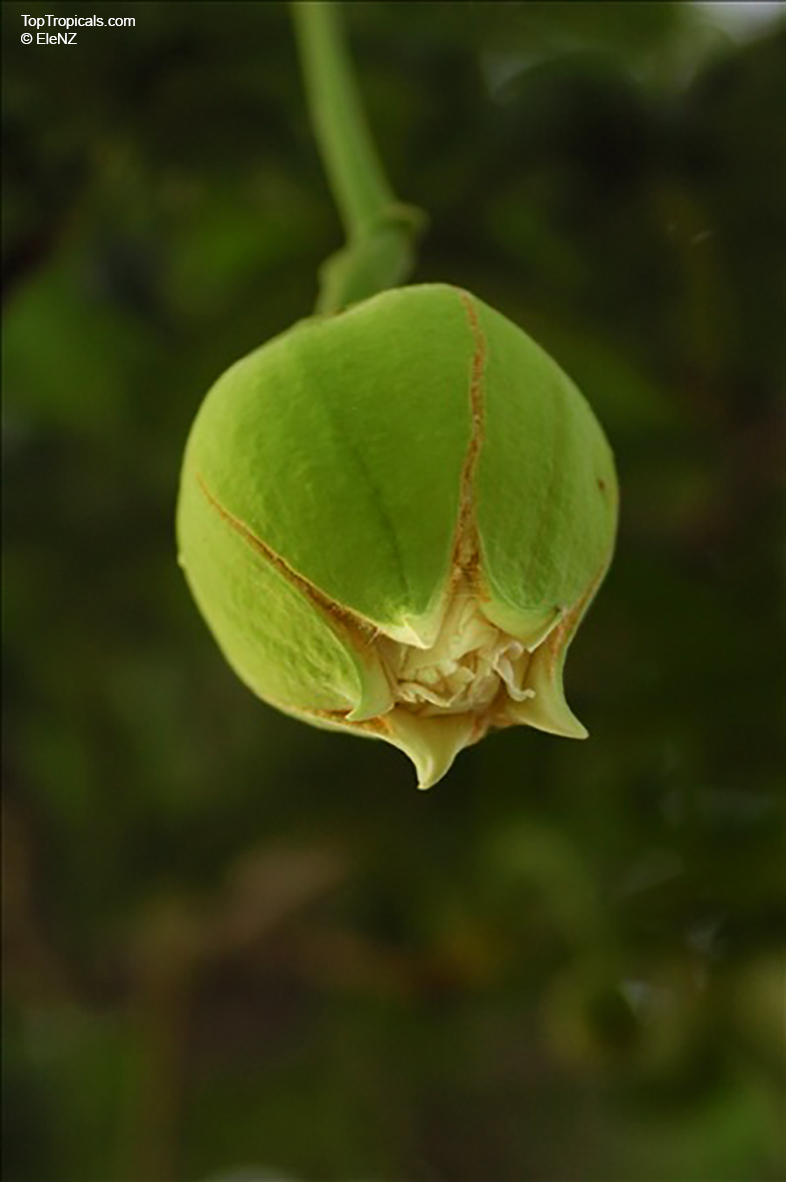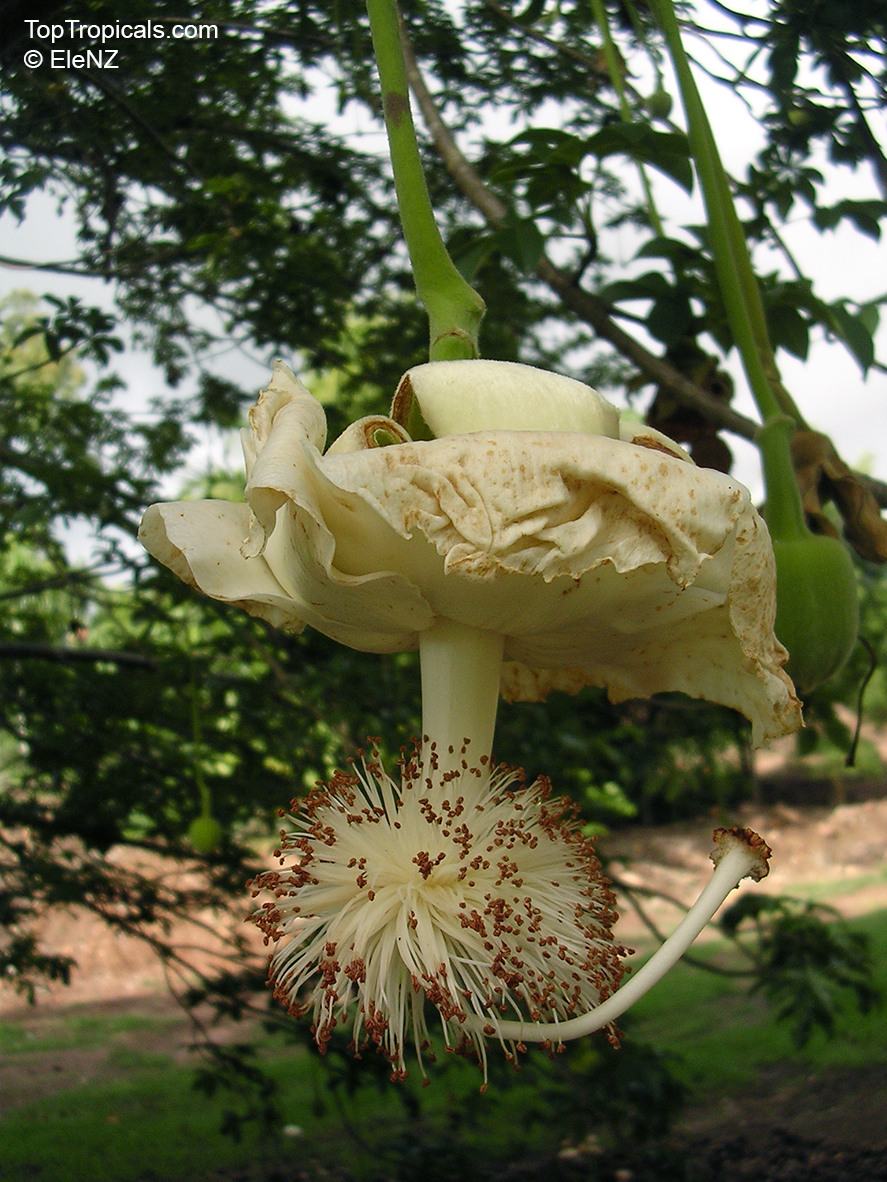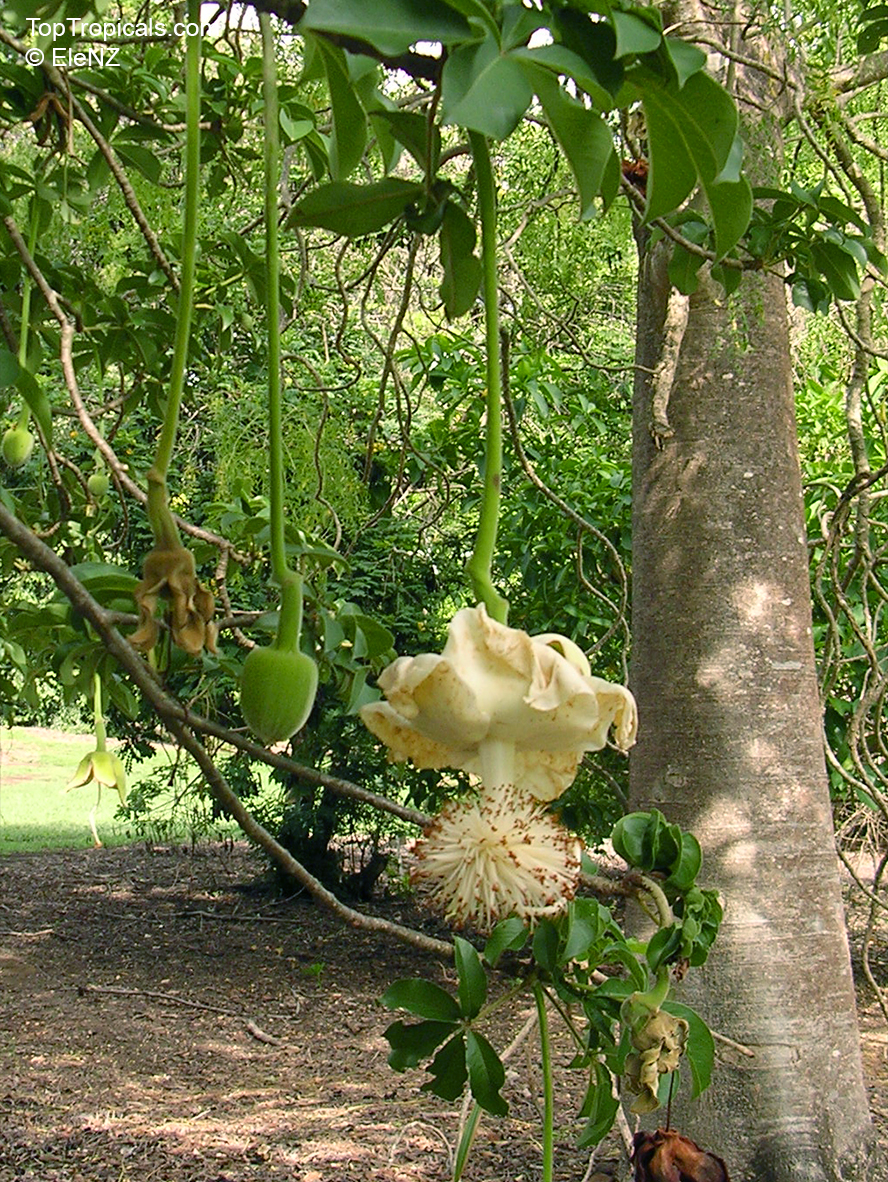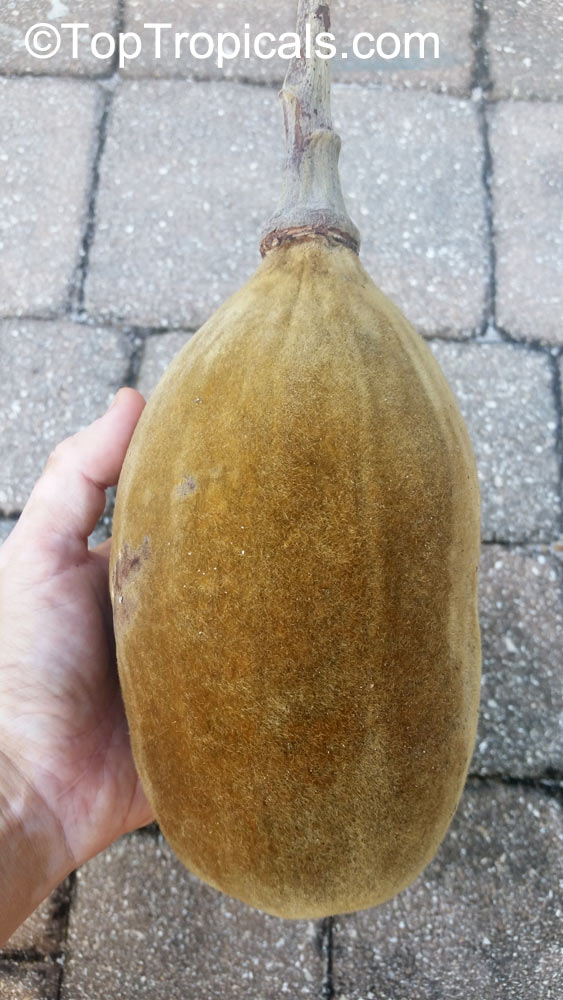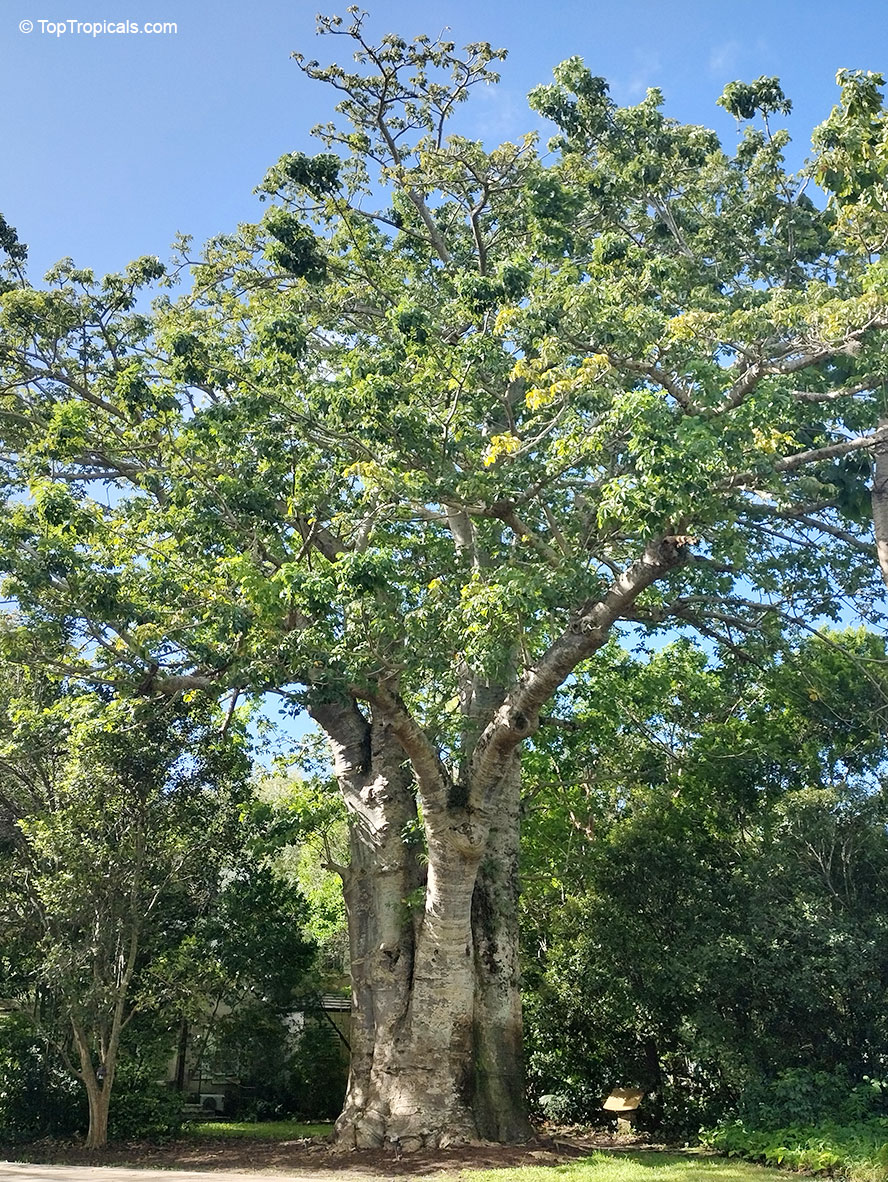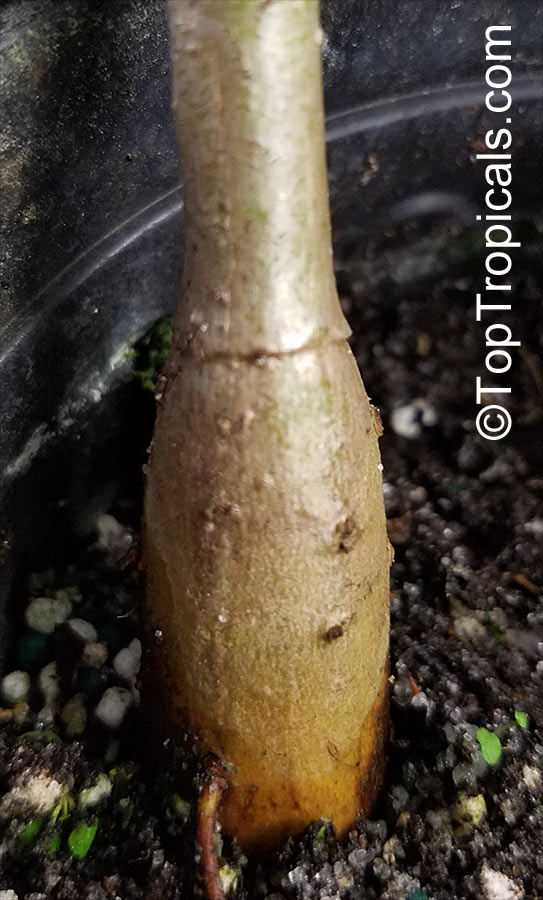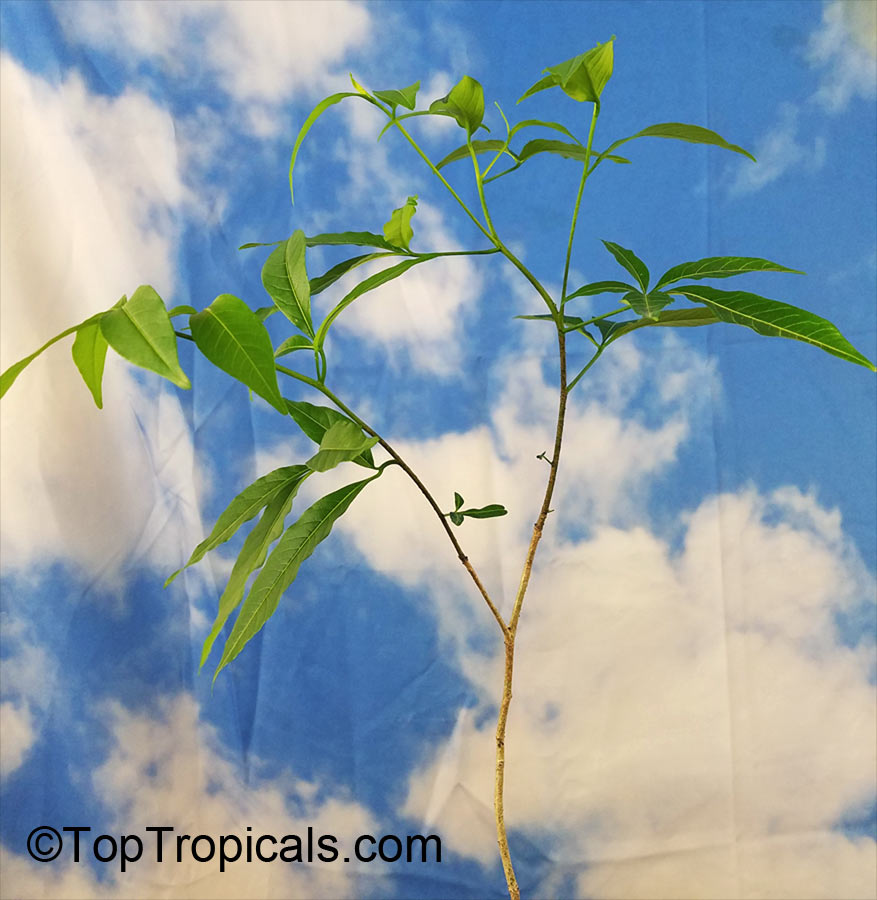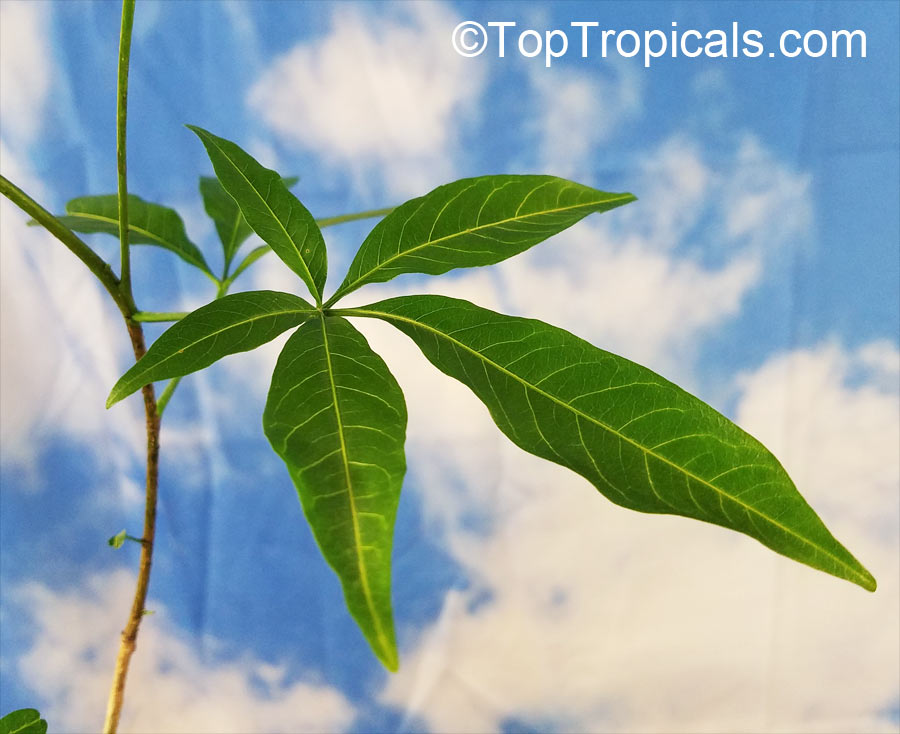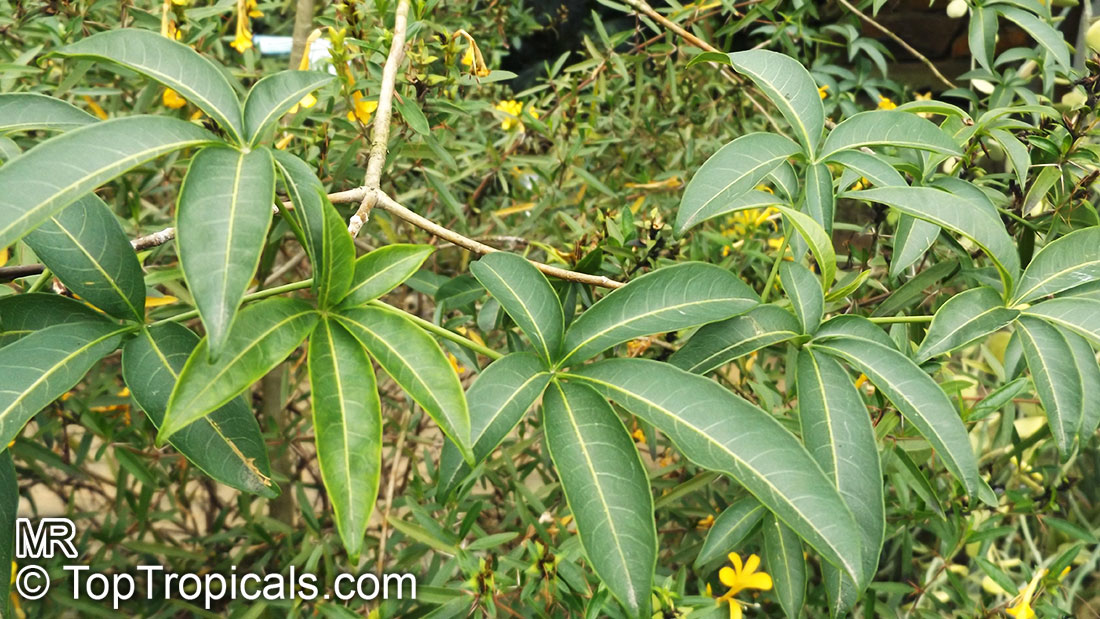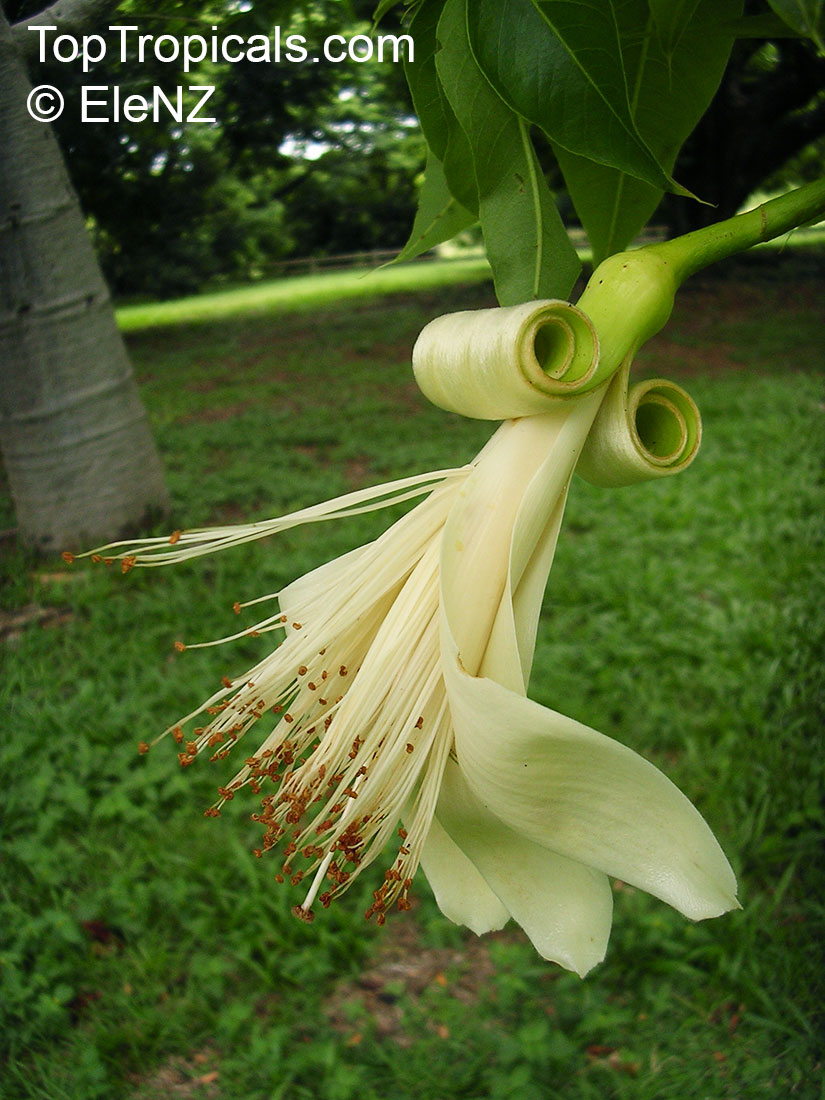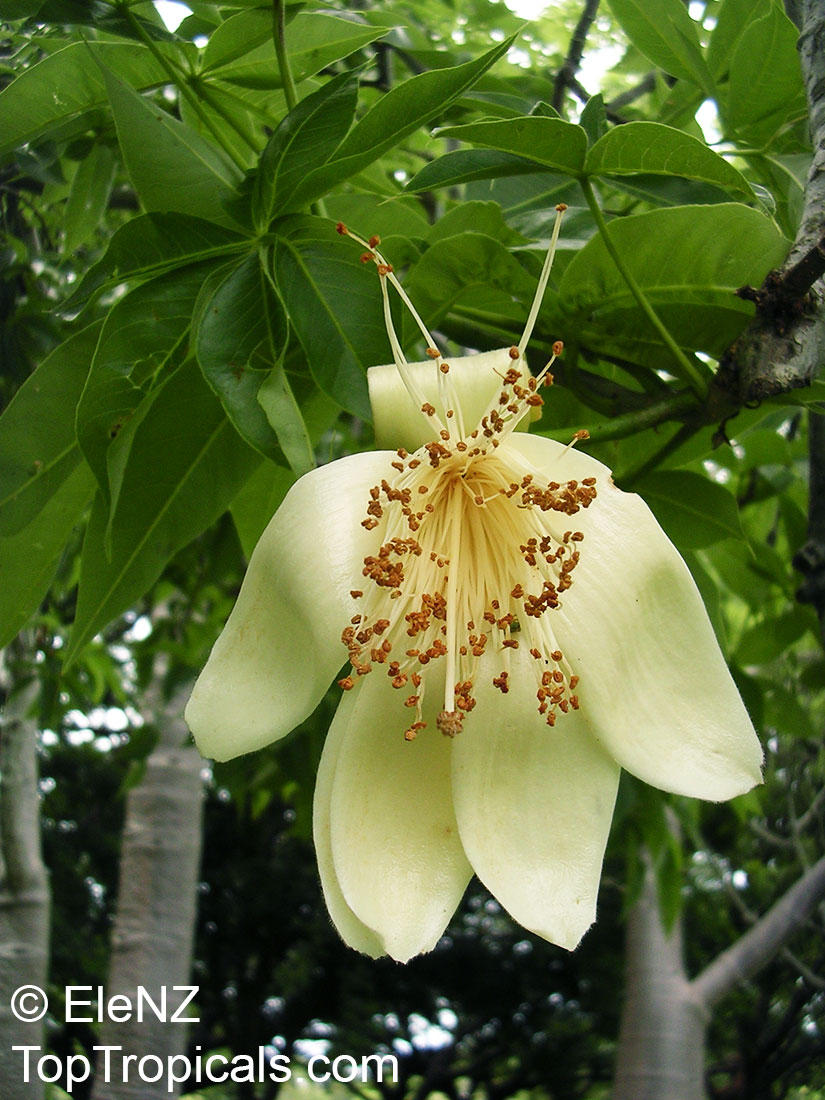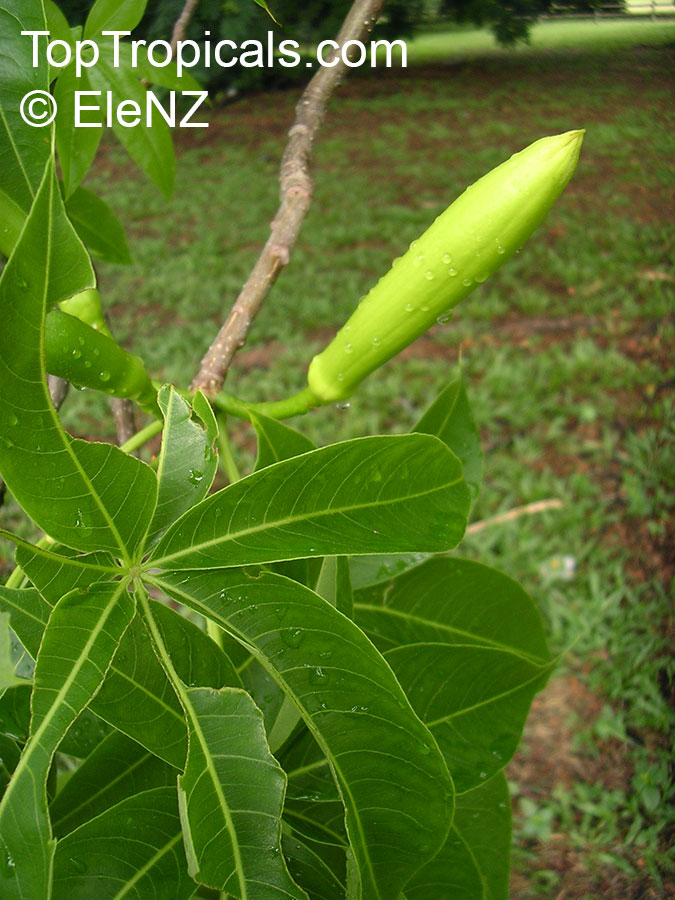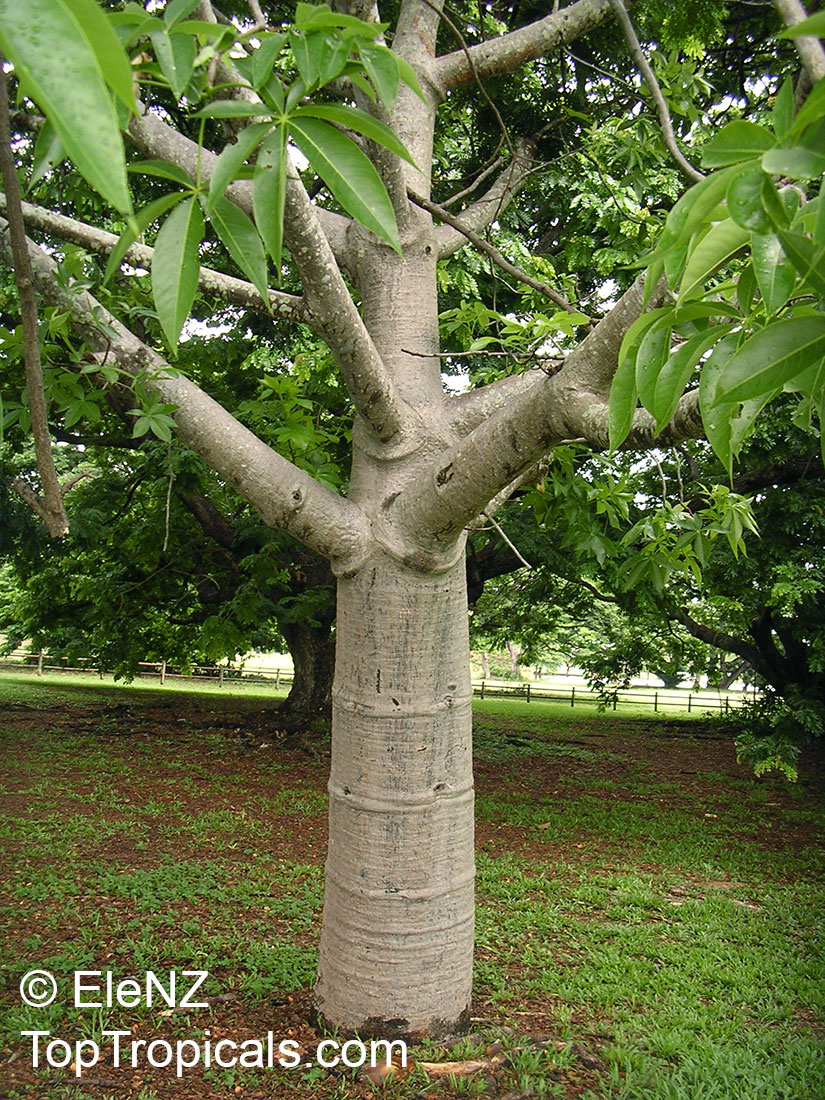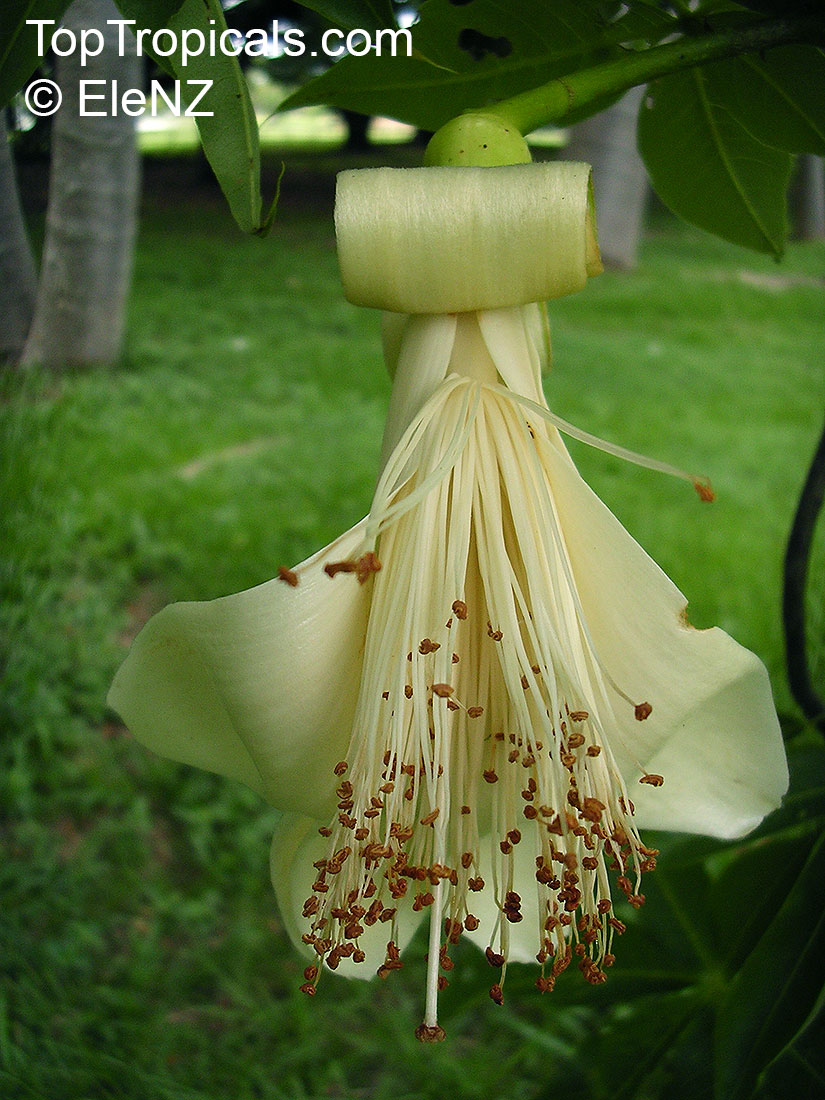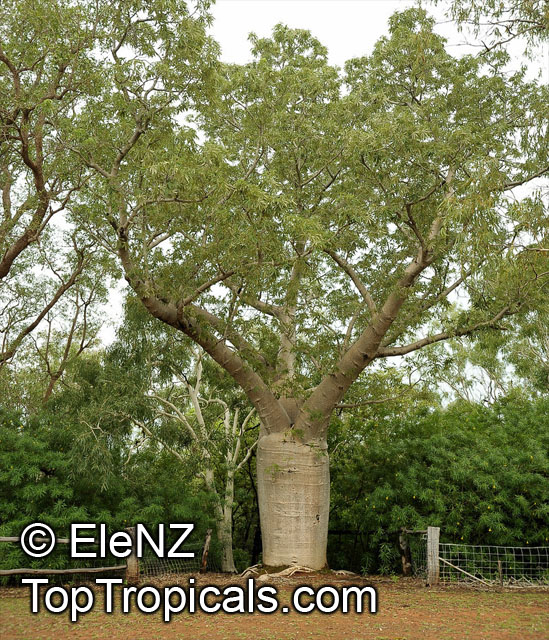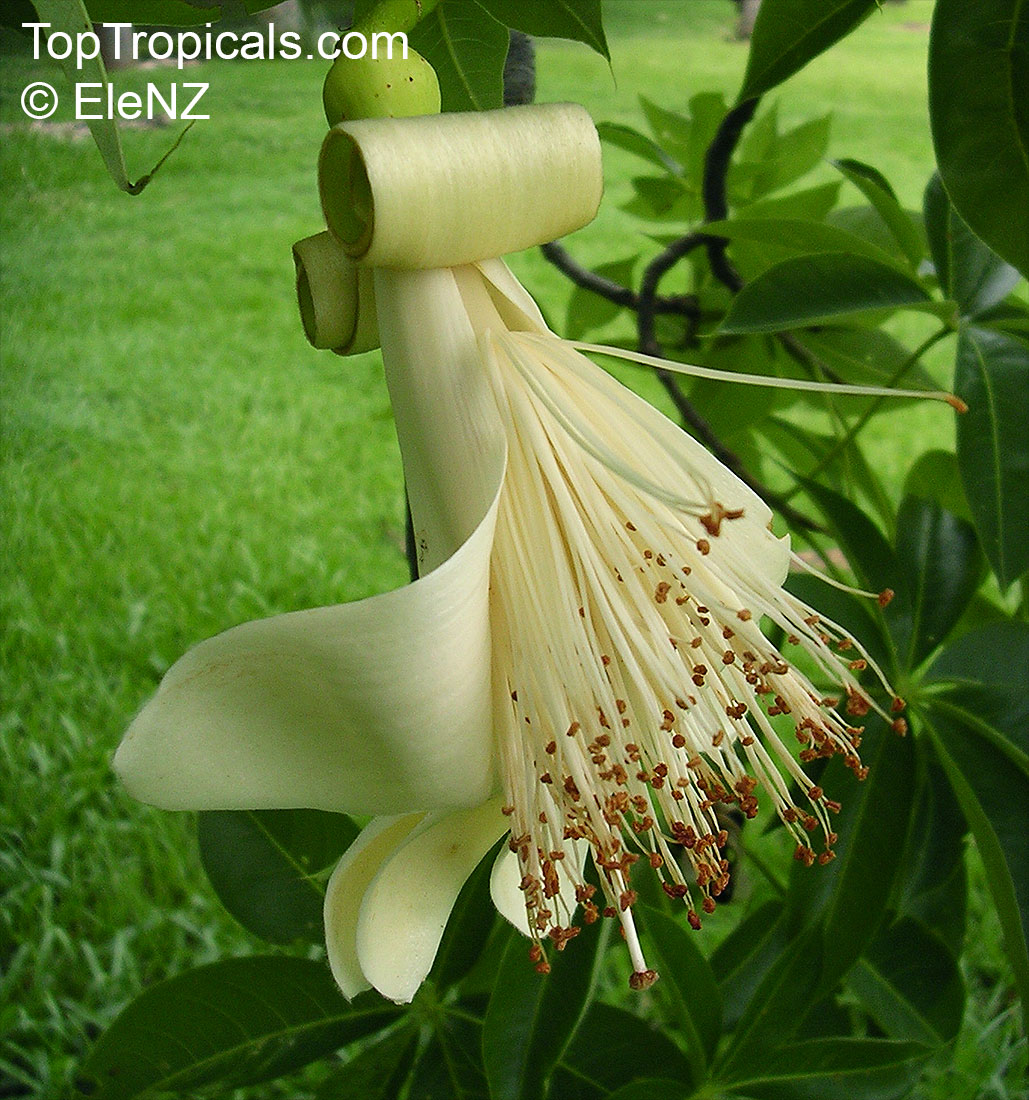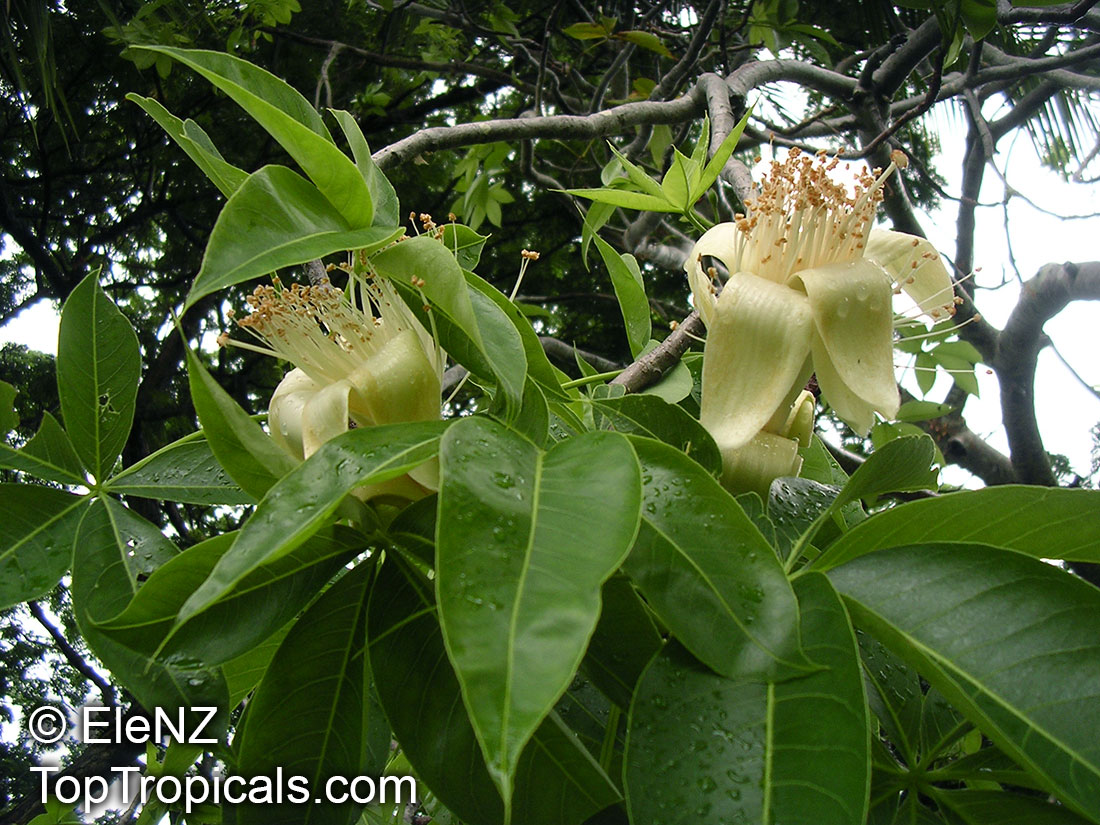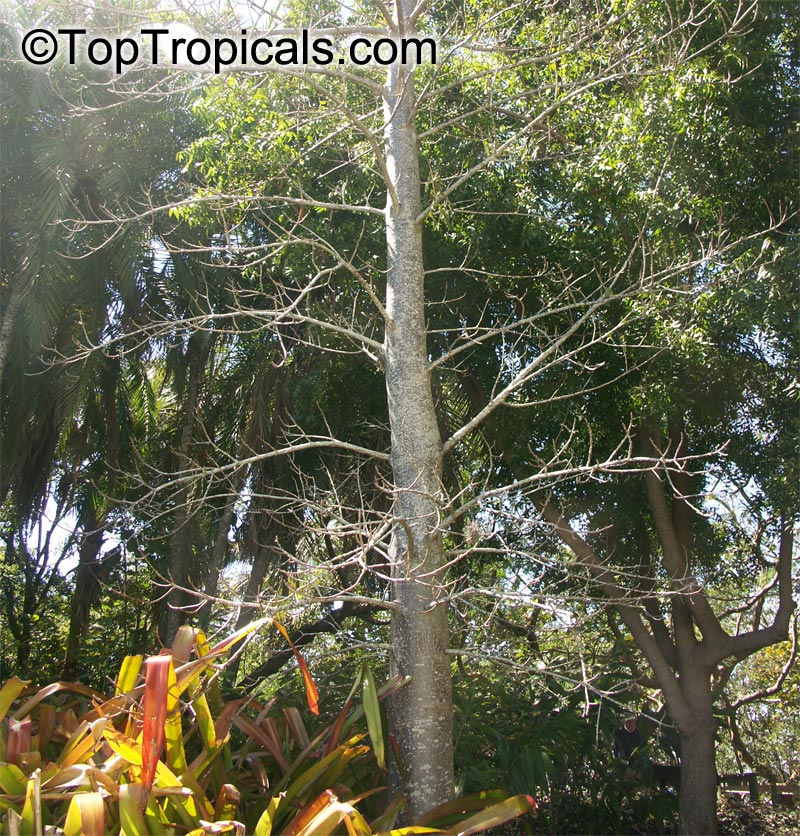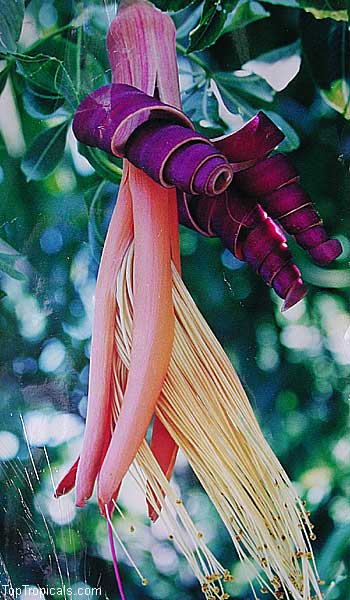Large tree taller than 20 ft - Search results
Top Tropicals Plant Encyclopedia
| Number of plants found: 444 | Next | 
|
Go to page: | 1 | 2 | 3 | 4 | 5 | Last |
Botanical name: Acacia mangium
Common names: Mangium Wattle, Black Wattle, Hickory Wattle
Family: Fabaceae
Subfamily: Mimosoideae
Origin: Australia, Papua New Guinea, Indonesia






Acacia mangium grows up to 30m tall, often with a straight trunk.
Phyllodes lanceolate or ovate, conspicuously veined, light or dark green; flower-heads rod-like, white, sparse, on hairy peduncles about 1 cm long; pods long, slender, coiled or twisted and contorted. Its uses include environmental management and wood.
Botanical name: Acacia saligna
Common names: Golden Wattle, Long-leaved Wattle, Long-leaved Acacia, Sallow Wattle, Coast Wattle, Golden Rods
Family: Fabaceae
Subfamily: Mimosoideae
Origin: Eastern Australia





Grows to a height of more than 20 feet, making it a good choice for providing shade and background to many other plants. It is native to Eastern Australia, however, it has been successfully grown in many other regions that have USDA hardiness zones of 9 to 11. When grown outdoors it needs to be in full sun, however it can tolerate partial shade, making it a great choice for any garden.
Acacia saligna requires moderate watering; allowing the soil to dry out slightly before watering it again. The blooms are made of multiple, yellow to orange-colored flowers that bloom for an extended period. These flowers not only look beautiful, but also serve to attract many species of butterflies and hummingbirds to the garden.
In cold regions, where temperatures often drop below below freezing, Acacia saligna can be successfully grown in larger pots. Recommended potting soil for container-grown Golden Wattle should include a combination of peat moss, compost, and perlite or vermiculite. To ensure healthy growth, it is important to make sure that the soil is kept moist, but not soggy. During the winter months, it is recommended to position the pot in an area of the garden that will receive some protection from the elements. Also, remember to wrap the pot in bubble wrap or other insulating material to protect it from frost.
Botanical name: Acer palmatum
Common names: Japanese maple, Palmate maple, Smooth Japanese maple
Family: Sapindaceae
Origin: Japan









Acer palmatum includes thousands of named cultivars with a variety of forms, colors, leaf types, sizes, and preferred growing conditions. Heights of mature specimens range from 0.5 to 25 m (1.5 to 82 ft), depending on type.
Botanical name: Acer sp.
Common names: Red Maple, Soft Maple
Family: Sapindaceae









Maple is a widespread deciduous tree popular in eastern North America.
Many of its features, especially its leaves, are quite variable in form. Among these features it is best known for its brilliant deep scarlet foliage in autumn. Red Maple is adaptable to a very wide range of site conditions. It can be found growing in swamps, on poor dry soils, and most anywhere in between. Elevation is also not a limiting factor in its range. Due to its attractive fall foliage and pleasing form, it is often used as a shade tree for landscapes. It is used commercially on a small scale for maple syrup production as well as for its medium to high quality lumber. It is the State Tree of Rhode Island. It is very cold hardy.
Maple is a very popular plant in Japan and a subject for bonsai. Autumn in Japan is celebrated with colorful autumn leaves known as momijigari. The foliage of trees light up the Japanese landscape. Scarlet Japanese maples flash against emerald conifers, this is the beauty of momijigari as you view the spectacular colors of changing leaves.
The maples have long been known to be closely related to the family Sapindaceae.
This plant is grown from seed collected in Florida, so it is suited for planting in Florida. It may perform worse up North.
Recommended Fertilizer: SUNSHINE Robusta - Rapid Growth Booster
Botanical name: Acrocarpus fraxinifolius
Common names: Pink Cedar, Balangi, Kurungatti
Family: Fabaceae
Subfamily: Caesalpinioideae
Origin: South Asia






It has a relatively wide range of soil tolerances, but appreciate a fertile, organic-rich soil with regular water, but can tolerate some drought. It is best grown in USDA Zones 9-11 and is quite adaptable to most soil types and climates. For gardens in cold regions, it can be grown in a large container, brought indoors or planted in a protected location in winter. In general, it will require very little care and should be free from pests and diseases. Prune as needed to shape or remove dead or damaged branches, otherwise it does not require regular pruning.
Acrocarpus fraxinifolius (Pink Cedar) is a big tree that can grow taller than 20 feet, but can also be pruned to create a small tree of up to 10-20 feet. It is native to South Asia, including countries such as Bangladesh, Bhutan, China, India, Indonesia, Laos, Myanmar, Nepal, and Thailand. It thrives when planted in full sun and given regular water, and its soil requirements are relatively tolerant, but it enjoys being grown in a fertile, organic-rich soil. It is adorned with ornamental foliage in various shades from deep pink to a bright lime green, and in the early spring brings forth red, crimson, and vinous flowers in small racemes.
This plant is cold hardy up to a minimum of 28°F for short periods of time, so it can be grown in USDA Zones 9-11 with minimal care and protection from pests and diseases. Pruning should be done as needed only, to remove dead or damaged branches or to shape. For gardens in colder regions, it can be grown in a large container and brought indoors in winter, or planted in a sheltered location. In terms of plant care, it is important to water deeply and occasionally and to provide adequate protection from frost.
Botanical name: Adansonia digitata
Common names: Baobab, Cream of Tartar tree, Monkey-bread tree, Lemonade tree, Upside-down Tree
Family: Malvaceae (Formerly:Bombacaceae)
Subfamily: Bombacoideae
Origin: South Africa







Regarded as the largest succulent in the world, the baobab tree is steeped in a wealth of mystique, legend and superstition wherever it occurs in Africa. It is a tree that can provide food, water, shelter, and relief from sickness. During drought, elephants obtain moisture by chewing on the wood. The stem is covered with a bark layer, which may be 50-100 mm thick. The leaves are hand-sized and divided into 5-7 finger-like leaflets. The baobab is a deciduous, meaning that in winter, it sheds all of its leaves and grows new ones in spring. The large, pendulous flowers (up to 200 mm in diameter) are white and sweetly scented ,that are pollinated by bats. They are followed by velvety fruits full of edible acidic pulp sought by both monkeys and people. In the dryer, temperate regions of Africa, Baobabs are a tree of myth and legend. Baobabs are carefully tended by rural peoples and are particularly useful: the hollow trunks of baobabs are used as dwellings and storehouses, traditional medicines are obtained from its bark, leaves, and fruit. Its bark can be pounded to produce fibers that are used to make baskets, cloth, hats, mats, nets, rope, and strings (interestingly, after the bark is stripped away, the baobab grows new bark). Its leaves are cooked and eaten as greens, and are dried for use as a seasoning and a sauce and stew thickener. Its fruit is rich in vitamin C, calcium, and iron, and is called pain de singe or monkey bread. It can be roasted, ground, and boiled to make a coffee-substitute; it is also soaked in water to make a refreshing drink, and is used as a flavoring. They will make a handsome addition to a large garden, estate, or large parkland providing the soil is not waterlogged. Baobabs cannot tolerate even mild frost. When they are young, baobabs do not resemble their adult counterparts, the stems are thin and inconspicuous, and their leaves are simple and not divided into the five to seven lobes of the adult trees. Saplings can be effectively grown in containers or tubs for many years before becoming too large and requiring to be planted into the ground.
Recommended Fertilizer: SUNSHINE Robusta - Rapid Growth Booster
This item can not be shipped. Pick up only. We can provide local delivery around Ft. Myers or Sebring, Florida. Contact us for an estimate. Non-pickup orders are subject to restocking fees.
Last one
Botanical name: Adansonia grandidieri
Common names: Grandidier's Baobab, Giant Baobab
Family: Malvaceae (Formerly:Bombacaceae)
Subfamily: Bombacoideae
Origin: Madagascar







Native to Madagascar and growing with a massive, cylindrical bole, Grandidier's Baobab, Adansonia grandidieri, can be a large tree, reaching up to 80 ft tall. The tree is mostly found in a restricted area, threatening its survival due to habitat destruction and regeneration. Despite being threatened, Grandidier's Baobab remains very versatile and is popular among bonsai enthusiasts.
Grandidier's Baobab can prosper in full sun, or on rare occasions in partial shade, and needs moderate watering. If grown in cold regions, pots should be elevated to ensure better drainage and should be sheltered during winter. It has a flat-topped, light crown with few branches, and white to off-white flowers. It produces edible fruits, with oil-rich seeds, making it a valuable source of food and fiber for thatching.
Grandidier's Baobab can produce hundreds of fruits, depending on the age and weather conditions, each fruit weighing about 250g. The fruits are orange and oval-shaped with a pulp containing a few large seeds. It has a pleasant taste and can be used to make refreshing drinks, jams, salads, and other desserts. Grandidier's Baobab is also rich in vitamins, minerals and antioxidants such as vitamin C, phosphorus, and fiber, providing healthy benefits and being an important component of the Malagasy diet.
Botanical name: Adansonia gregorii
Common names: Boab, Baobab, Australian Bottle Tree
Family: Malvaceae (Formerly:Bombacaceae)
Subfamily: Bombacoideae
Origin: Northern Territory, West Australia






Adansonia gregorii is native to the northern parts of Western Australia and the Northern Territory. Once appropriate conditions are provided, it thrives in USDA zoning 9-11, and can reach up to 20 feet tall. It prefers a full sun location and regular watering, usually around 1-2 times a week. The swallow-shaped trunk, in combination with its light green leaves, gives the plant an interesting texture and an overall rounded-look.
The flowers are the showpieces of the Adansonia gregorii, ranging from off-white to white in color and bell-like in shape. They are known to attract butterflies and hummingbirds which adds a whimsical, airy feel to the garden.
The Boab tree is deciduous and sheds its leaves during the winter and spring months. Once it goes dormant in the late summer or early autumn, it is best to preserve the existing moisture level.
Adansonia gregorii is best grown in pots in colder regions. Loamy soil is preferred and watering once a week is more than enough. Depending on the climate and indoor location and temperature, the Boab tree may benefit from careful pruning to reduce its growth so it can comfortably fit in its container. Keeping the moisture level during its dormant season is essential to prevent any damage to the plant.
Botanical name: Adansonia madagascariensis
Common name: Madagascar Baobab
Family: Malvaceae (Formerly:Bombacaceae)
Subfamily: Bombacoideae
Origin: Madagascar






This tree has a unique, swollen bottle-like trunk. This deciduous tree bears large, red flowers and ball-like fruits.
Botanical name: Adansonia rubrostipa
Common name: Baobab
Family: Malvaceae (Formerly:Bombacaceae)
Subfamily: Bombacoideae
Origin: West Coast of Madagascar







Medium to large trees in between 17-65 feet in height. This tree can either have; sphere-like, bottle-shaped, or rarely, tapering trunks. The irregular crown, has major branches most often horizontal, rarely conical spines on upper surfaces of branches. Bark is usually reddish brown and exfoliating. Leaves occur from November to April and the Flowers Usually from February to April, at the latest in June. The fruit ripens from October to November. It has edible fruits, seeds and roots.
| Next |  |
Use link to repeat this search:
https://toptropicals.com/cgi-bin/garden_catalog/cat.cgi?search_op=and&keyword_op=and&language=e&number=10&no_change_lang=1
&v1=btr&user=tt&sale=1&first=0
